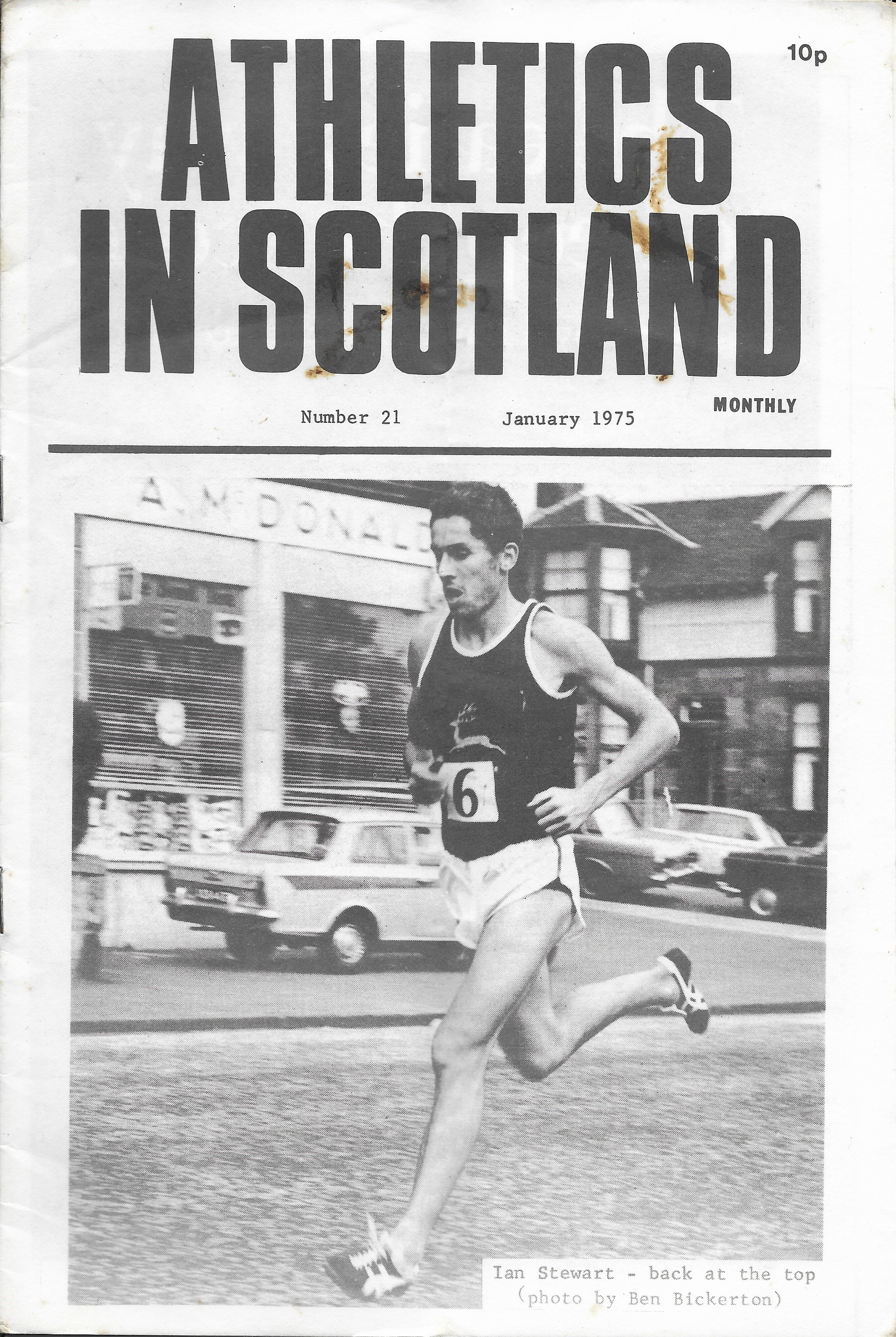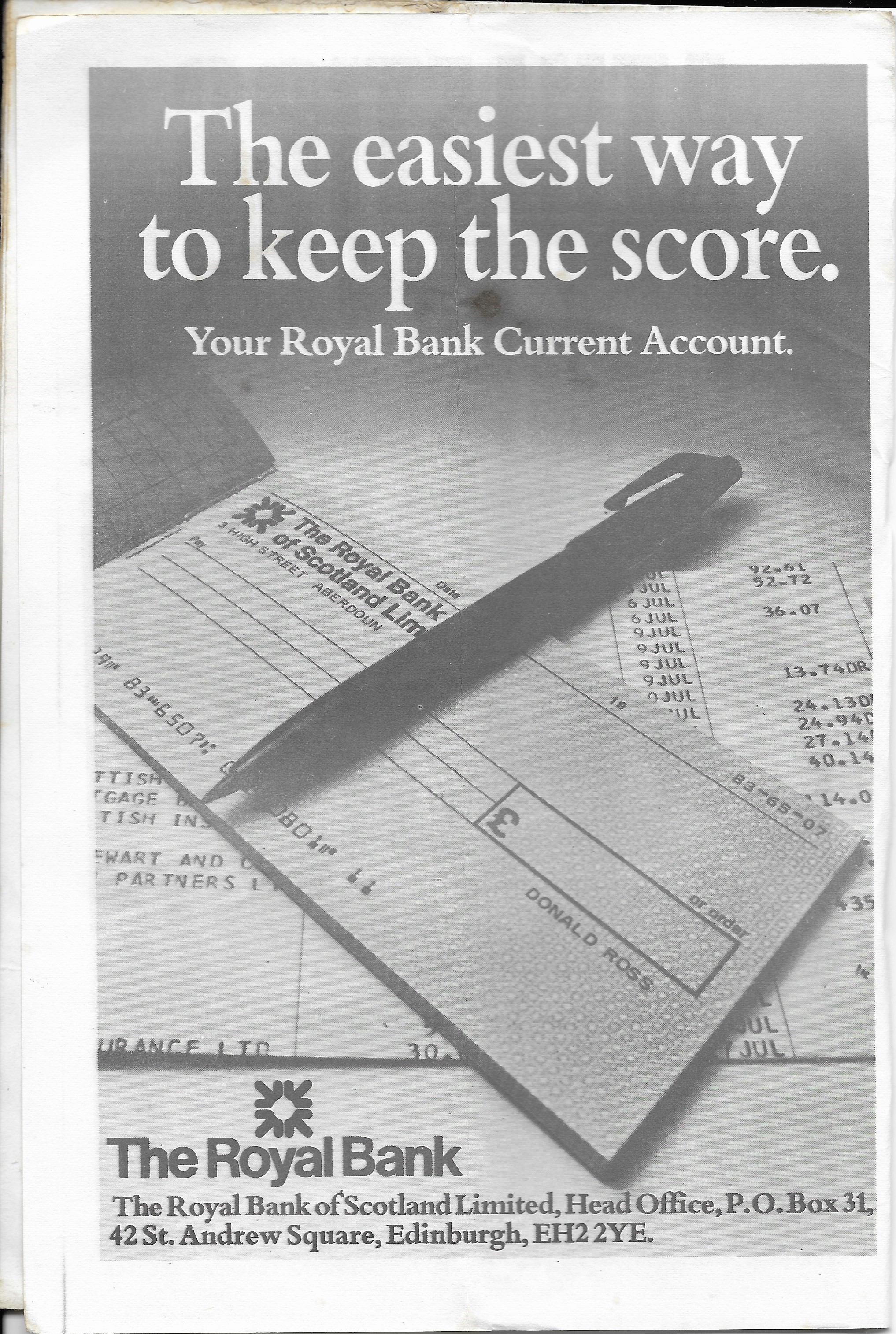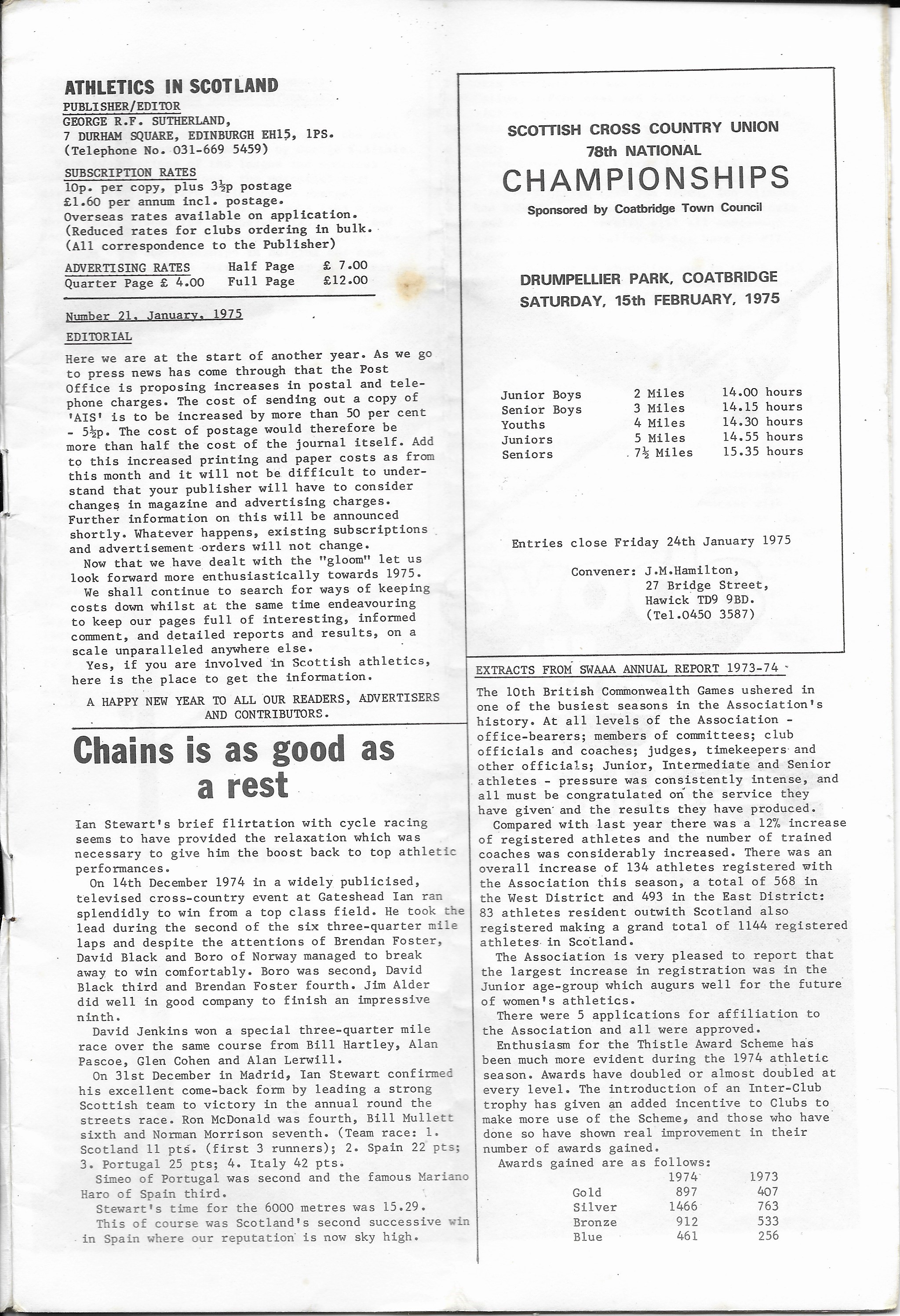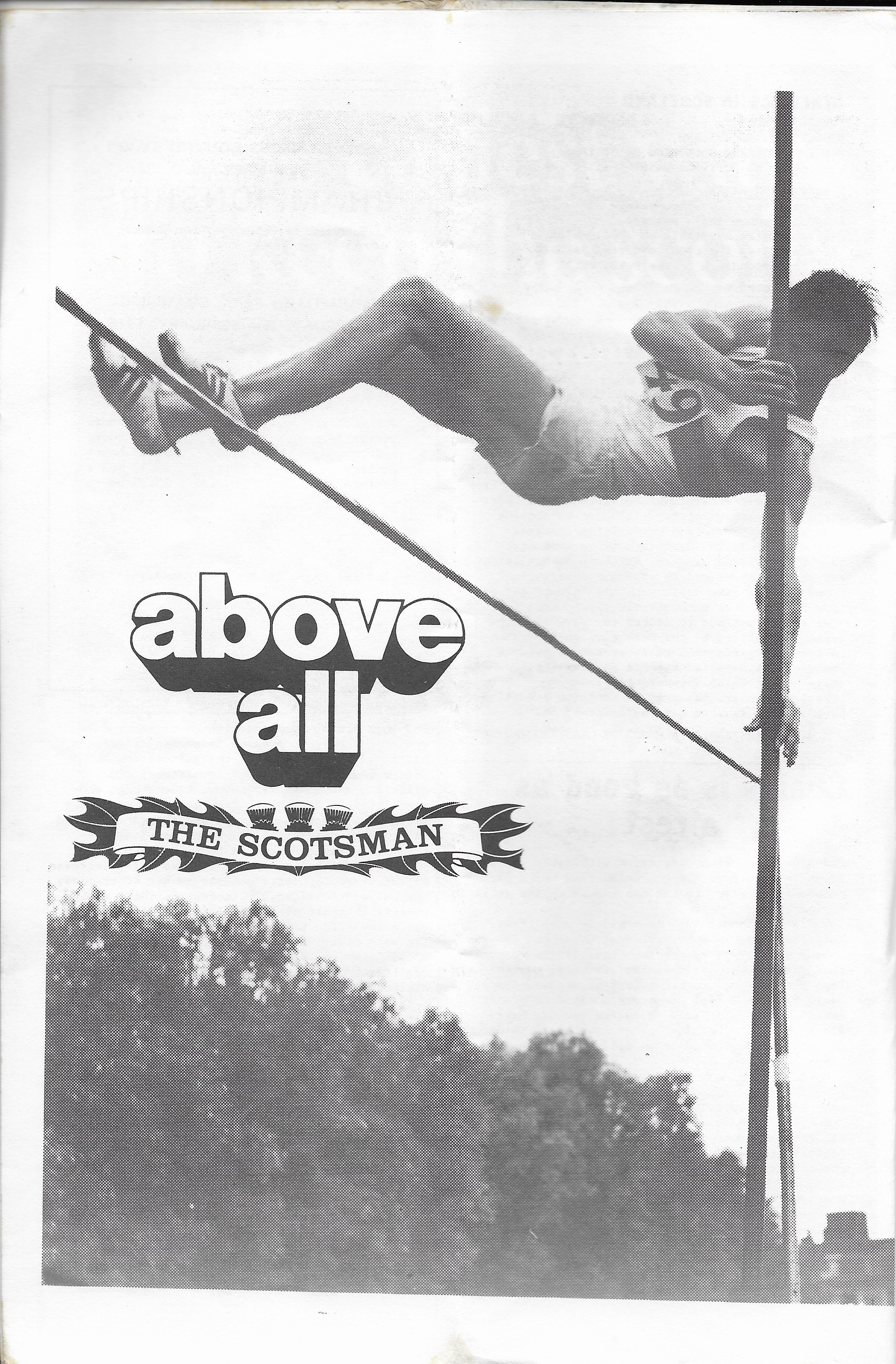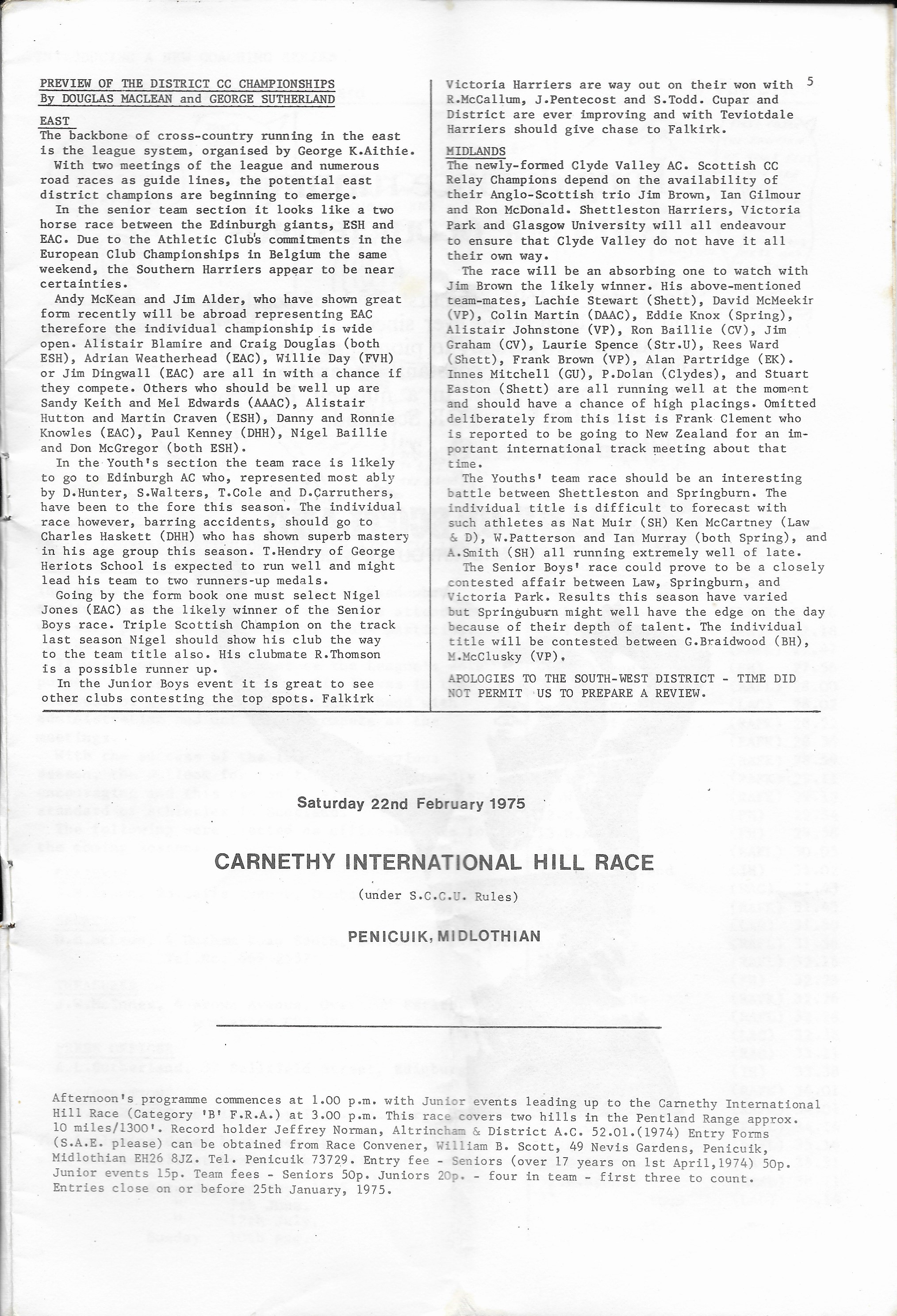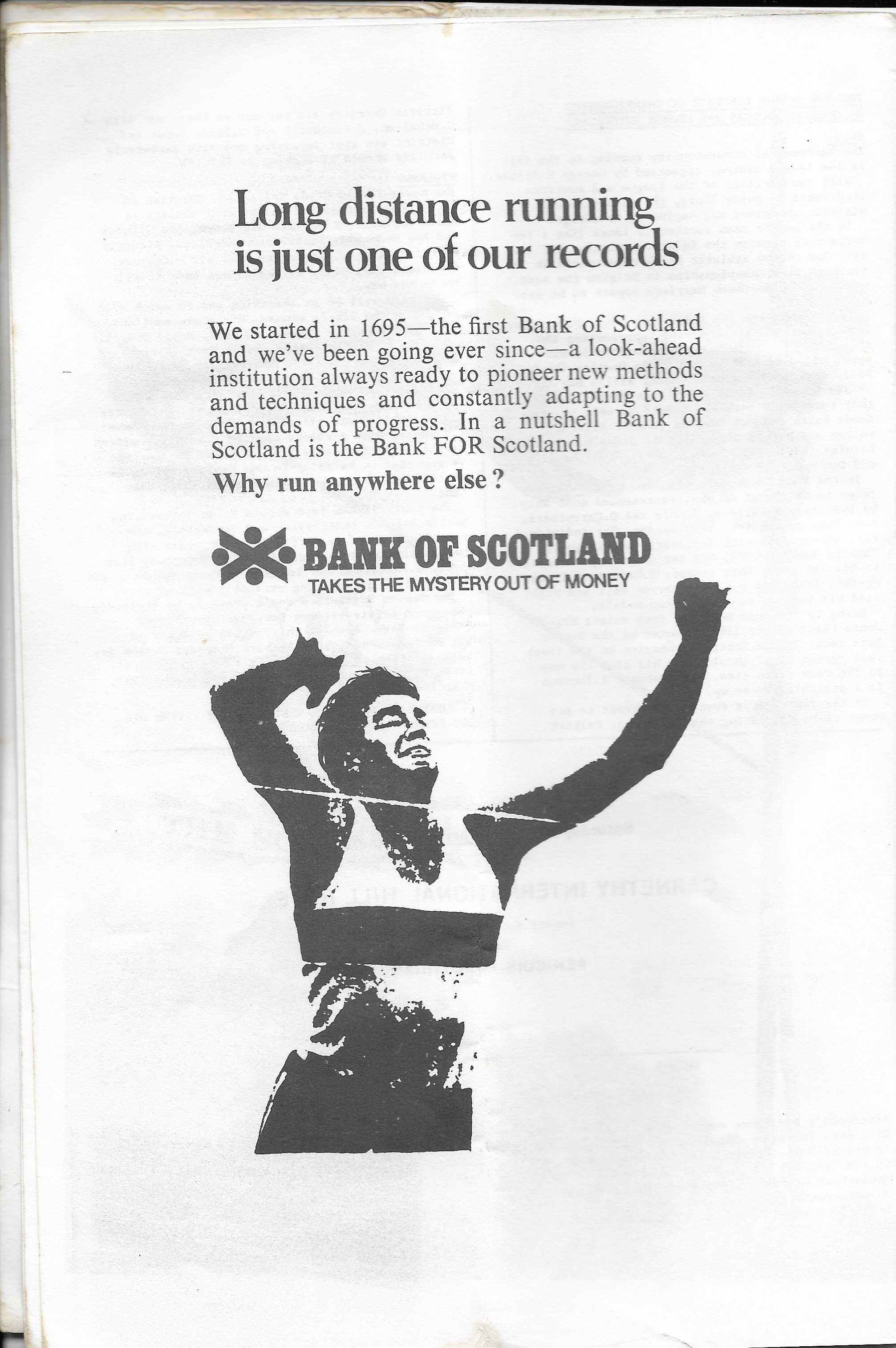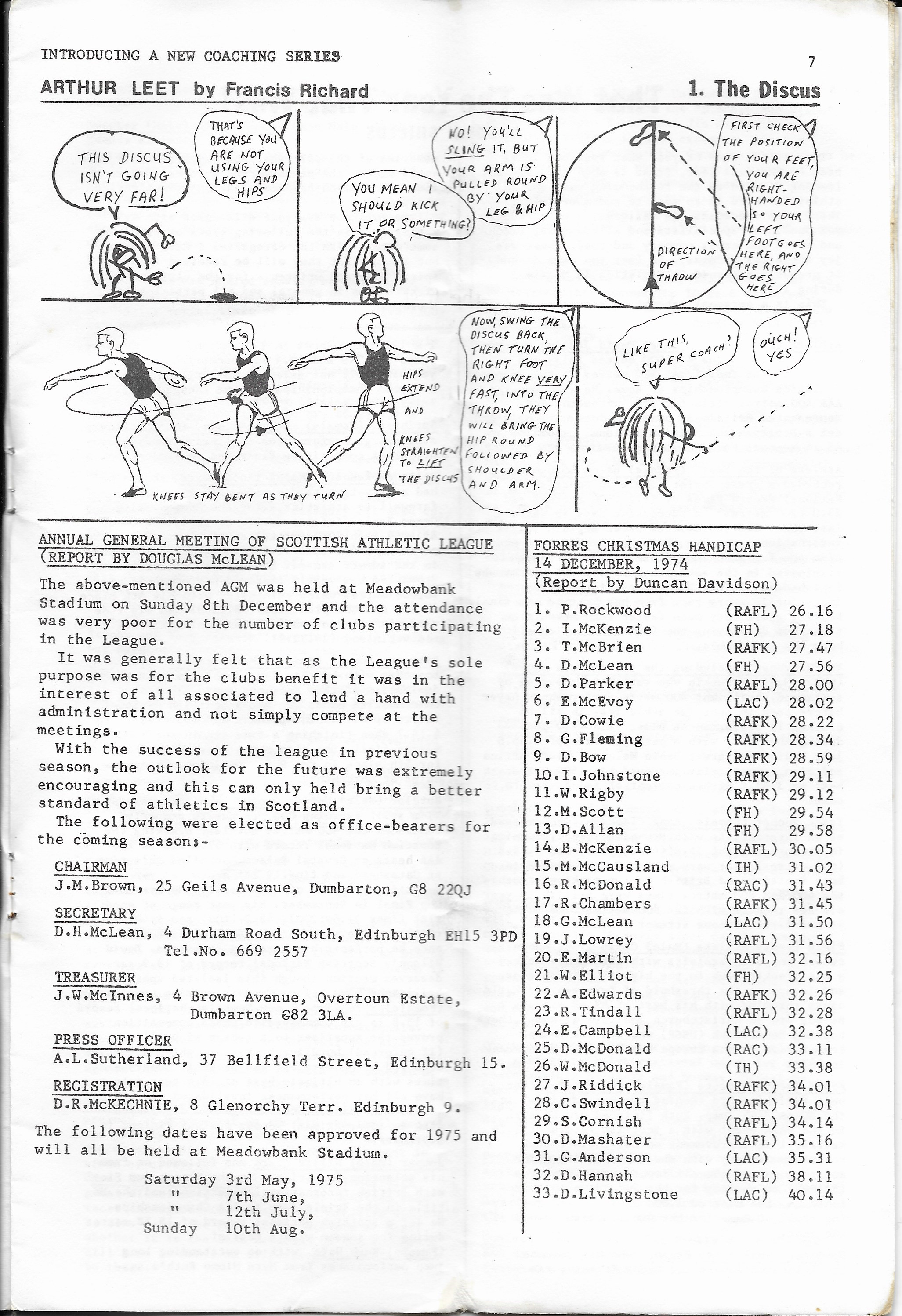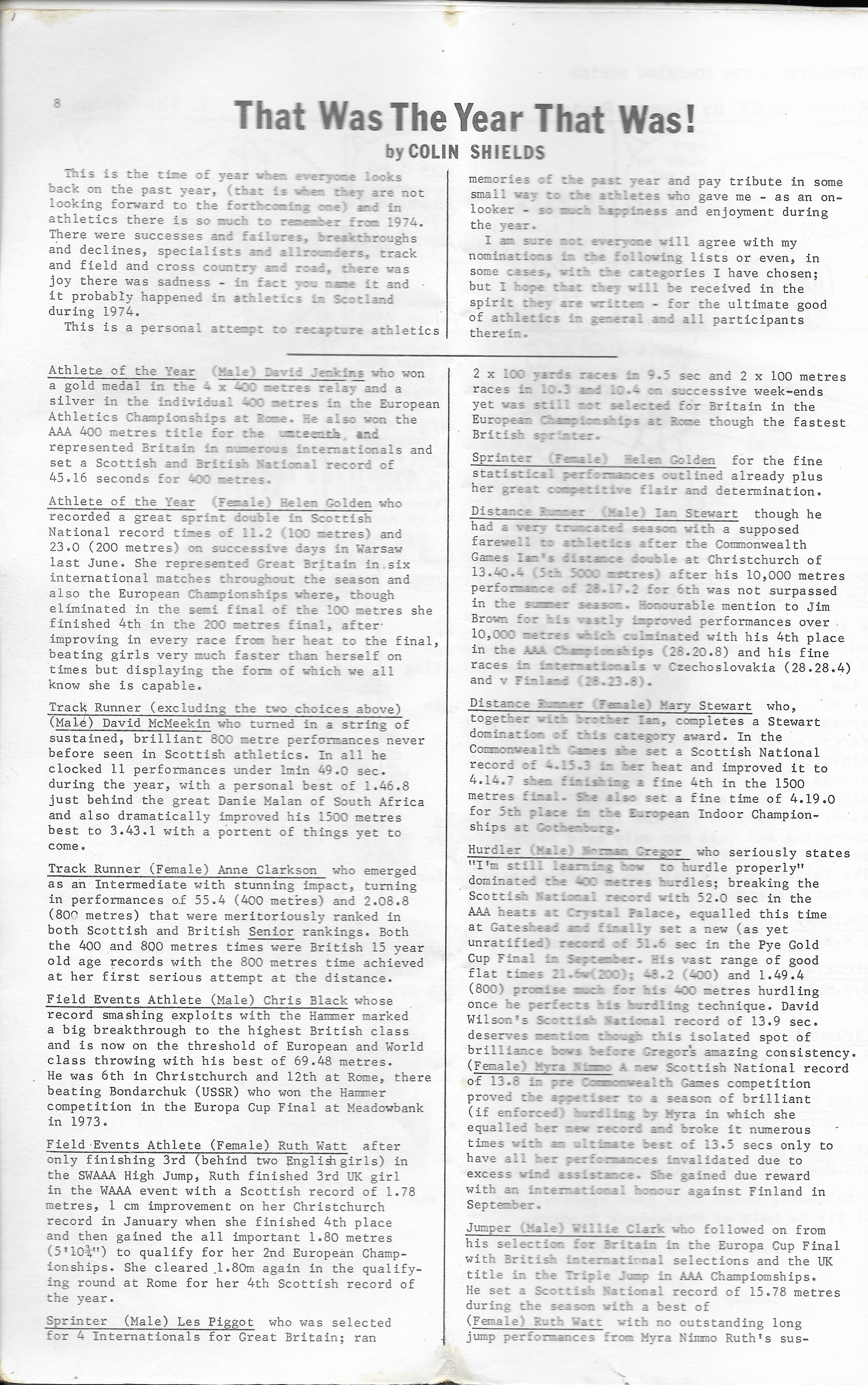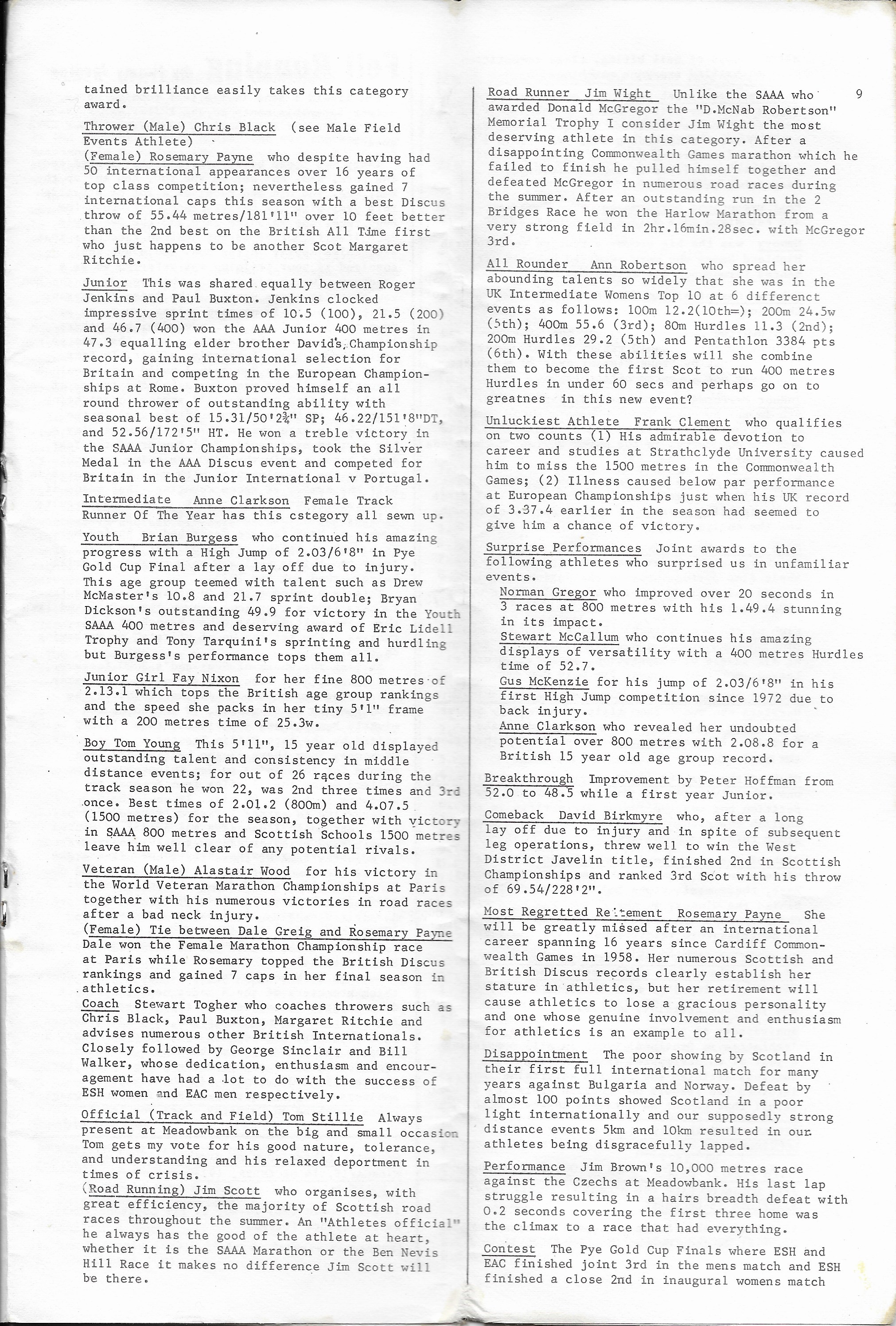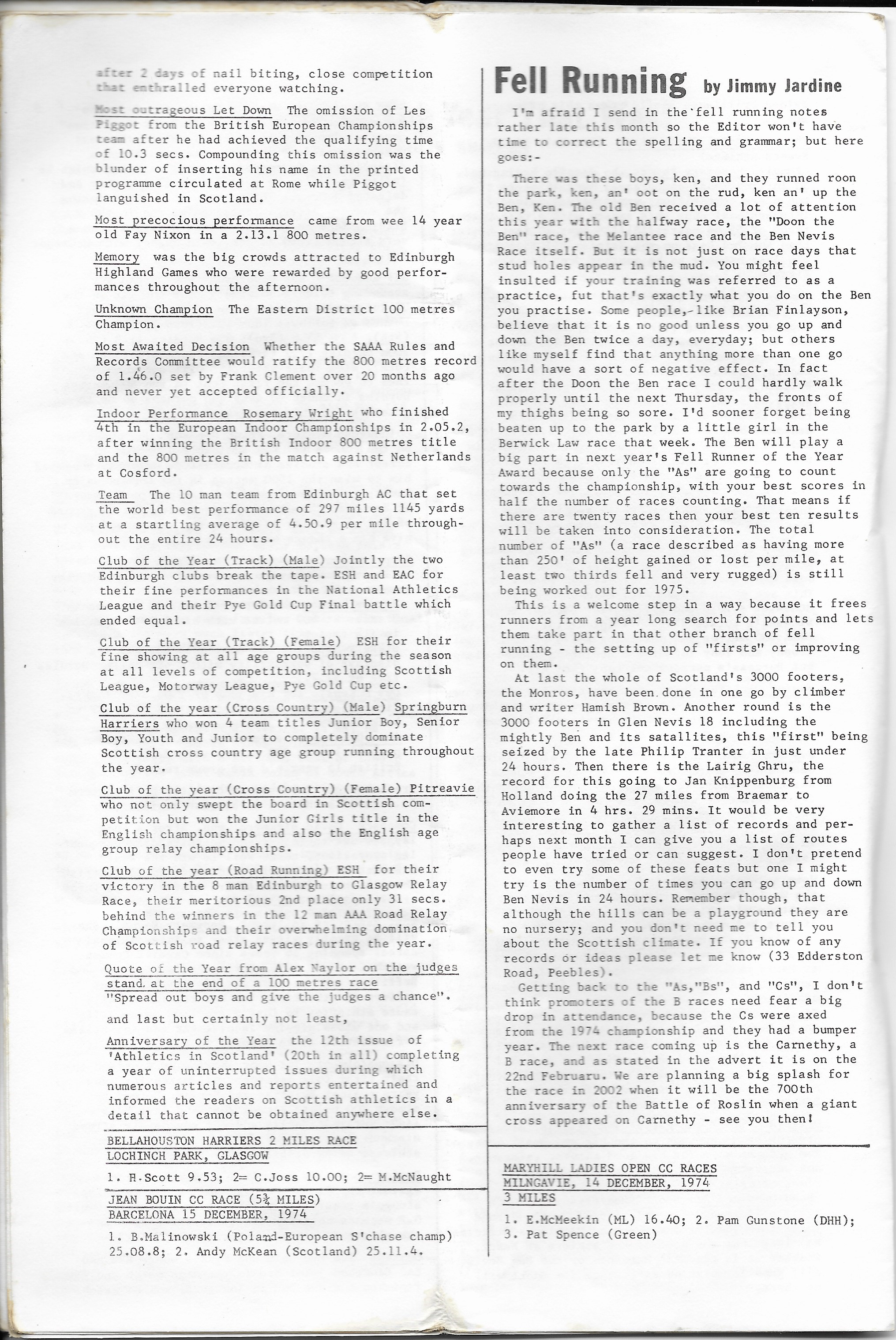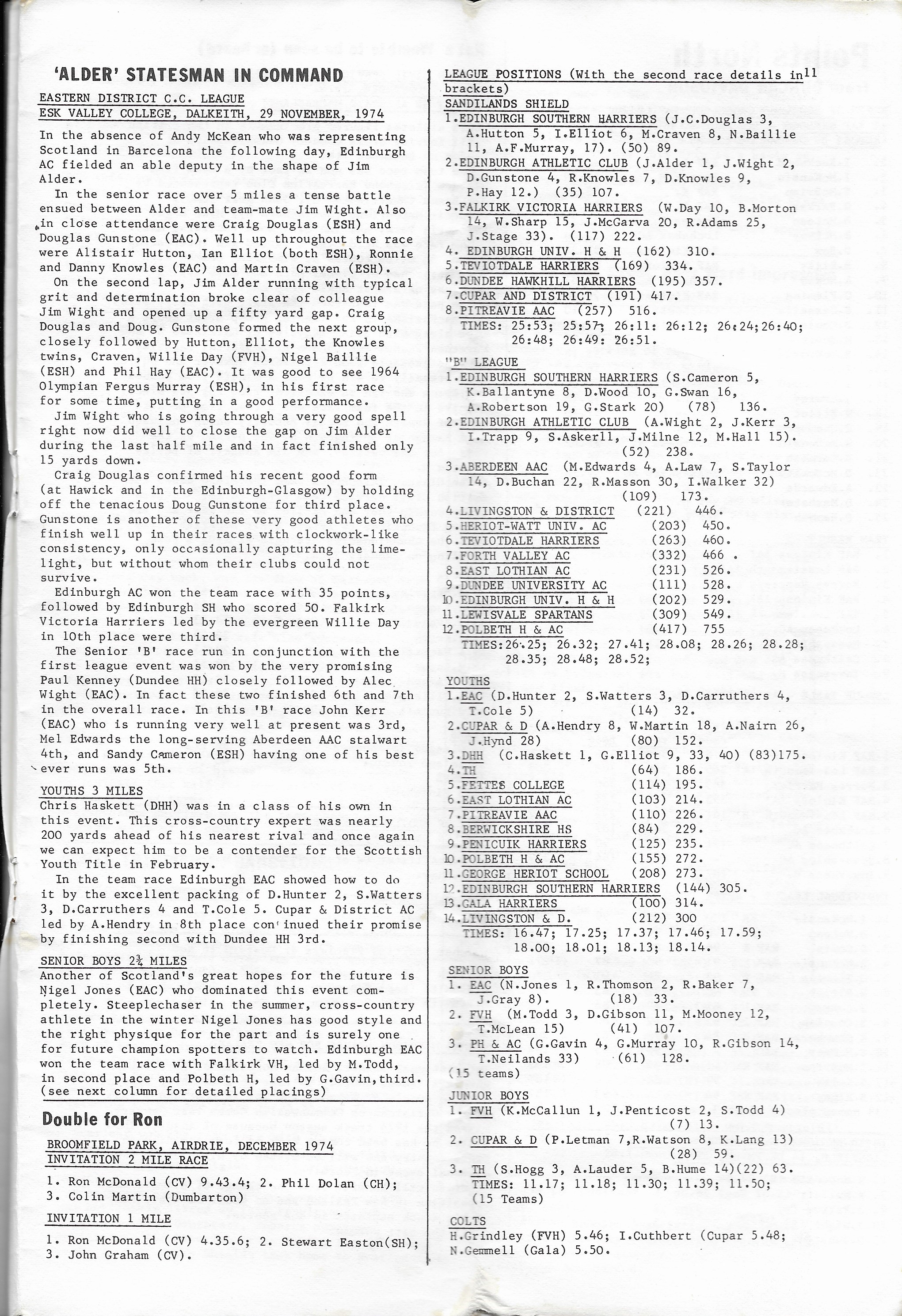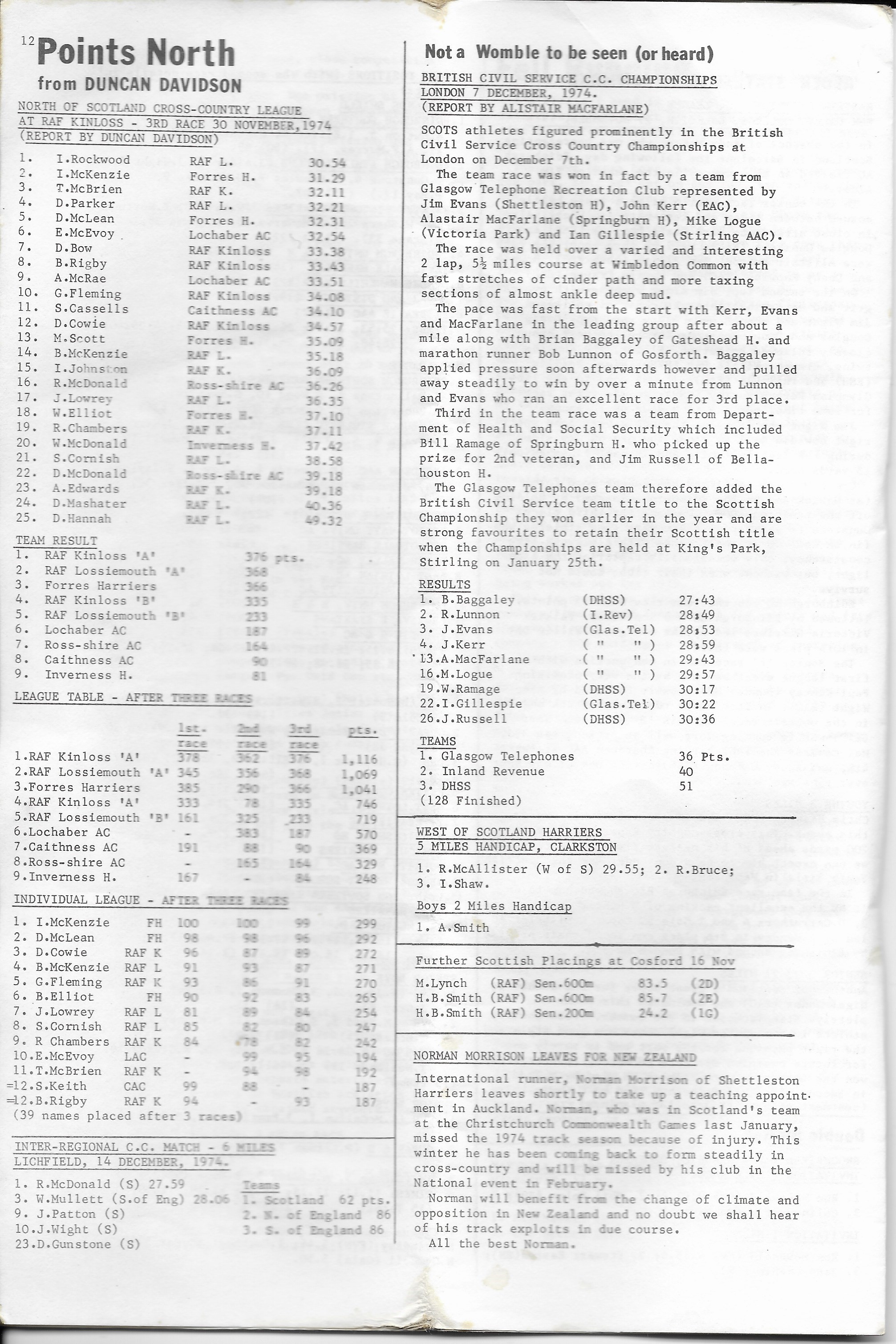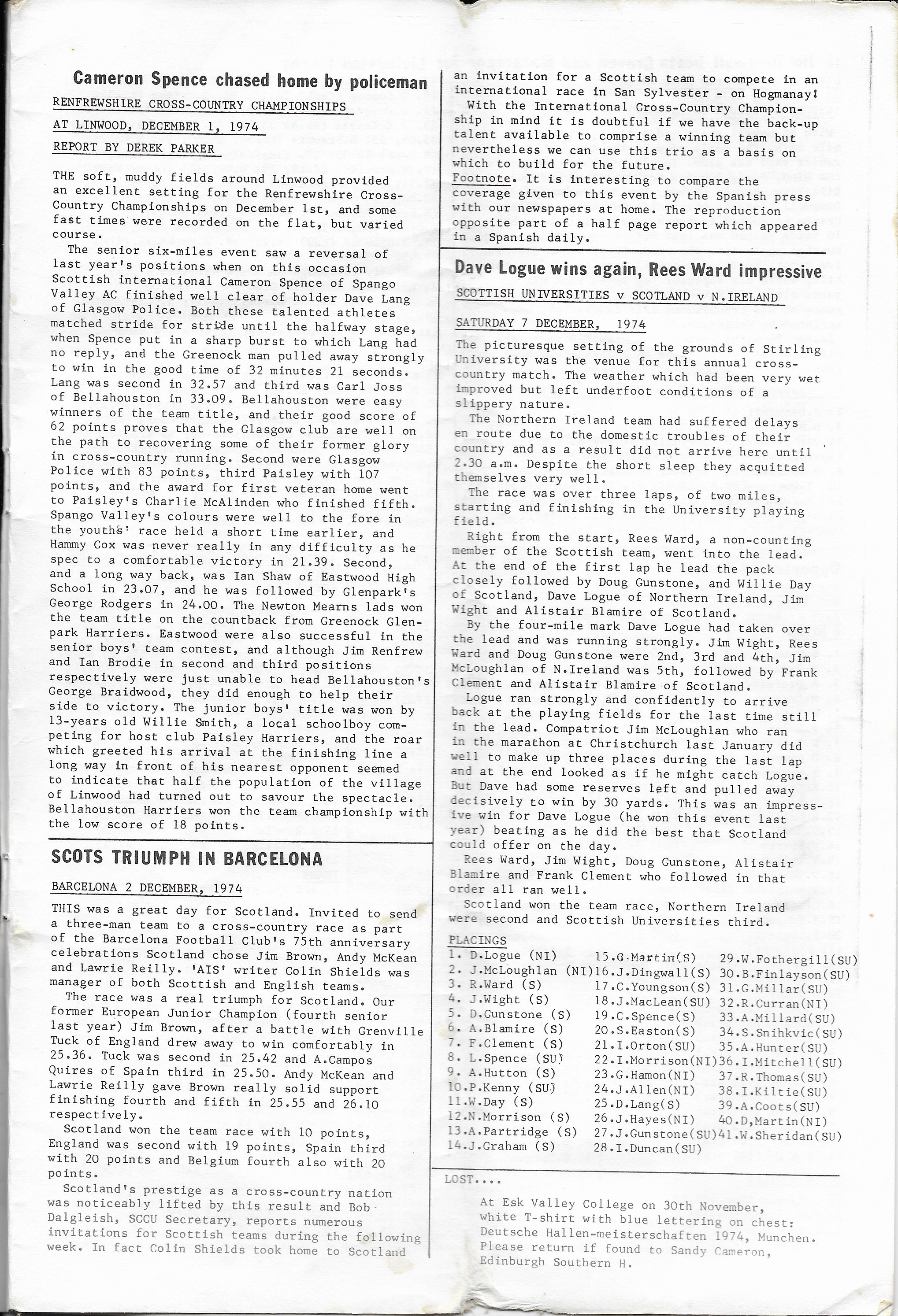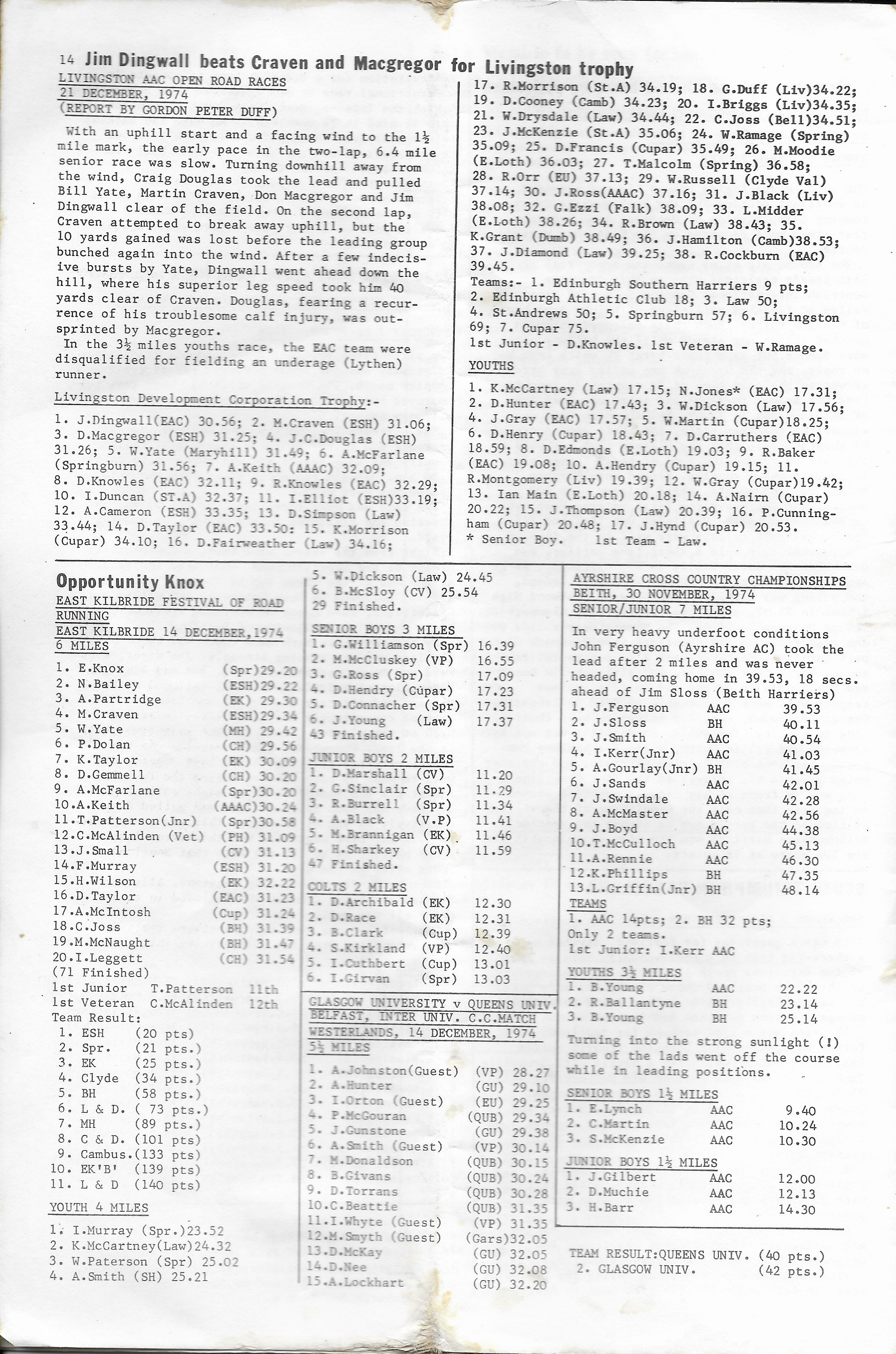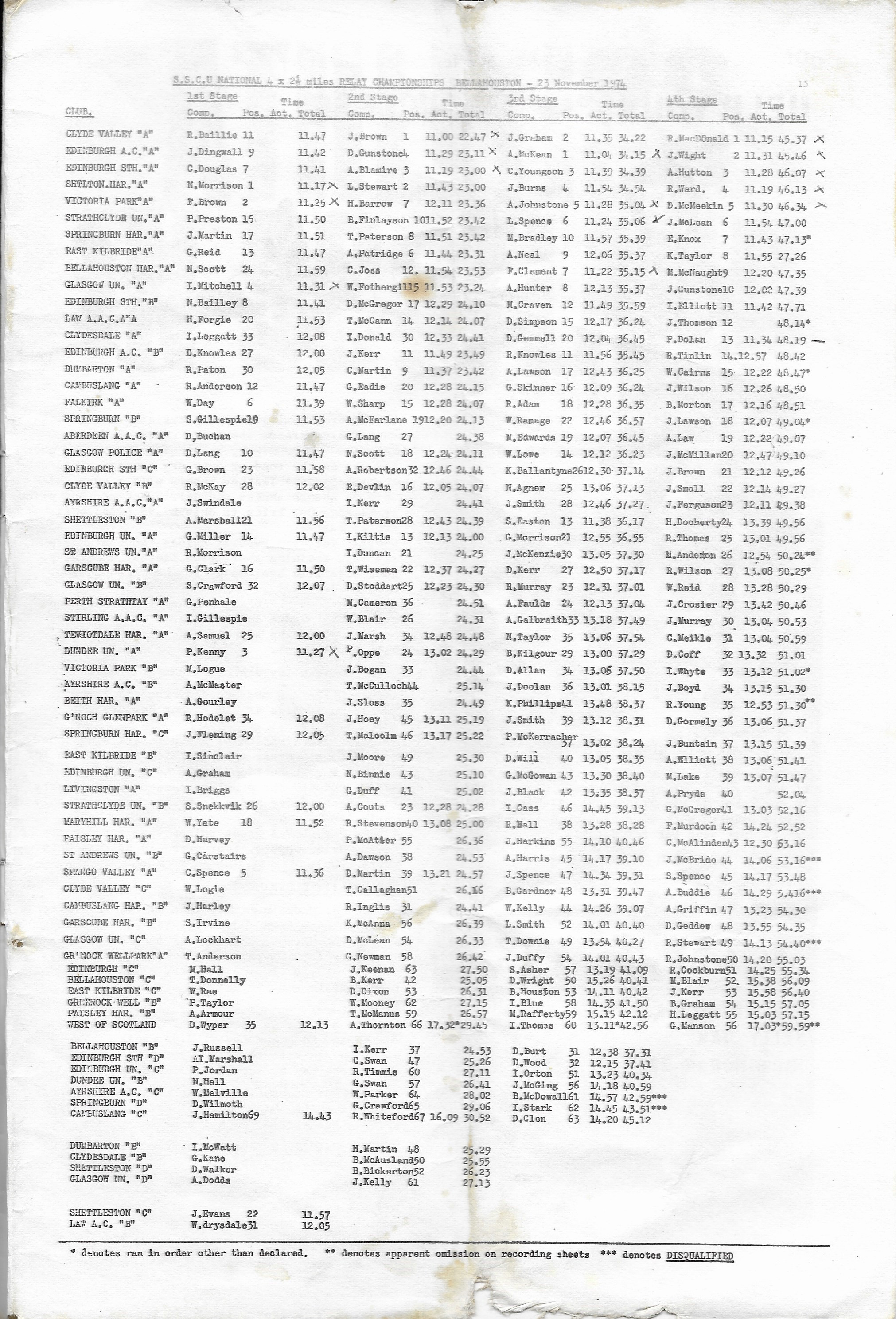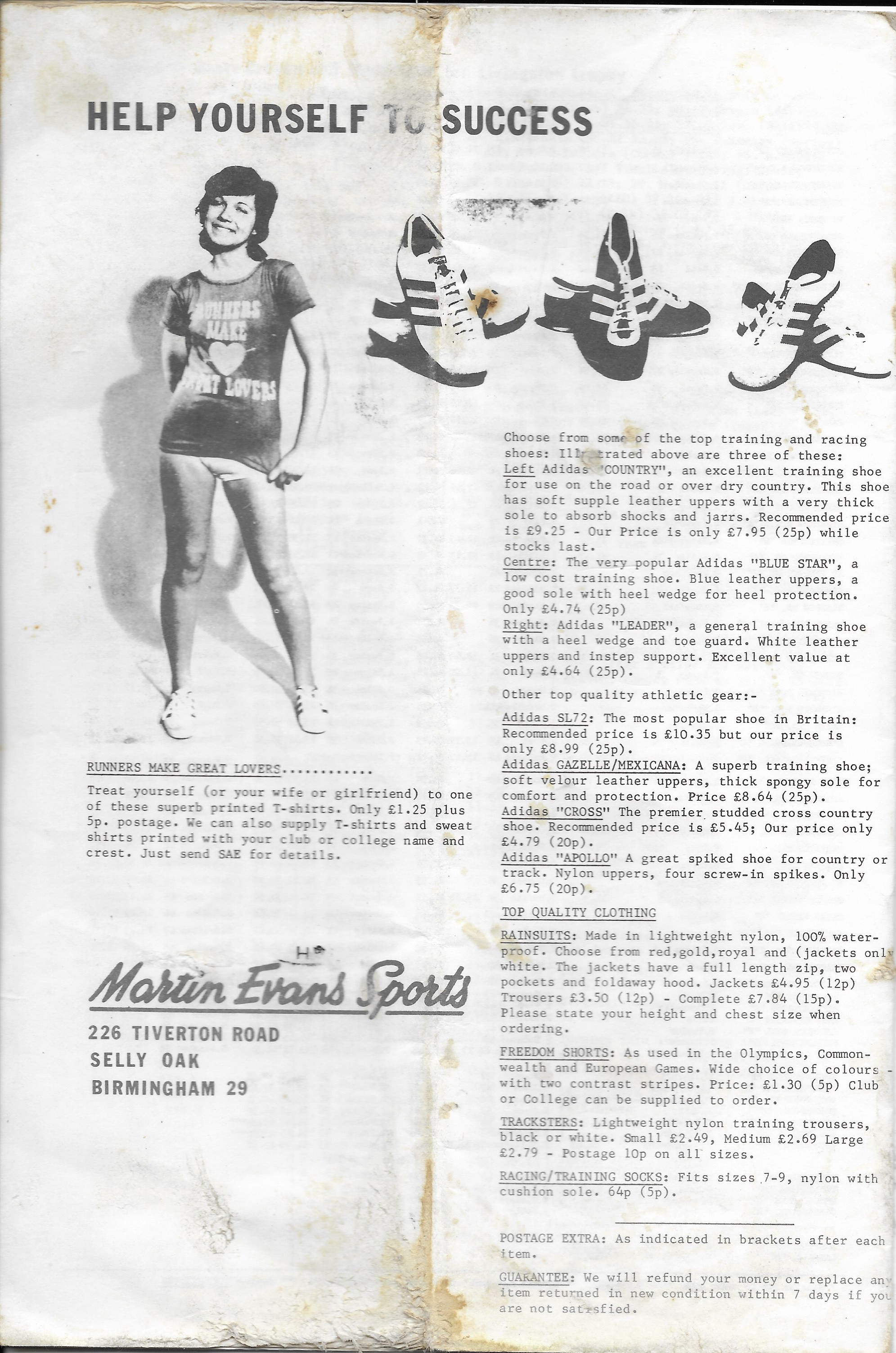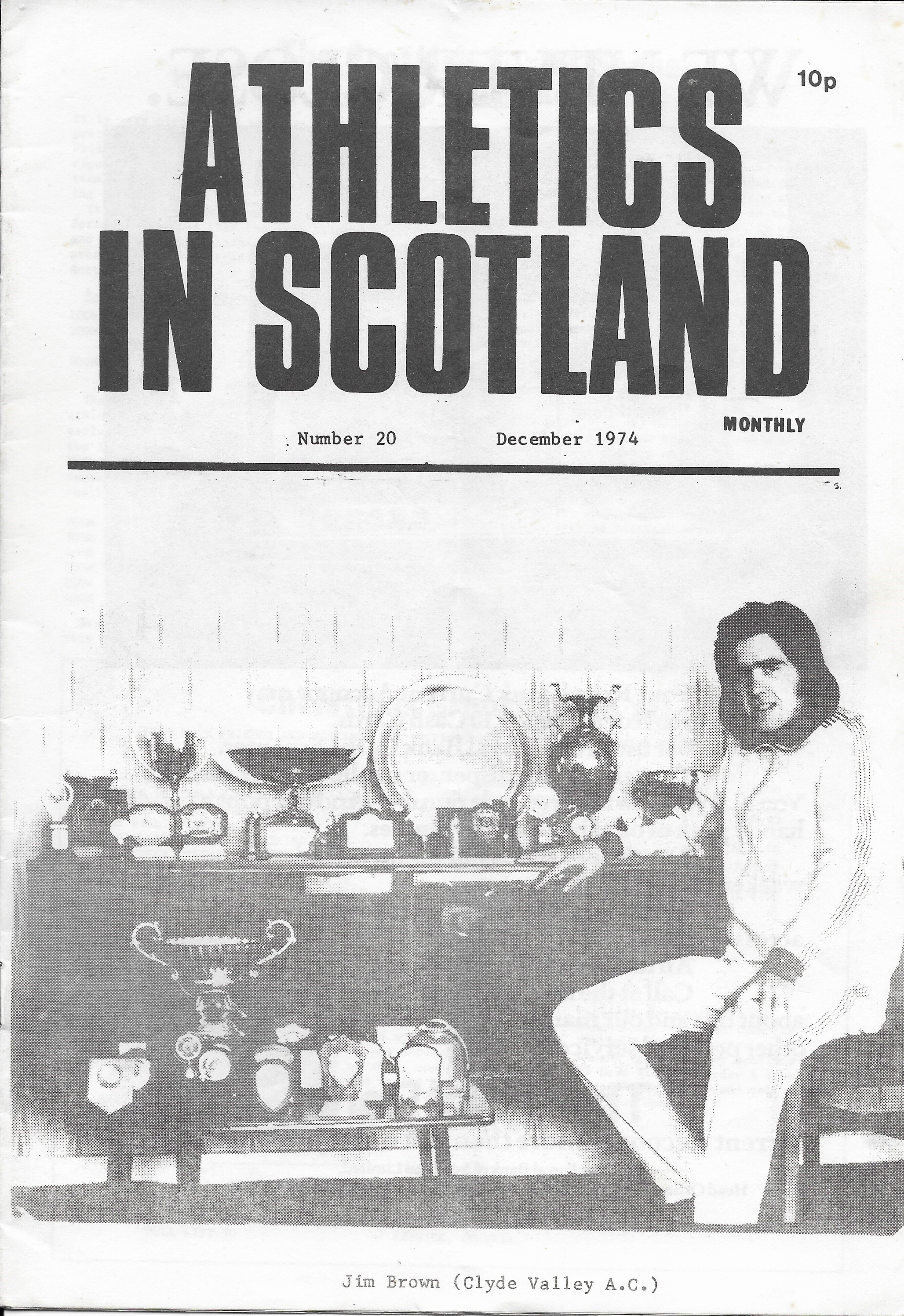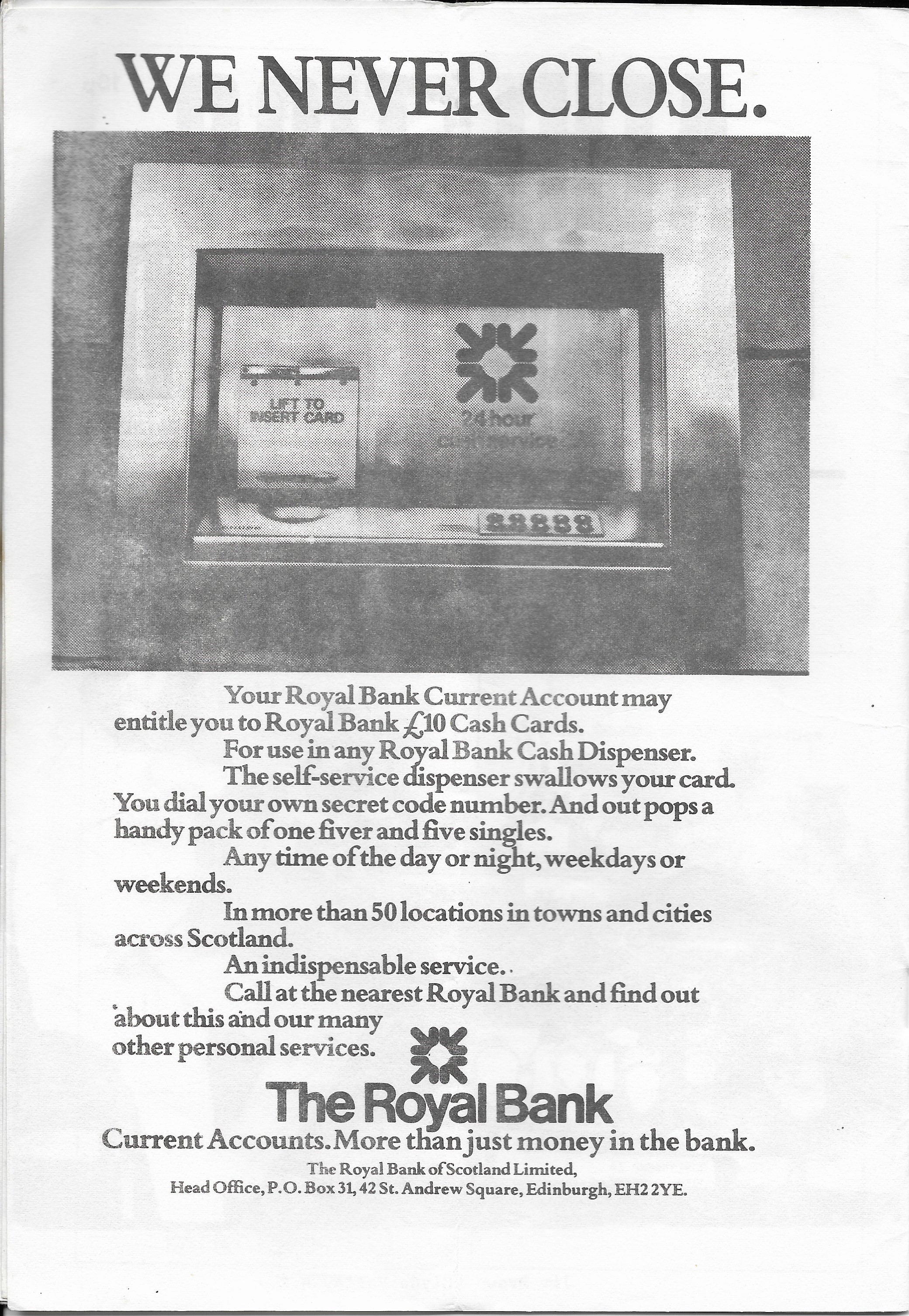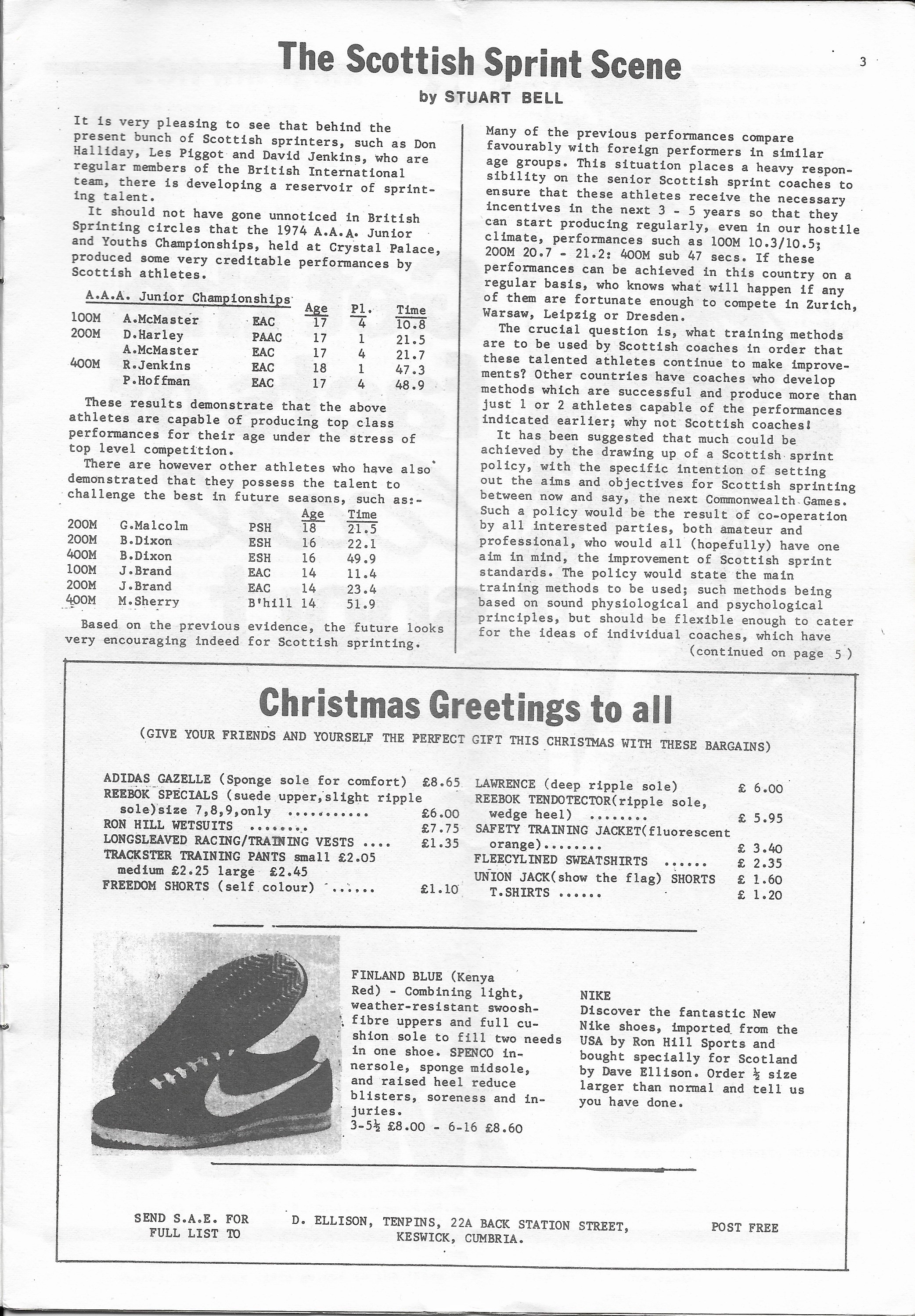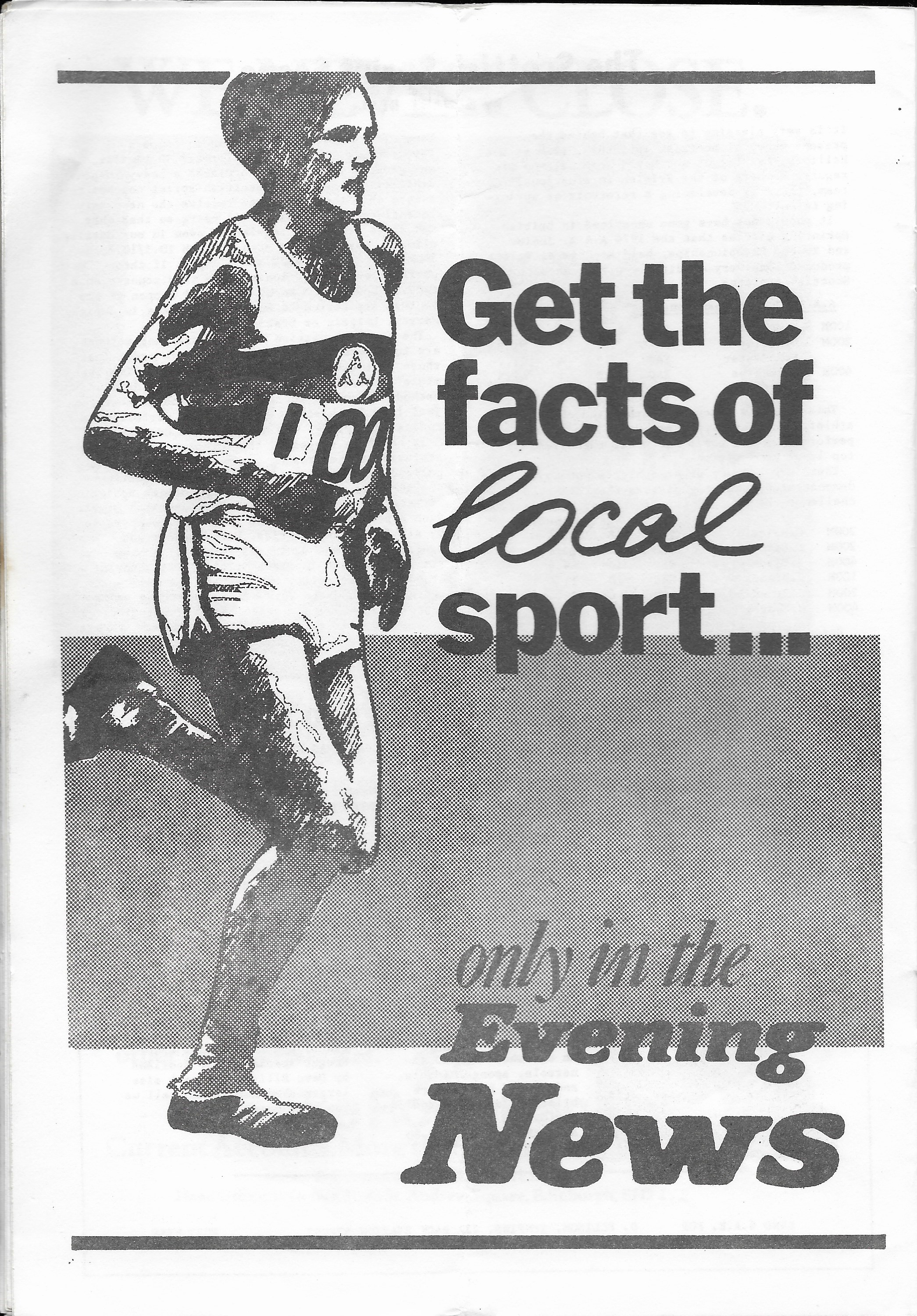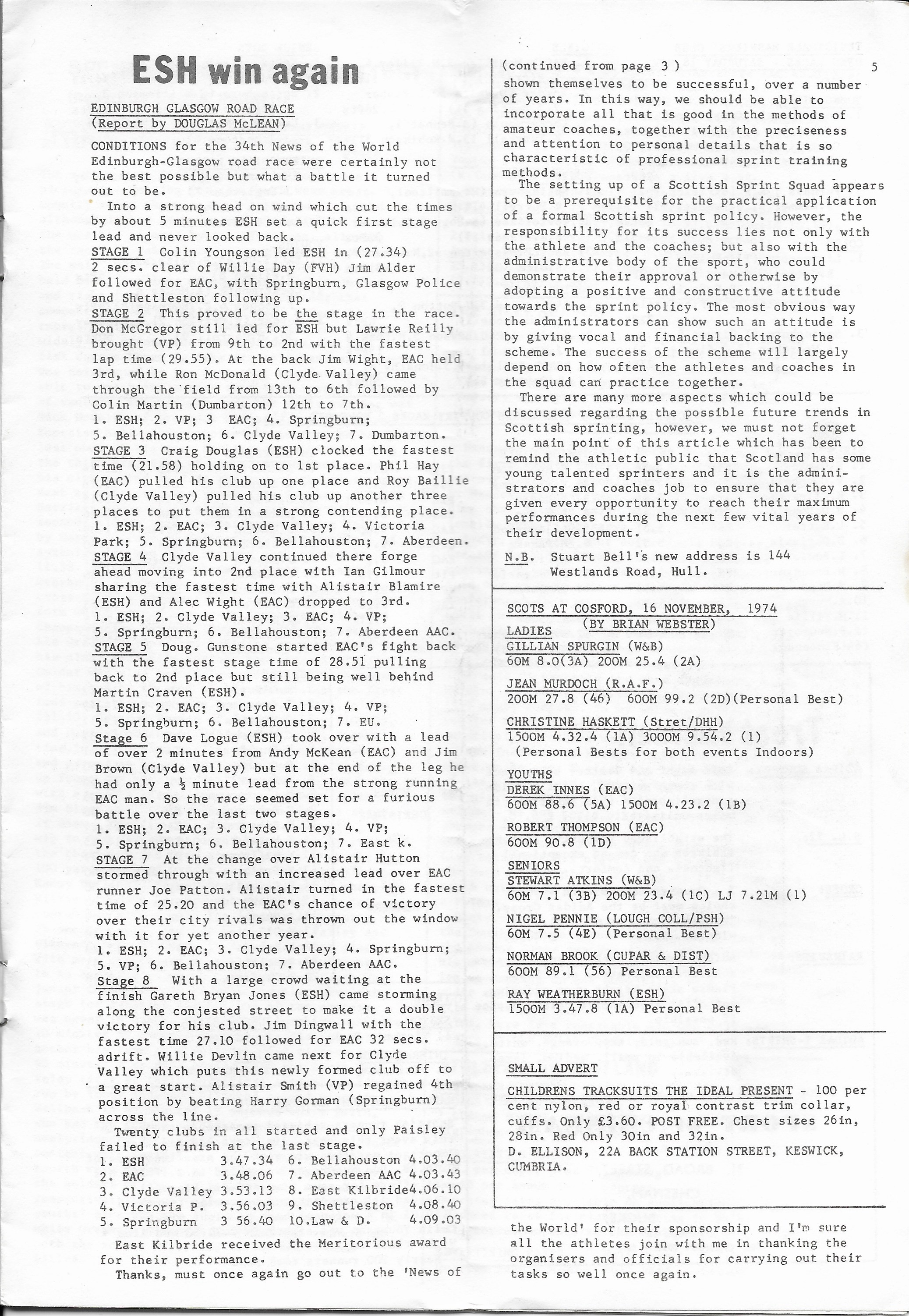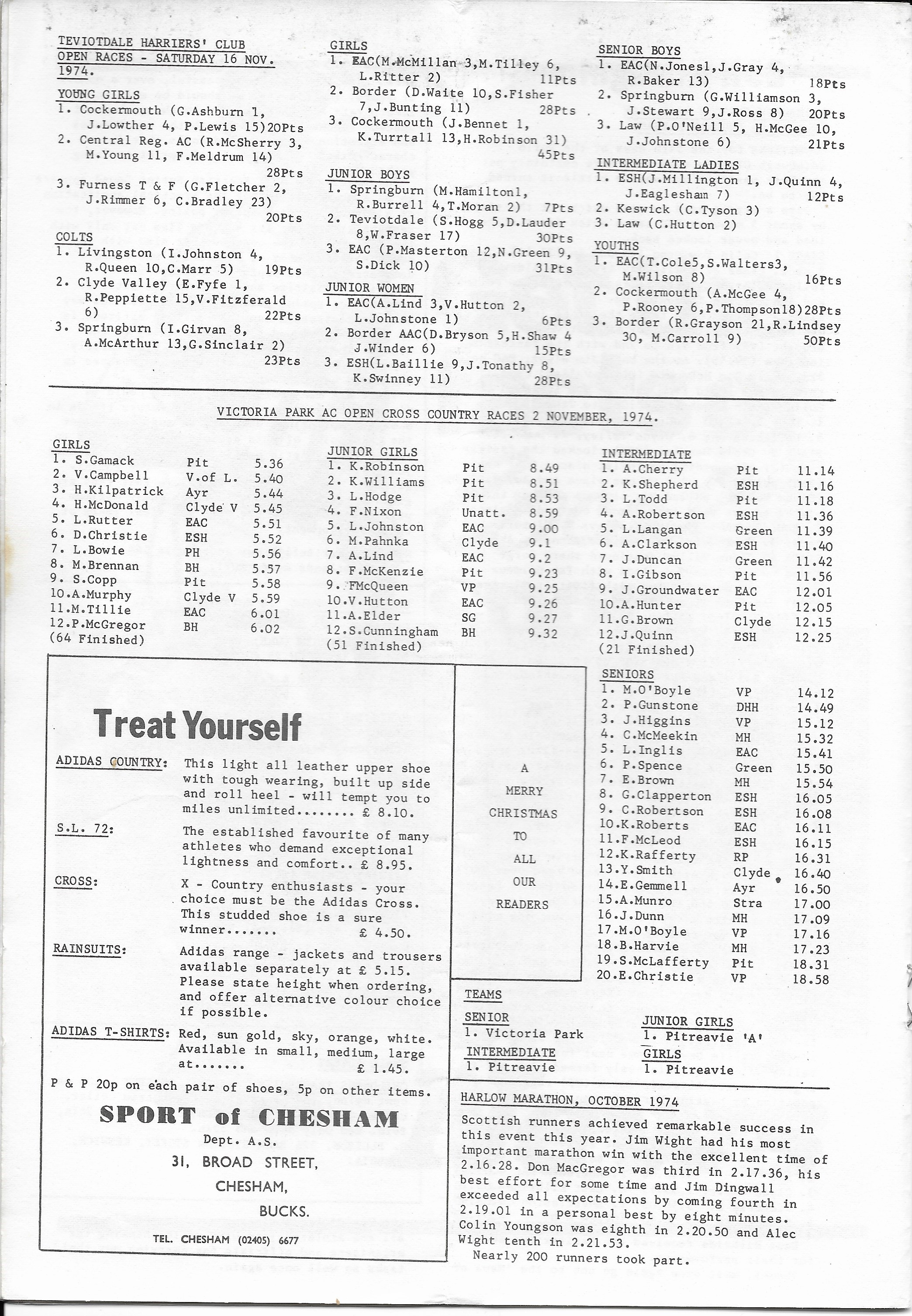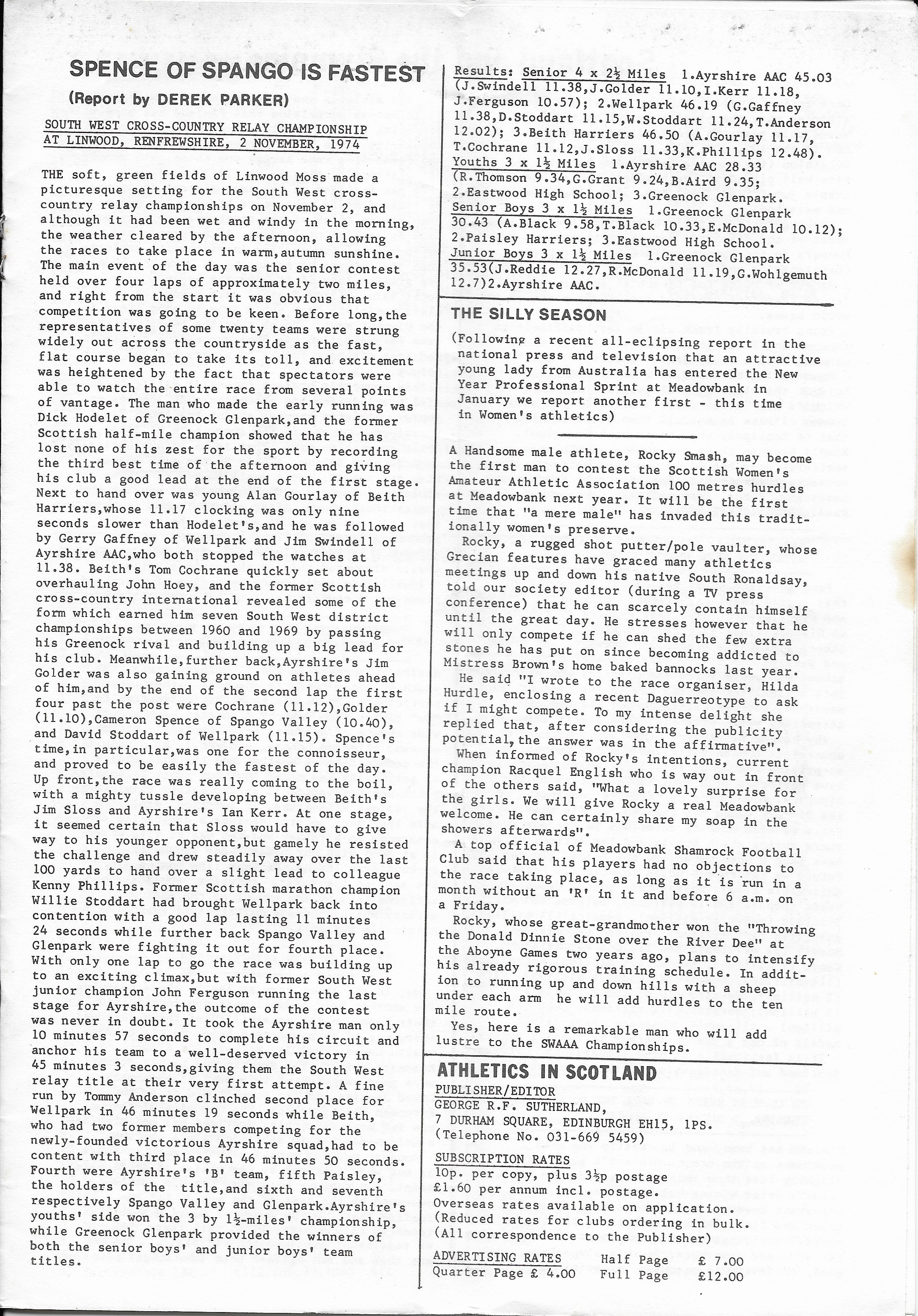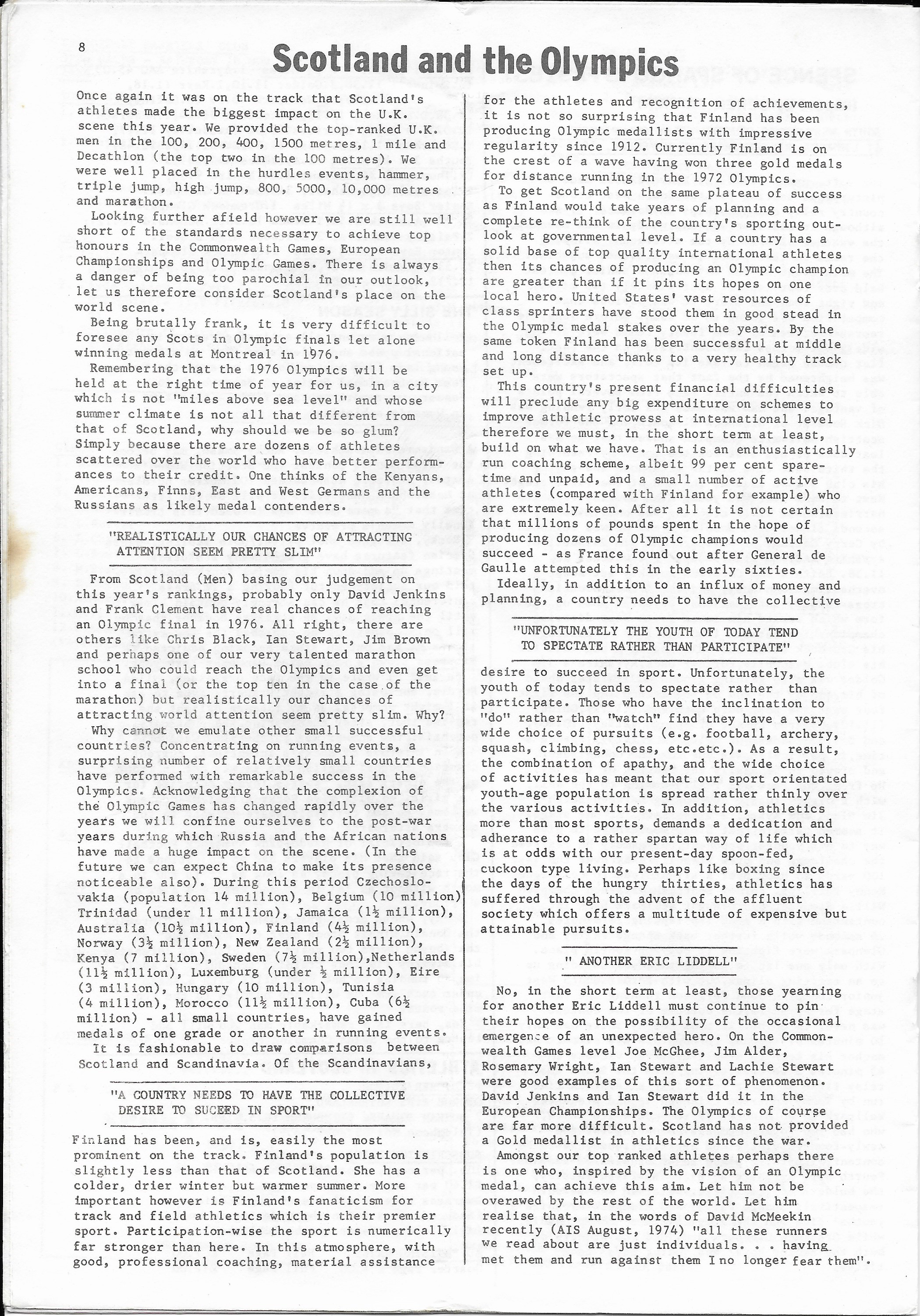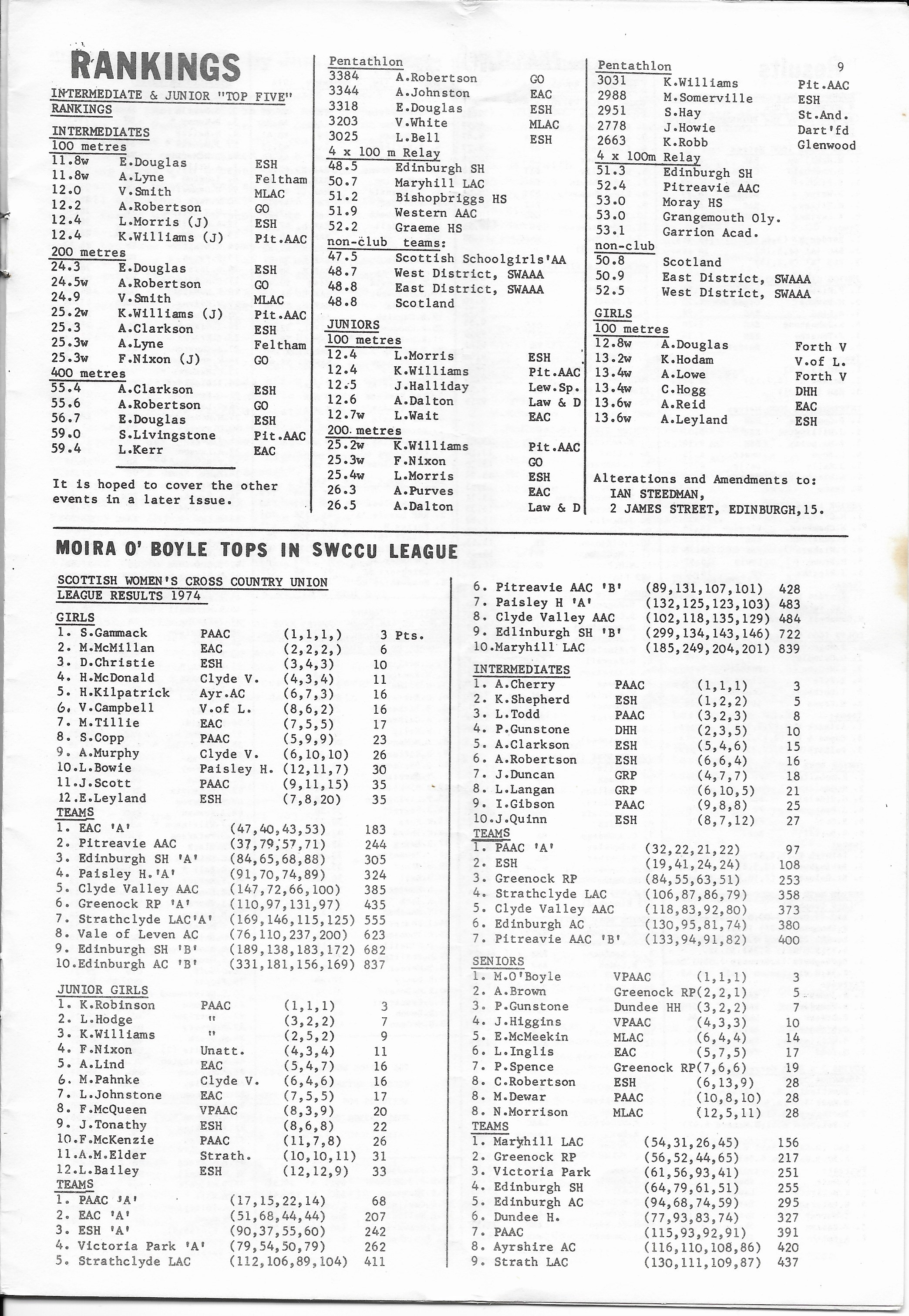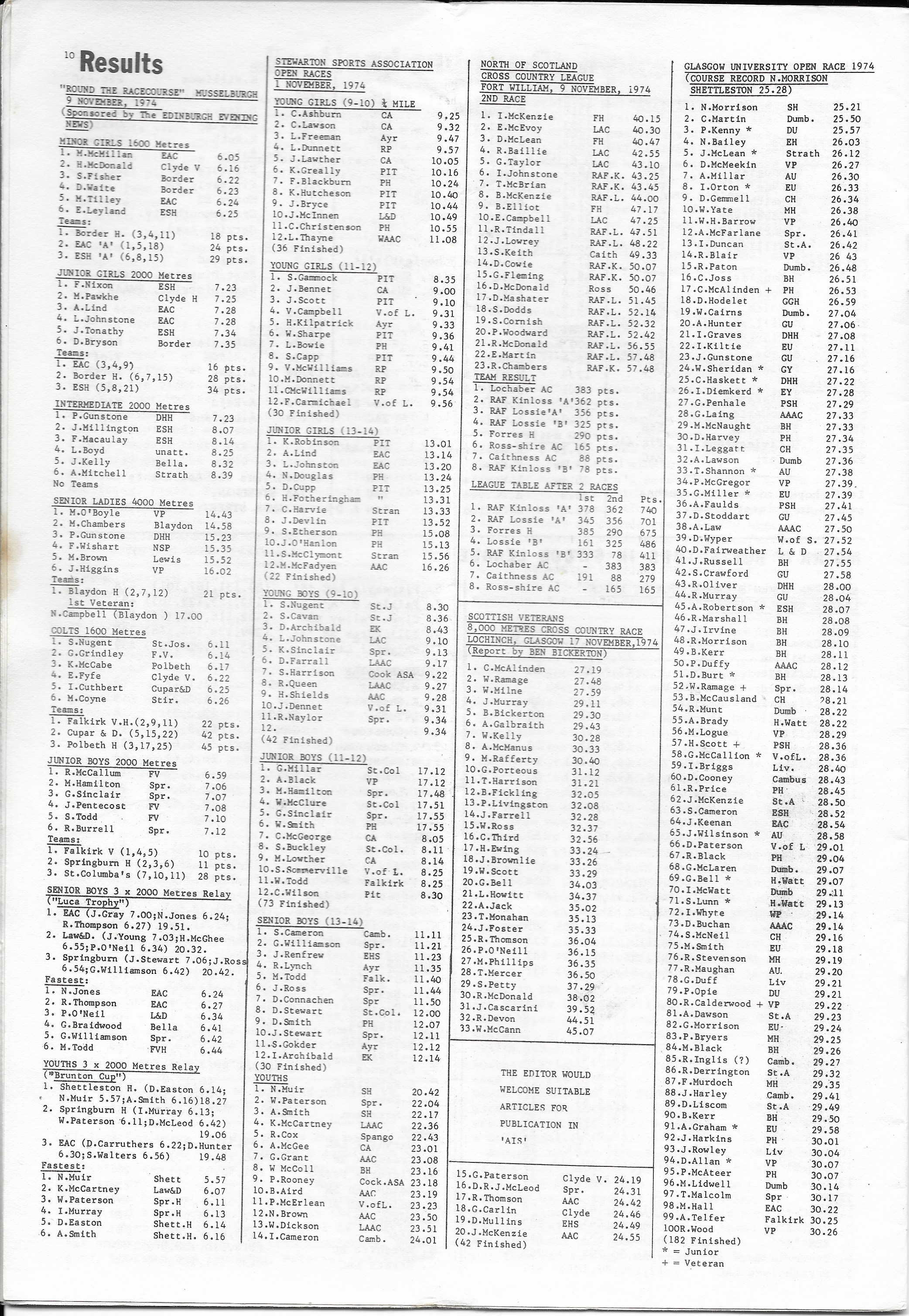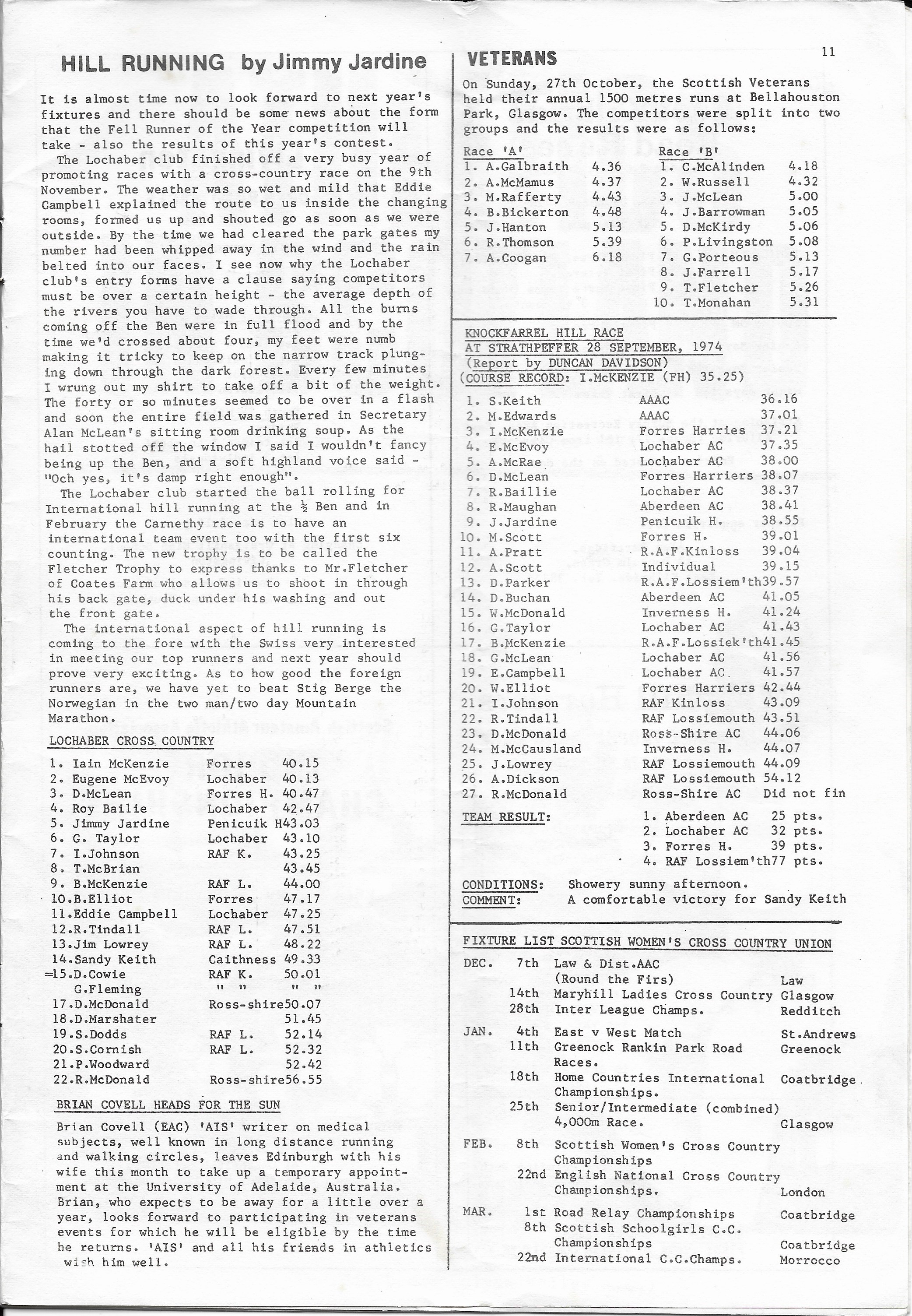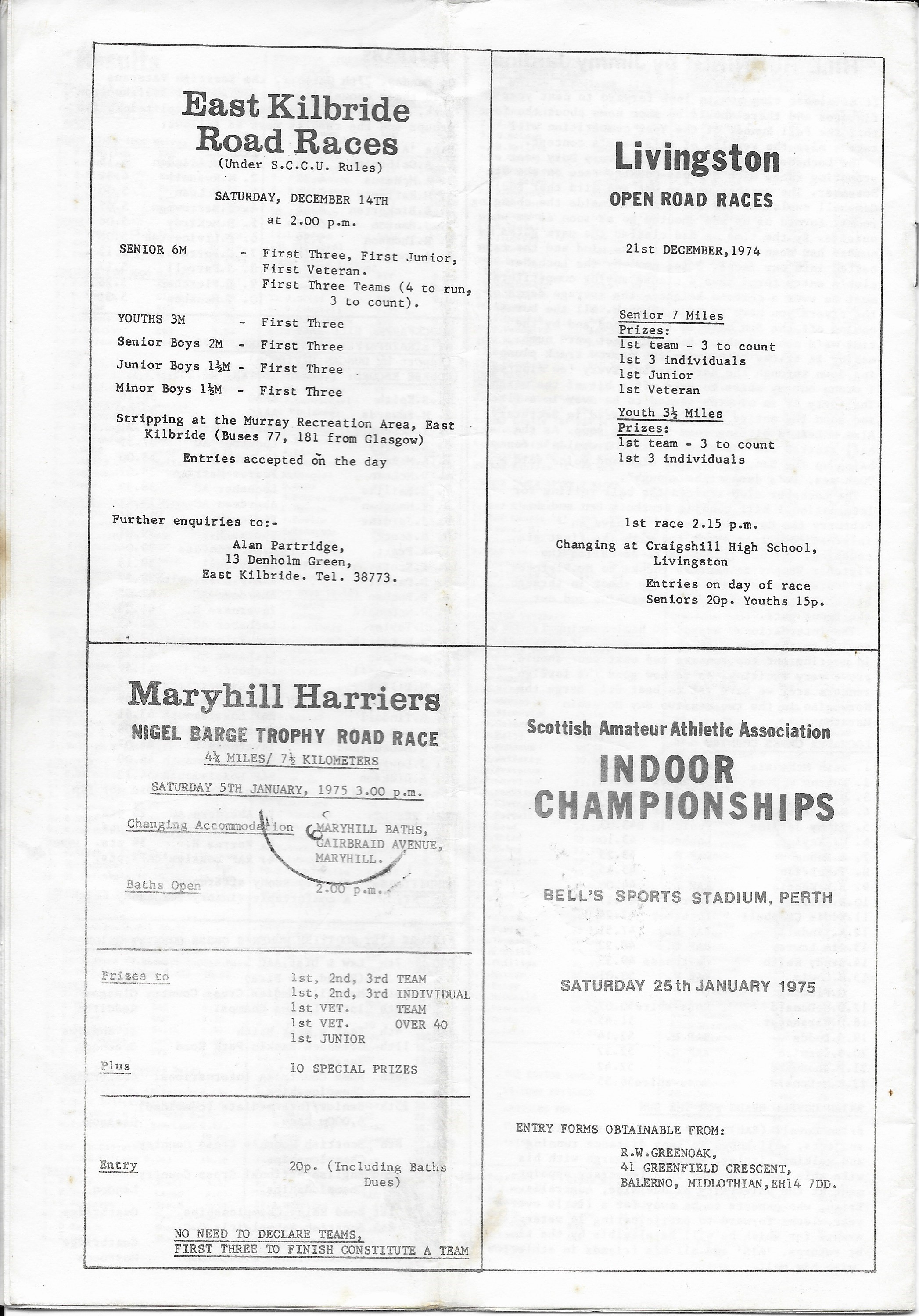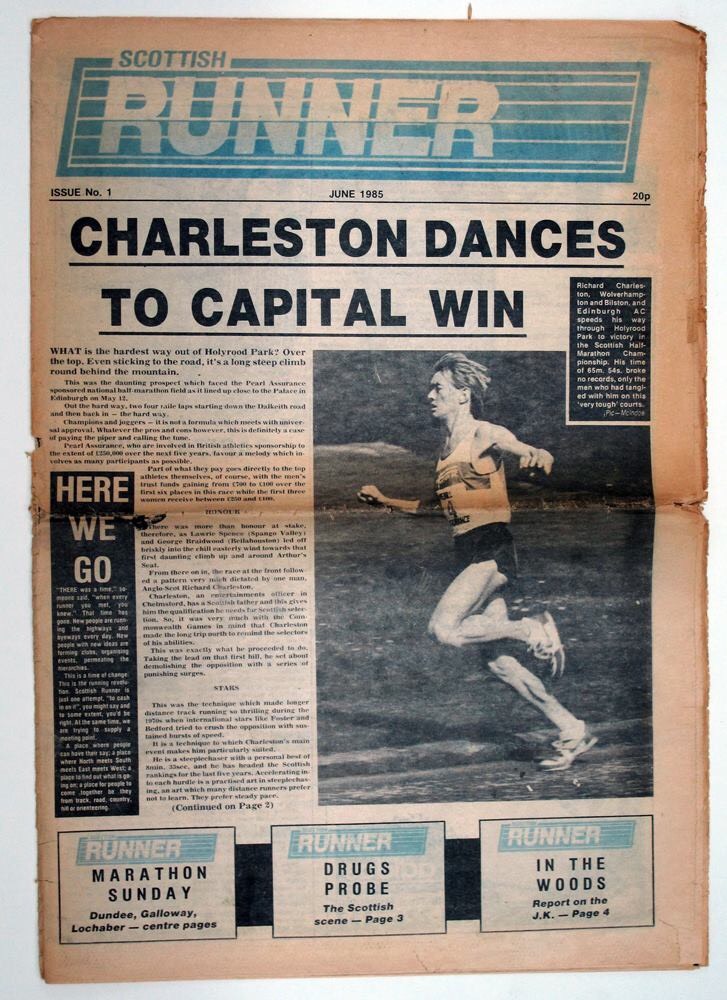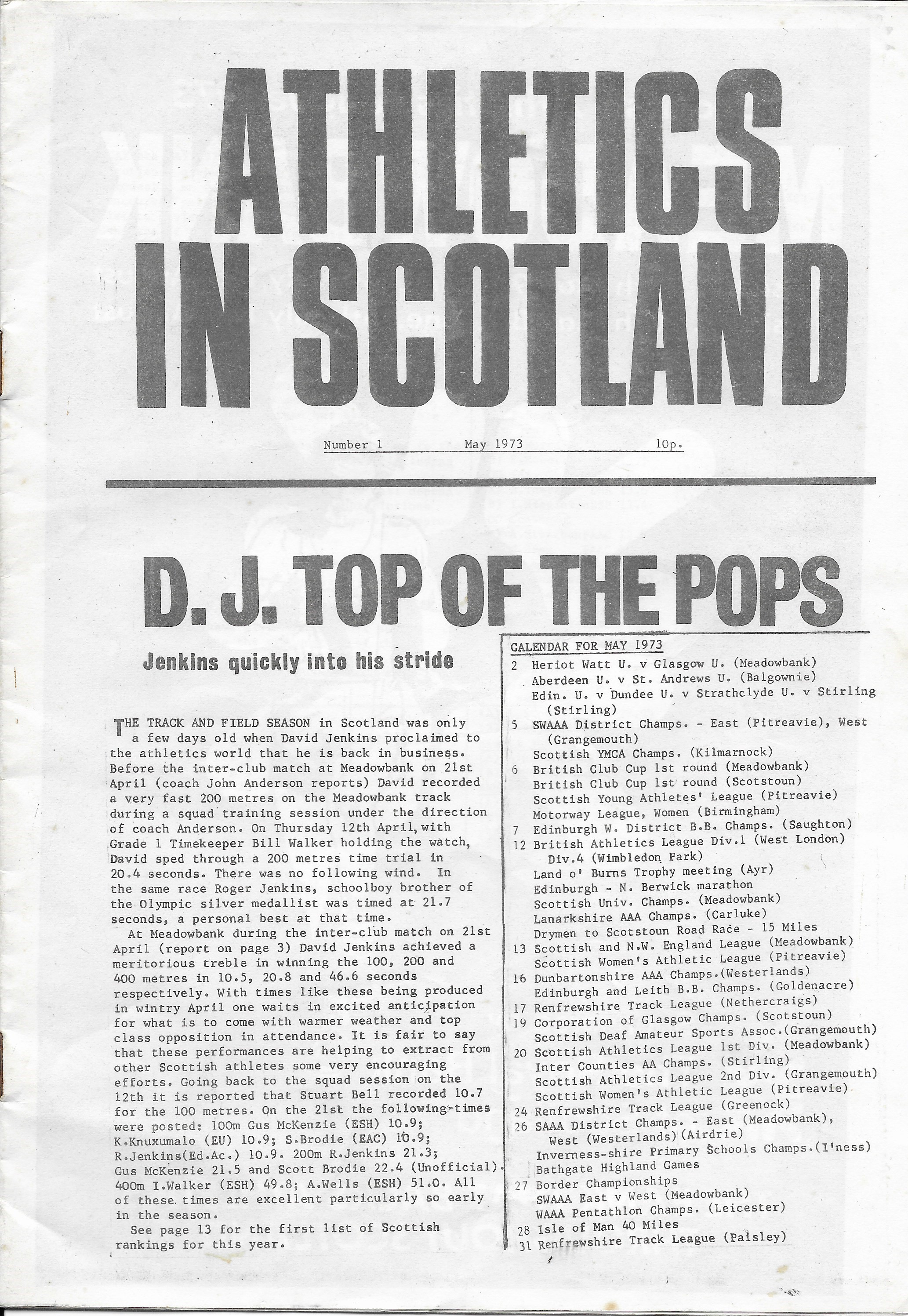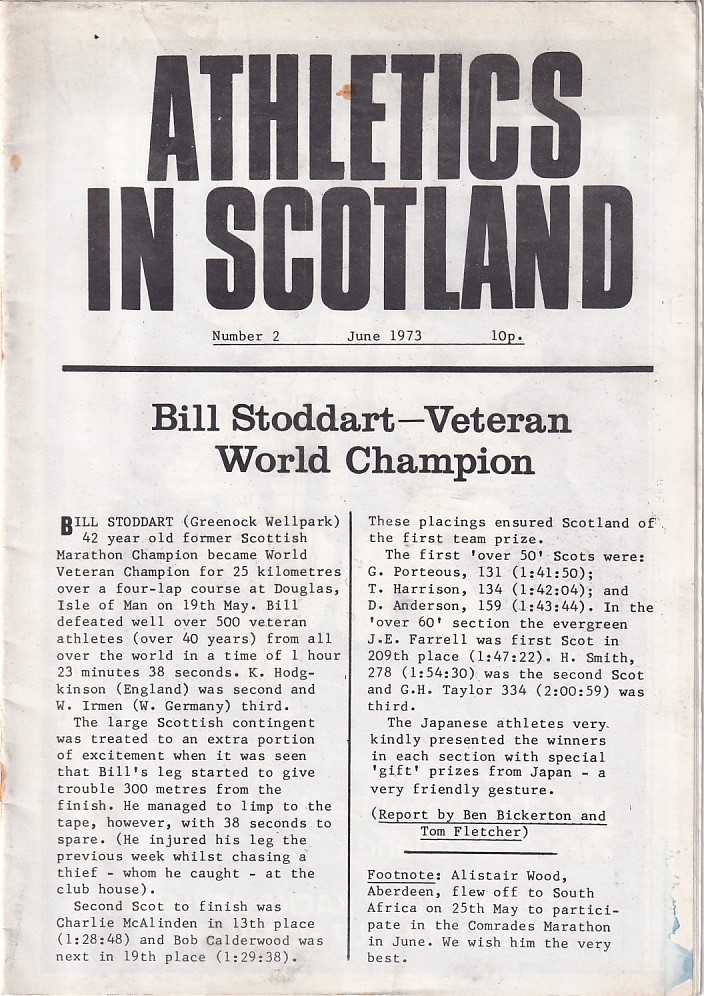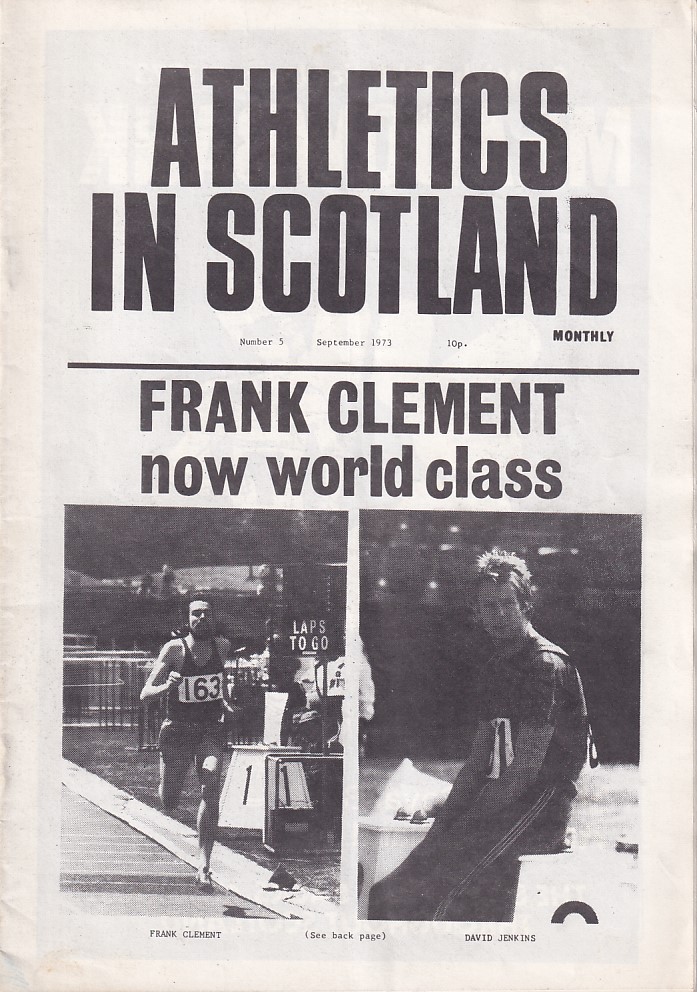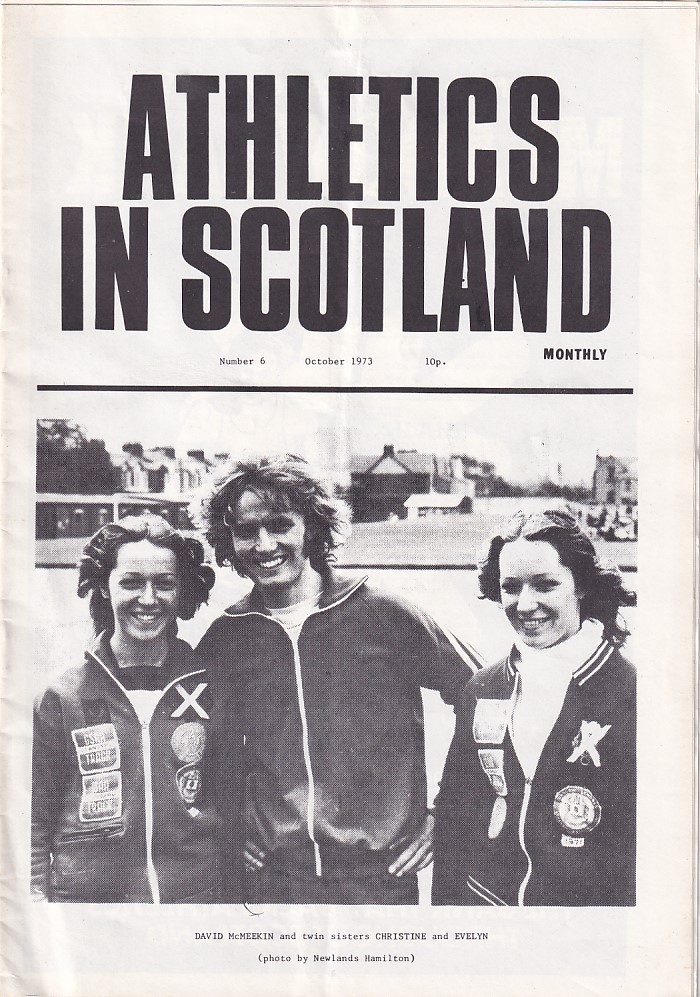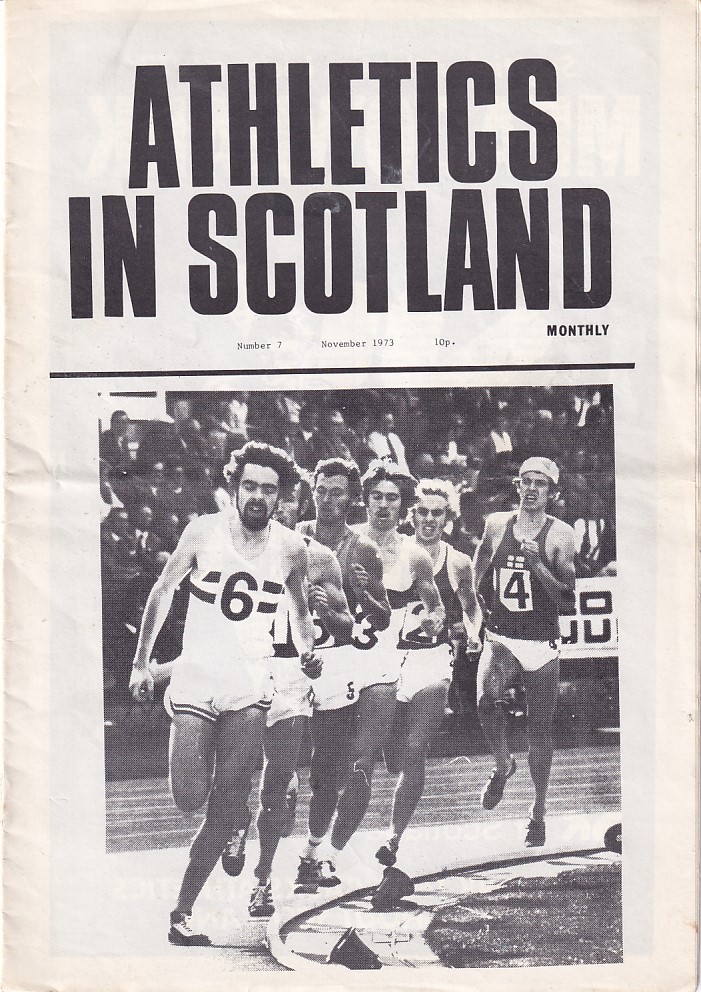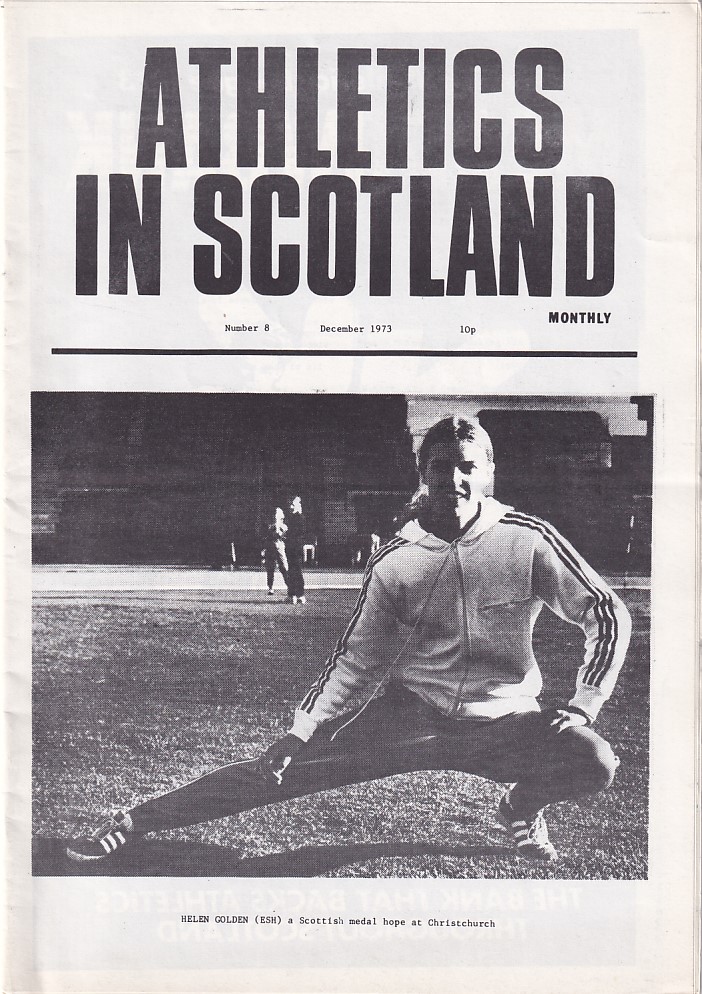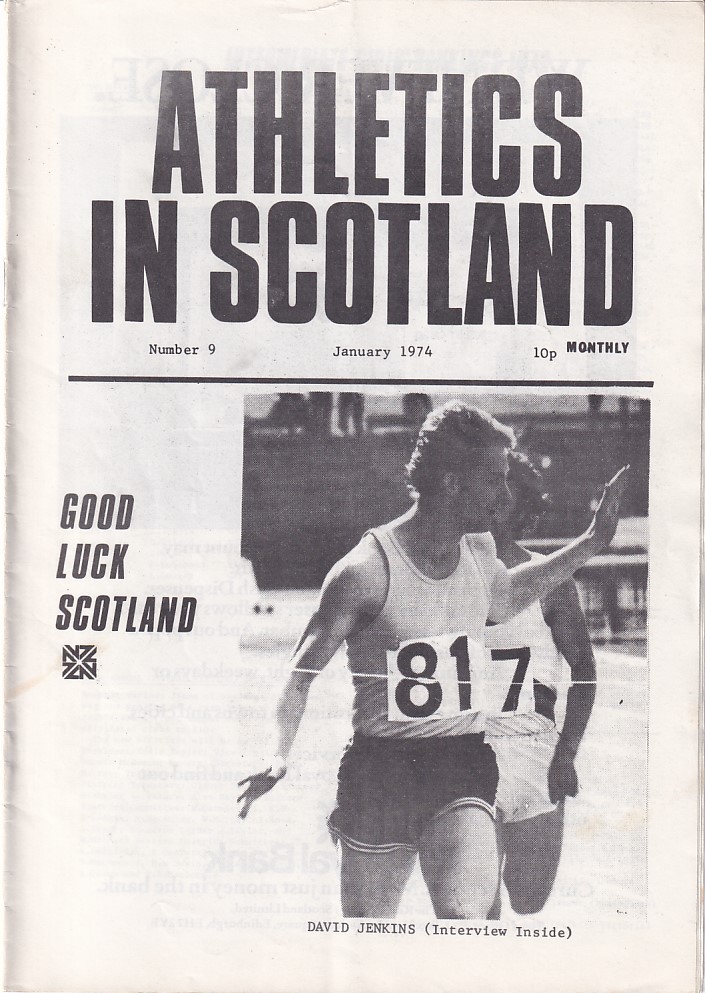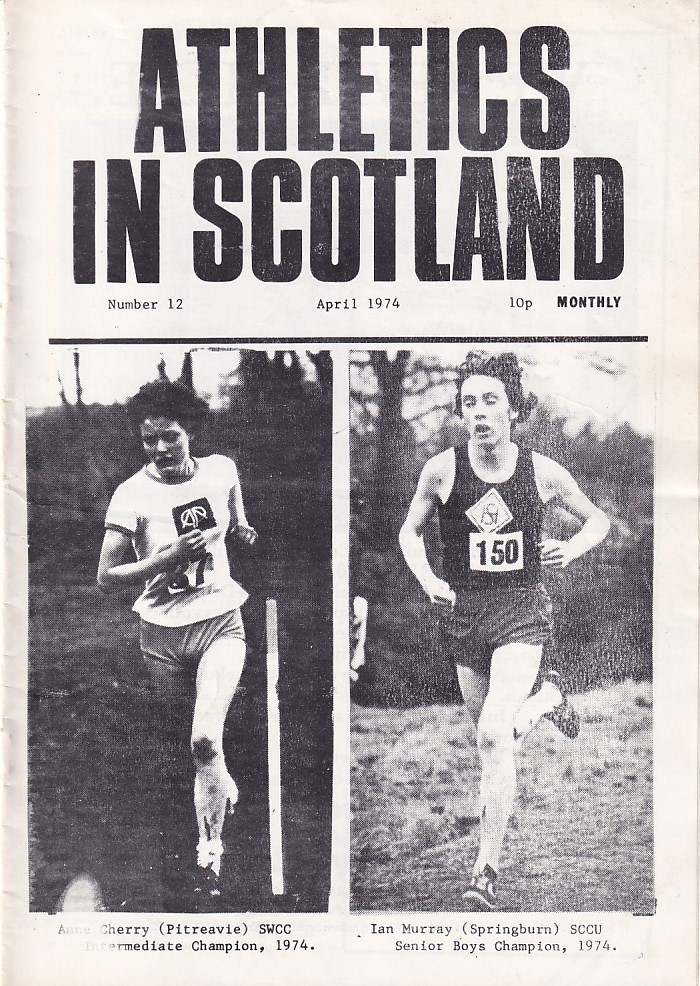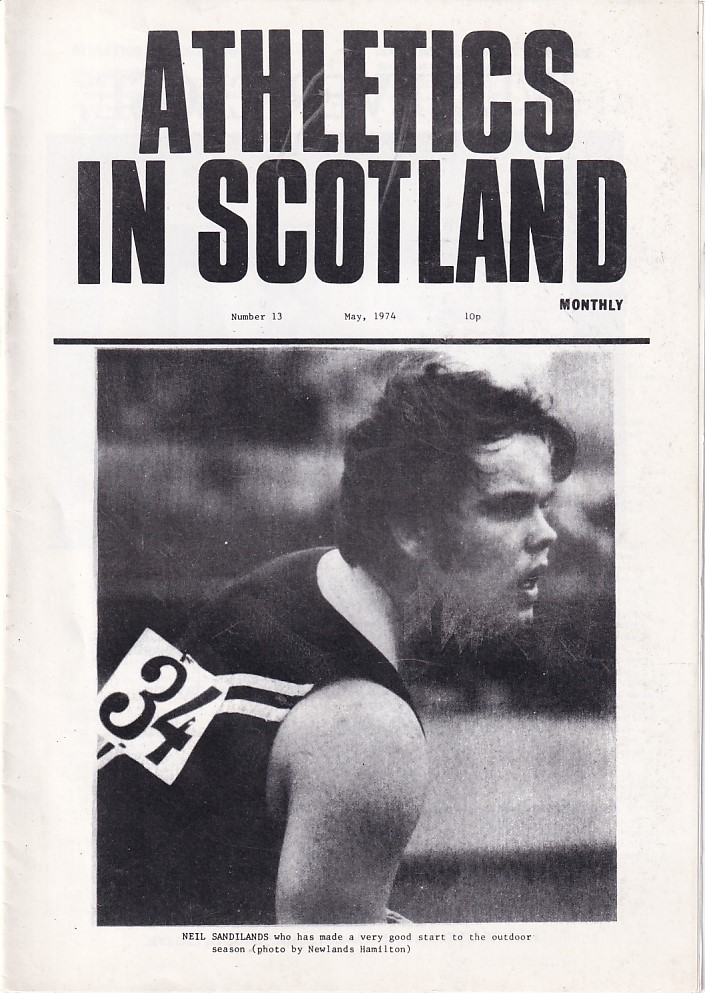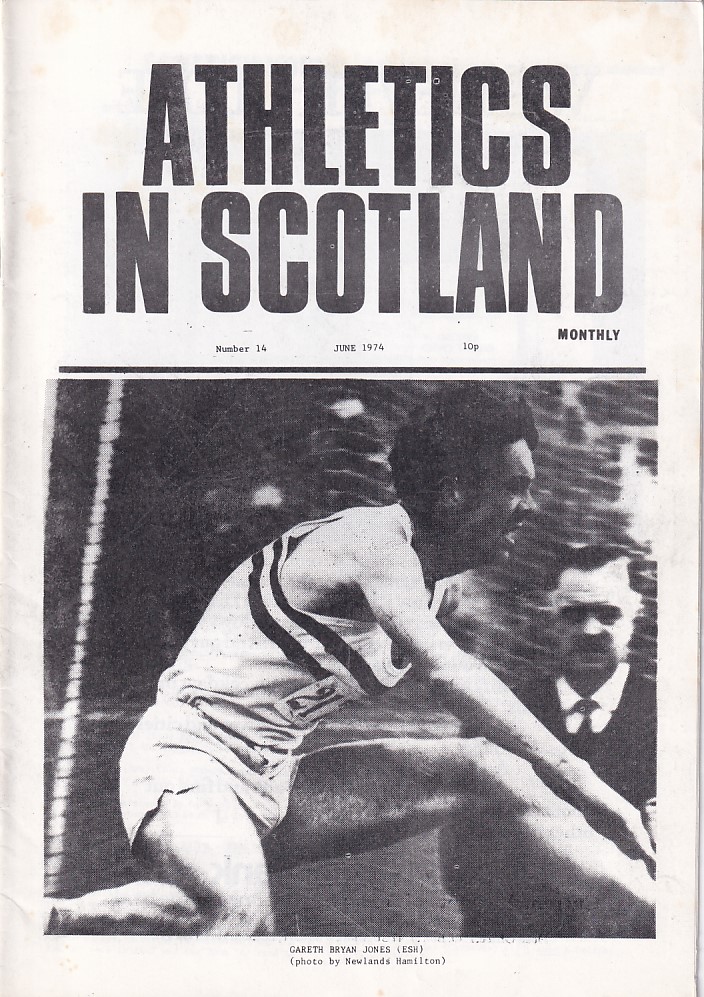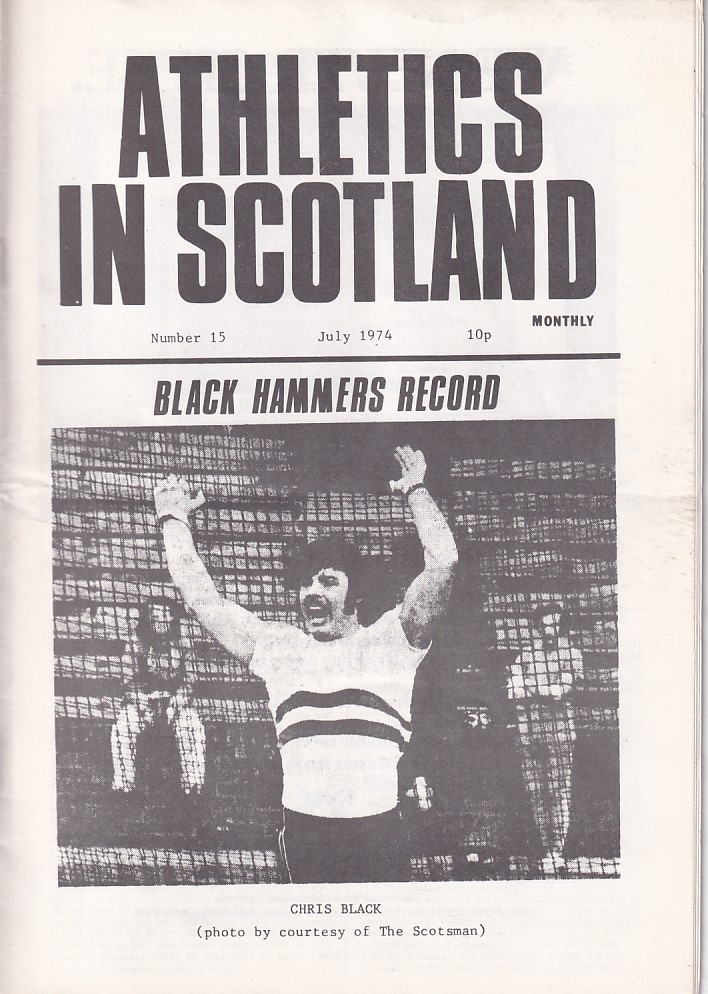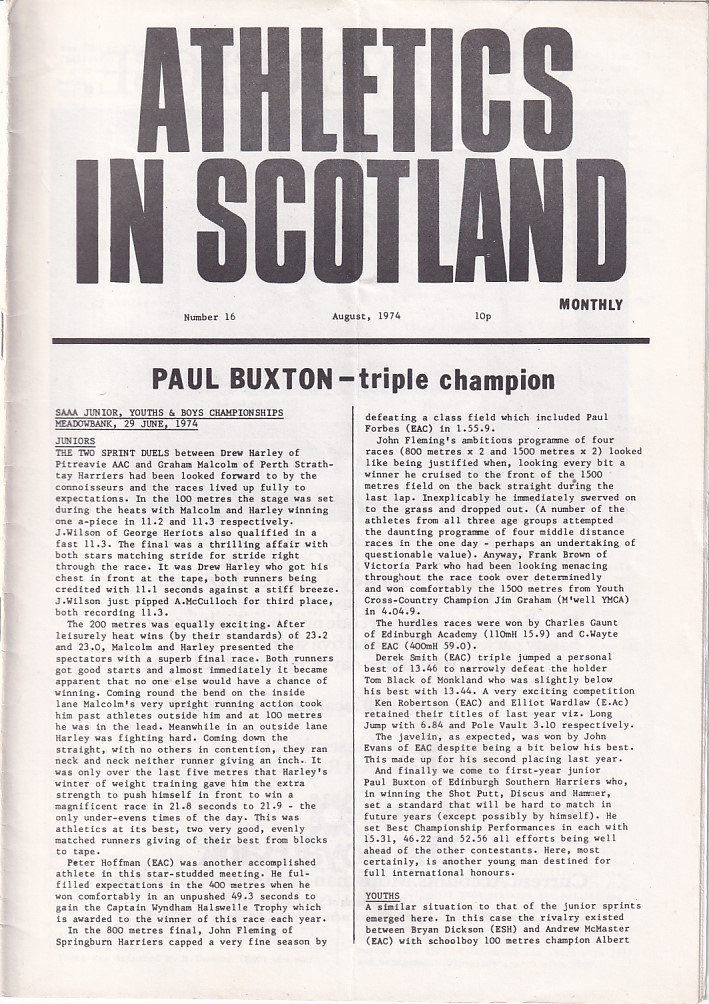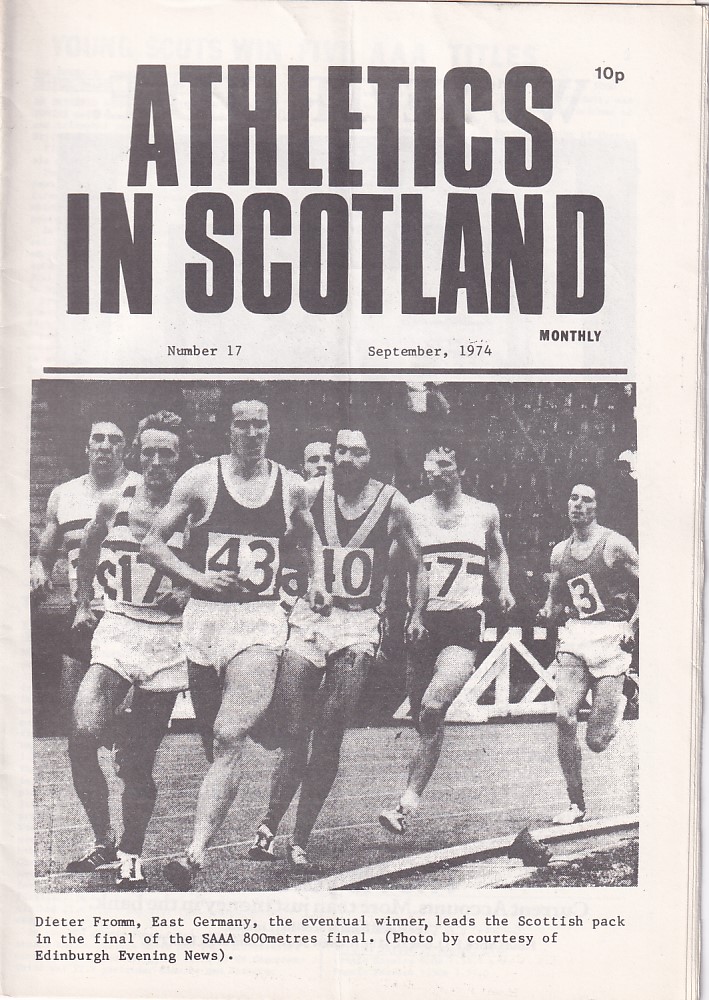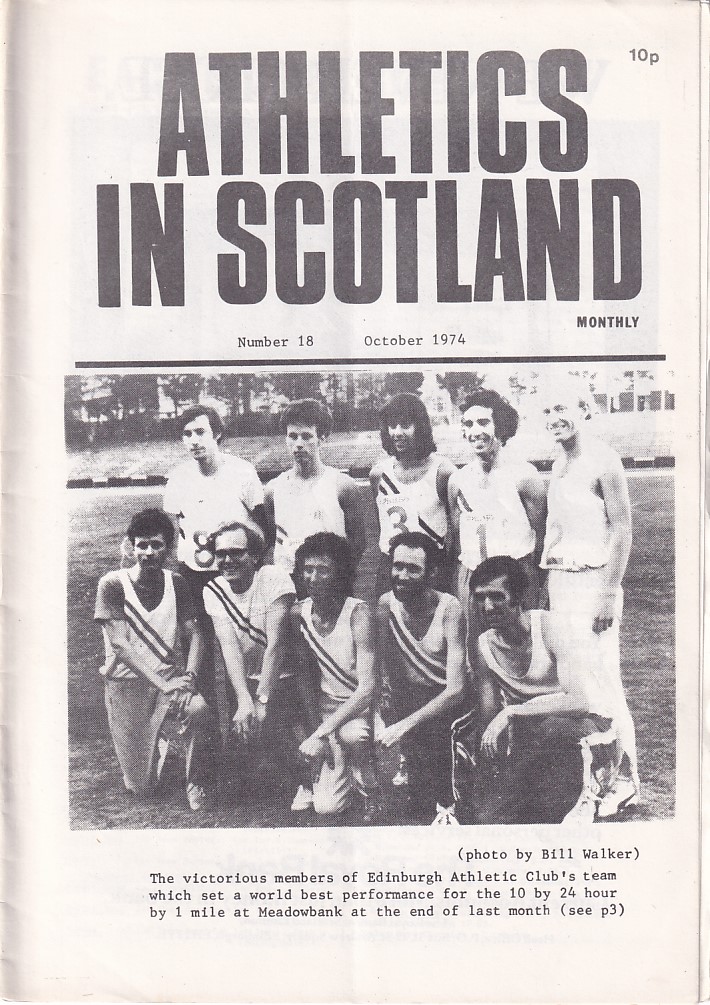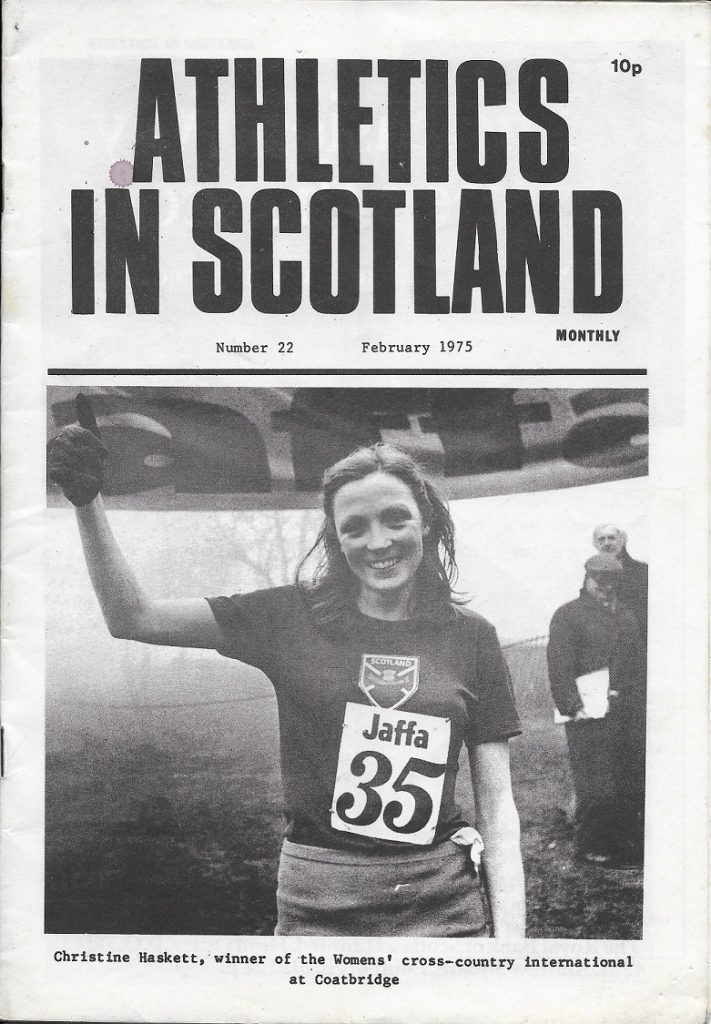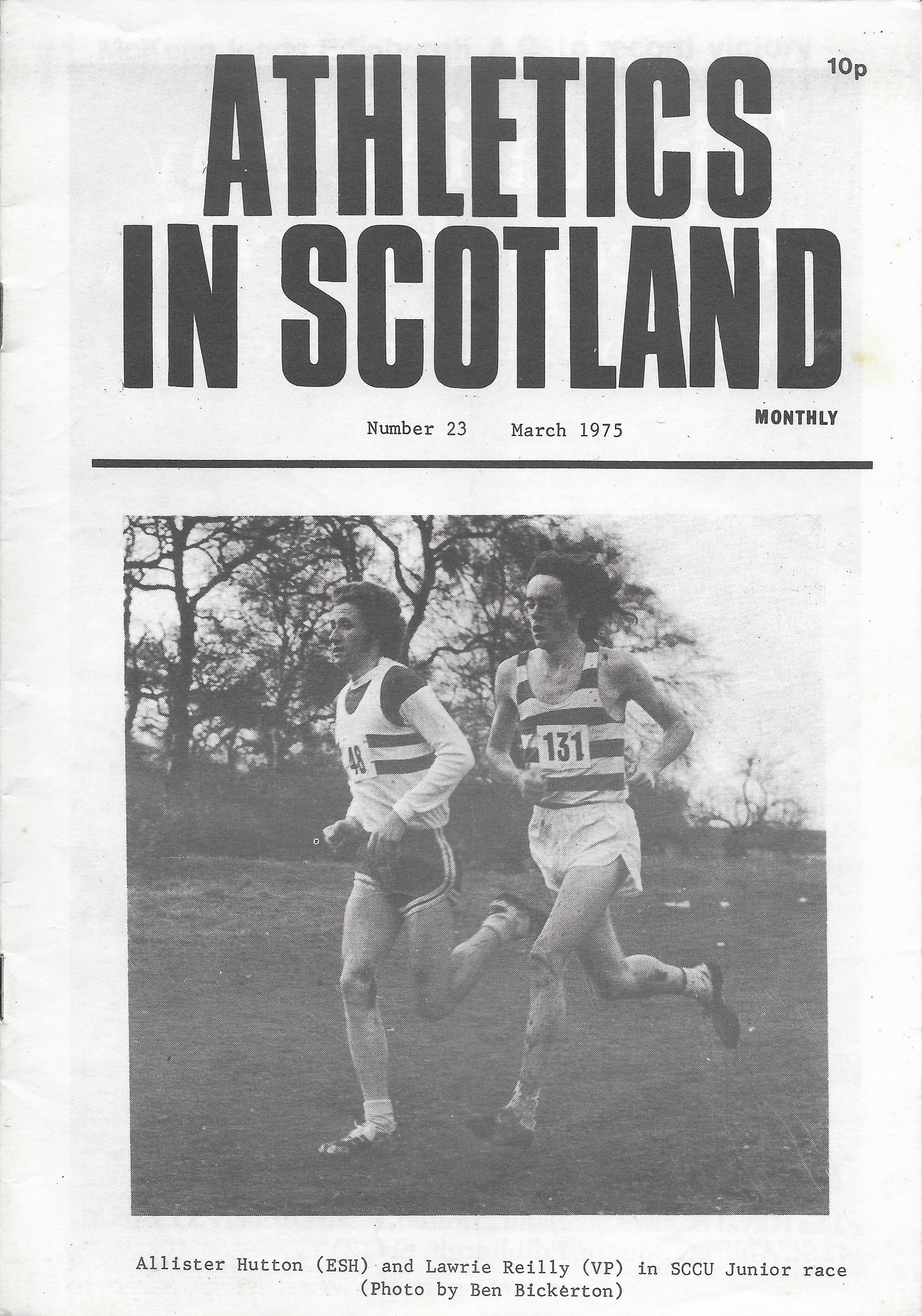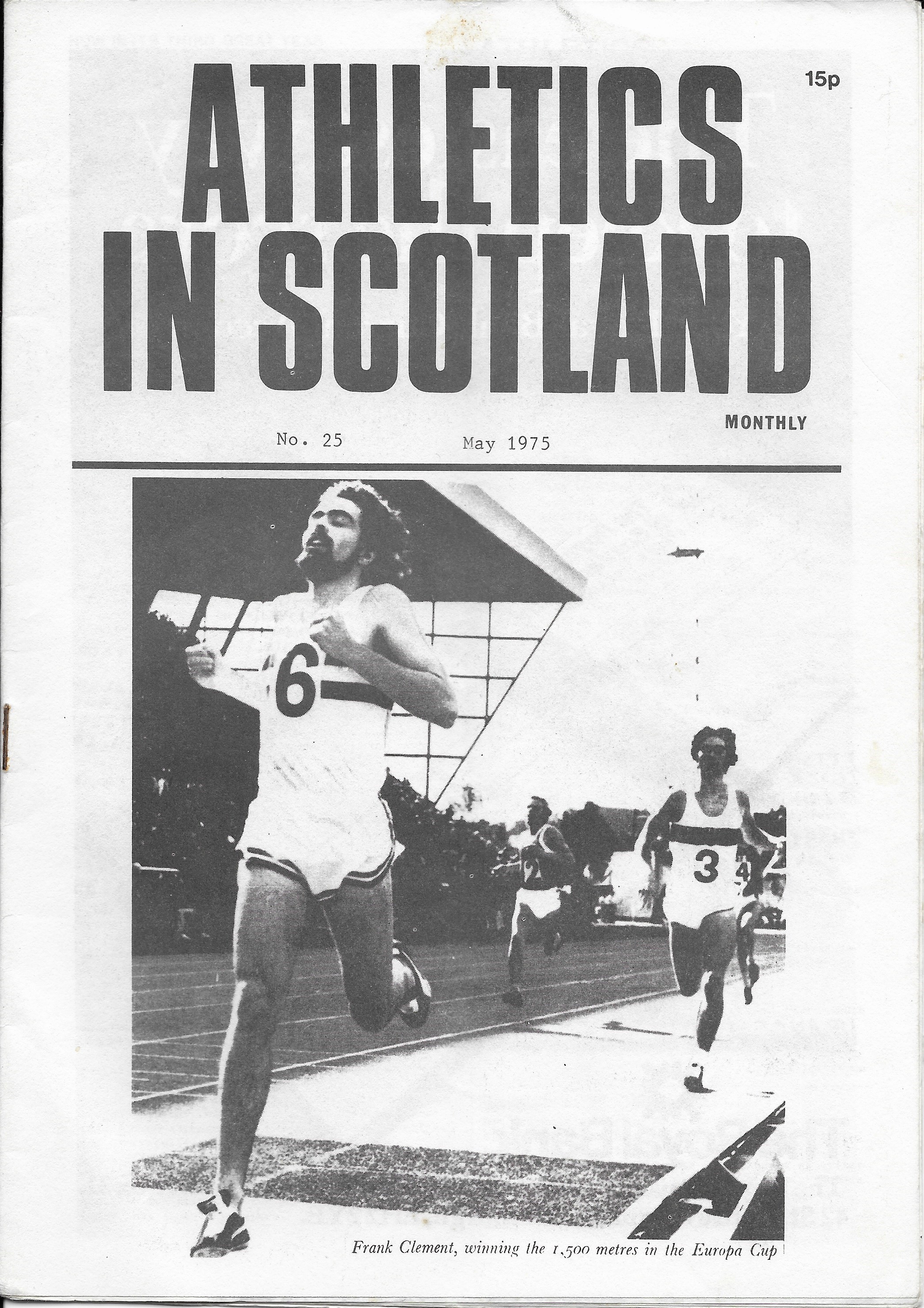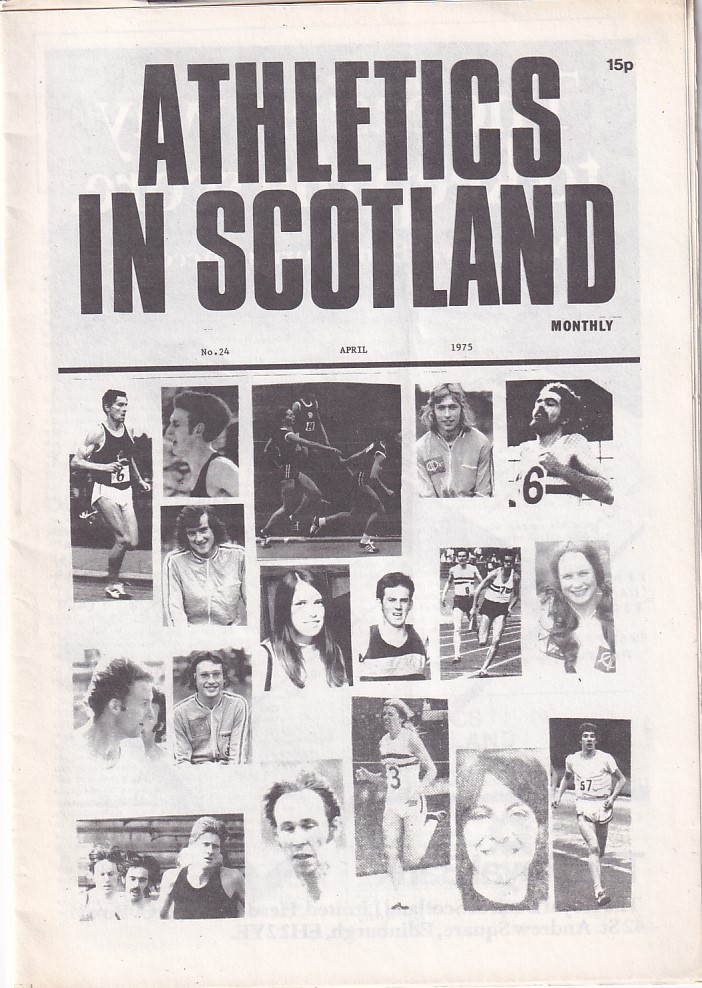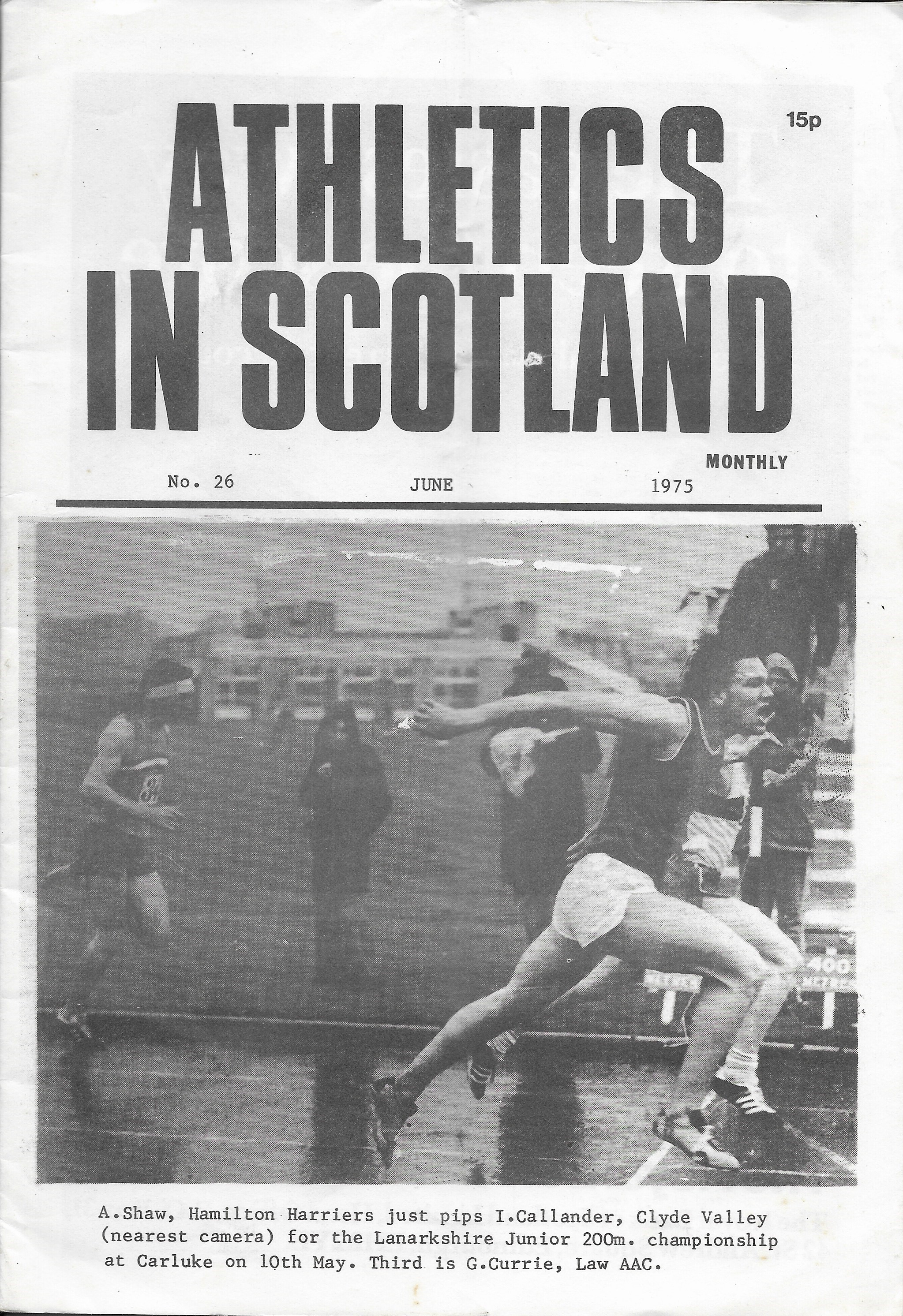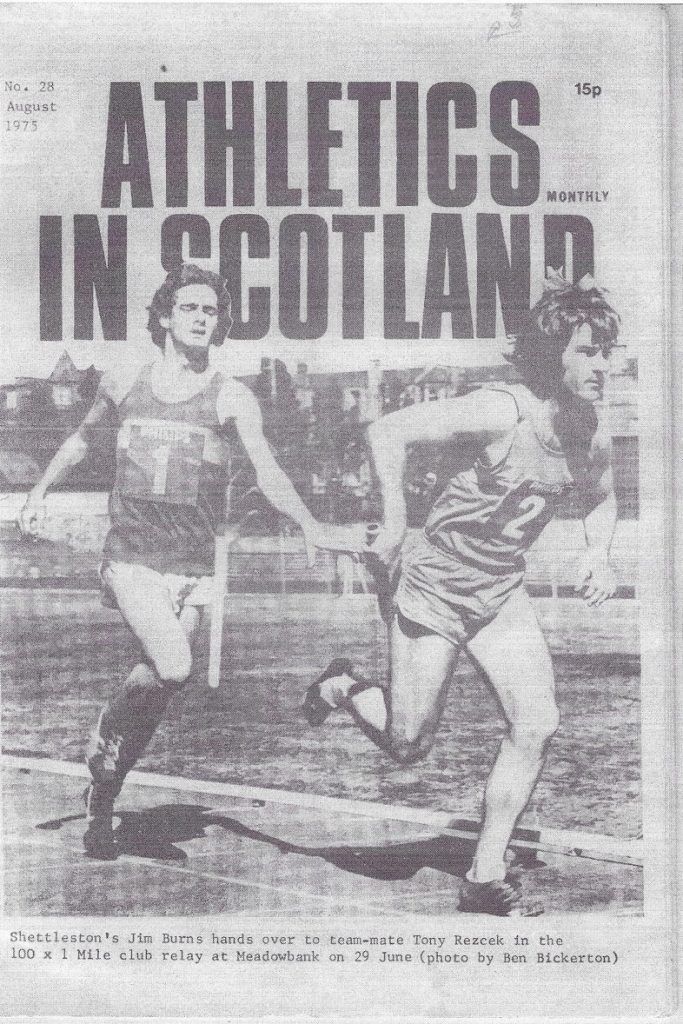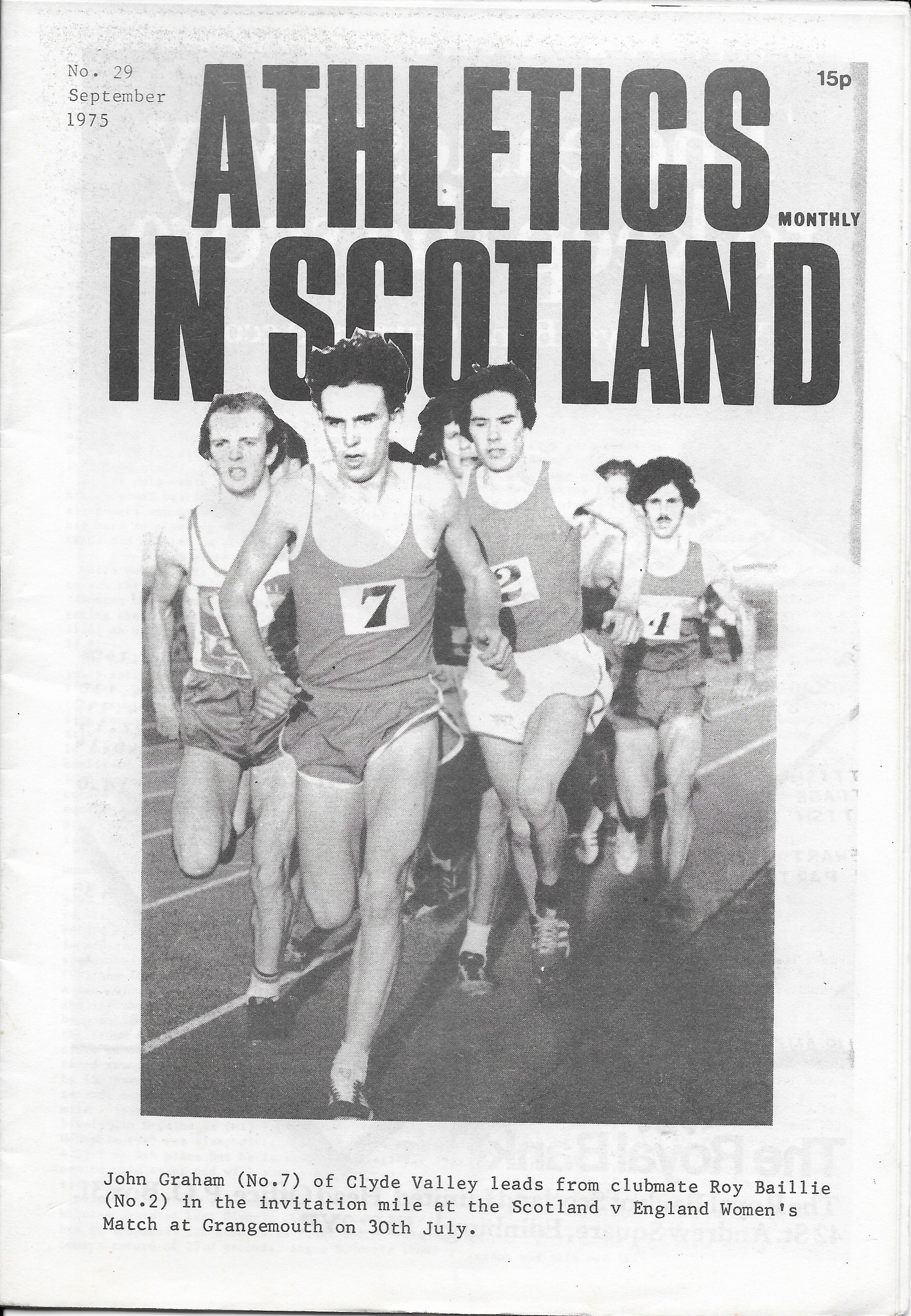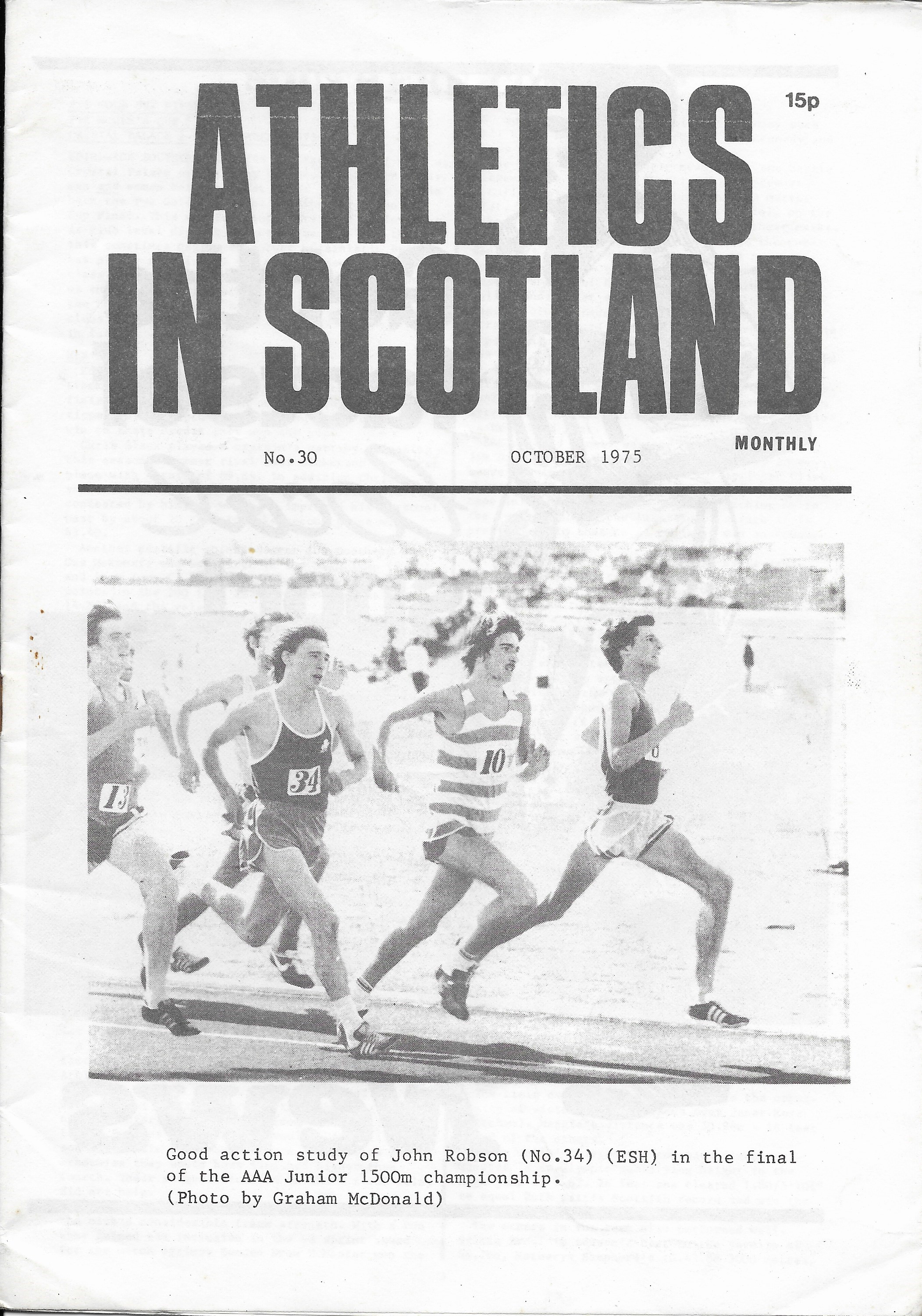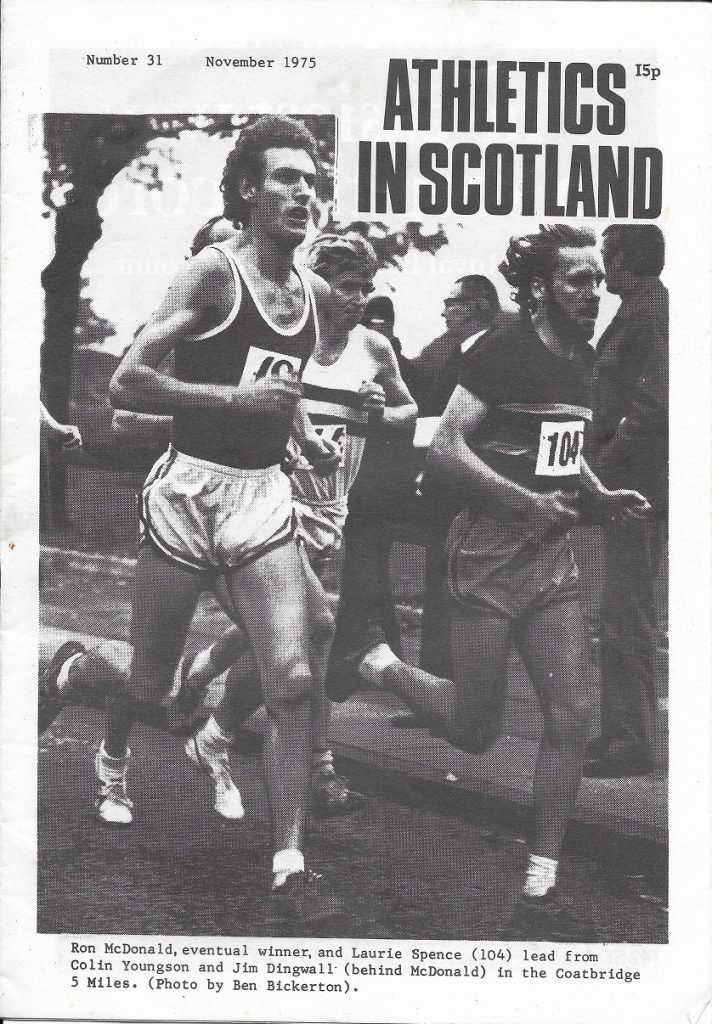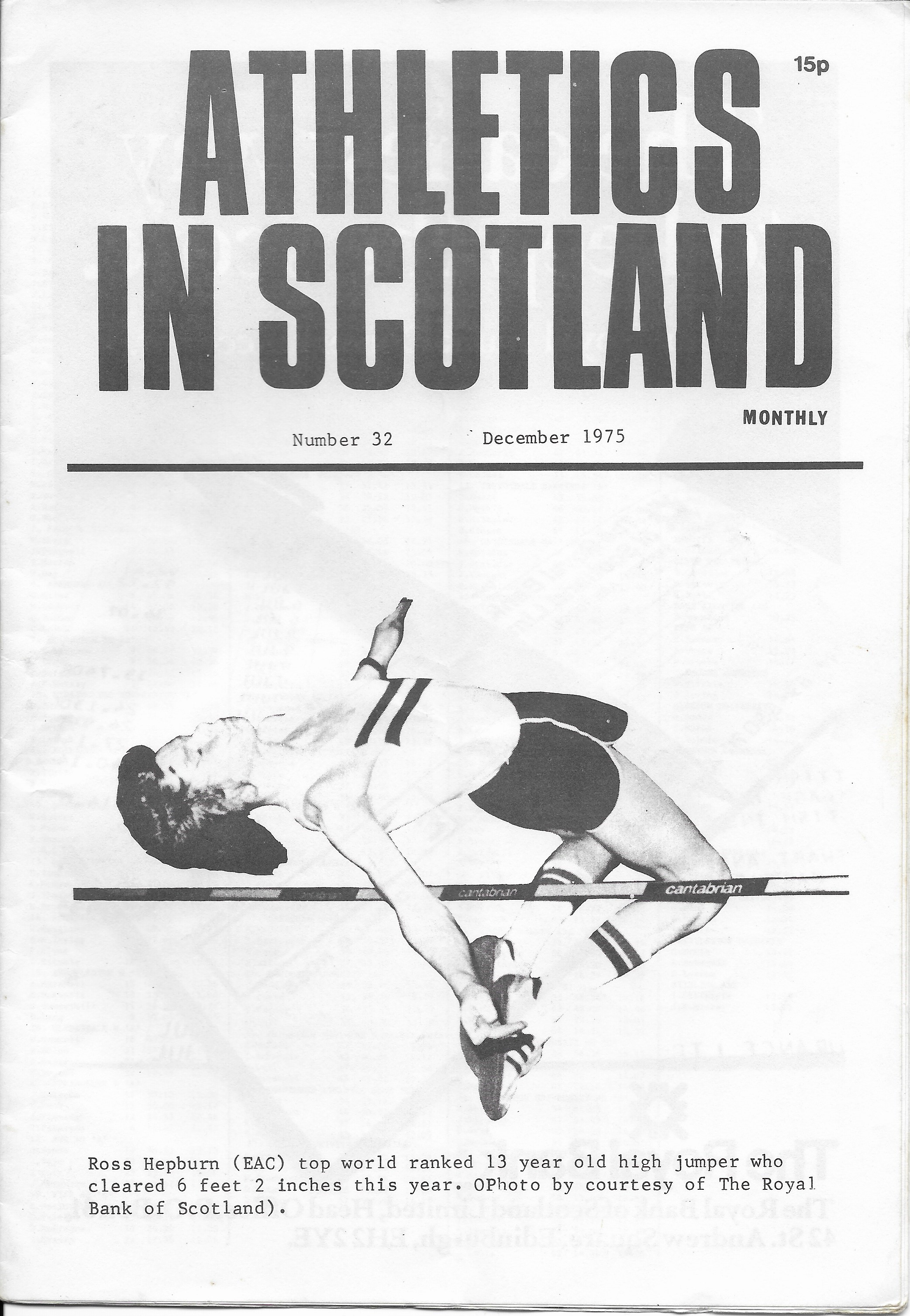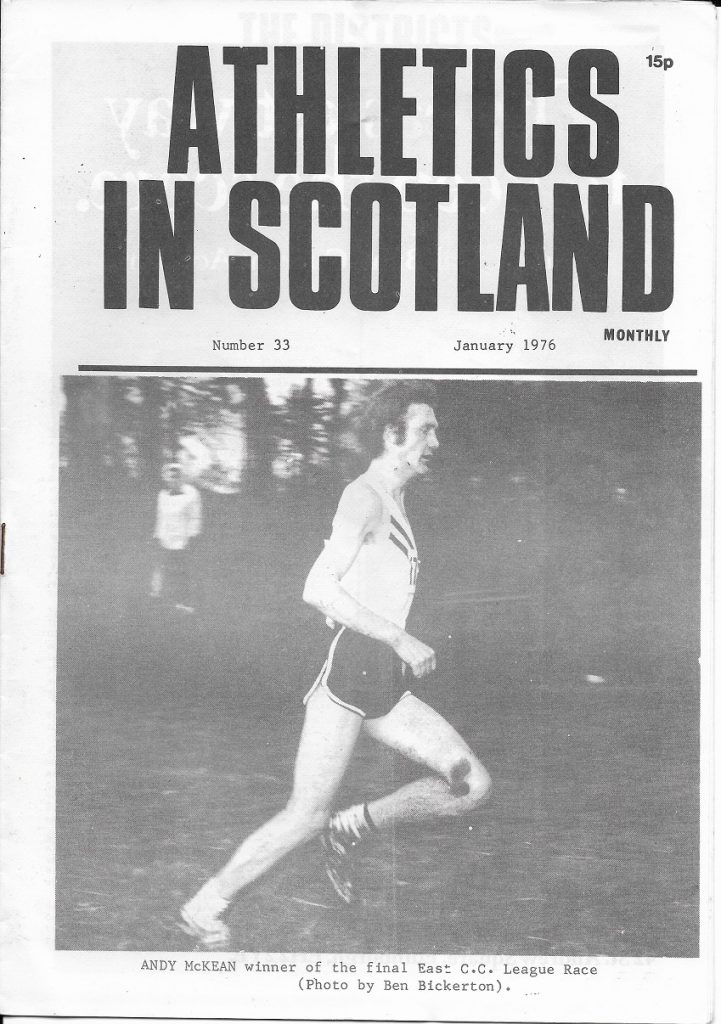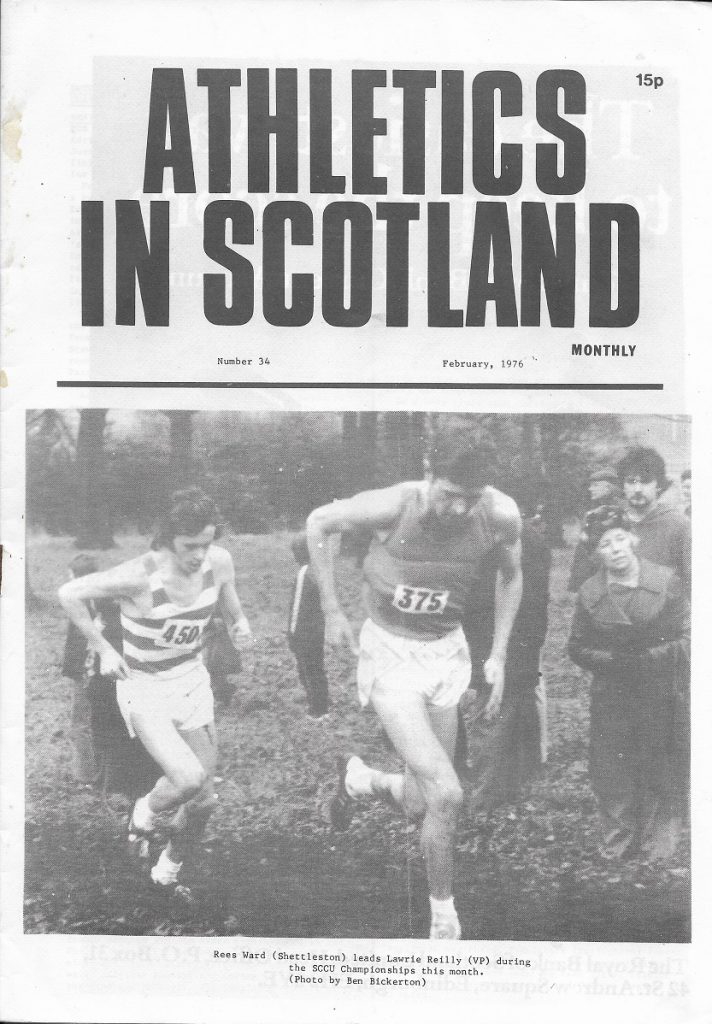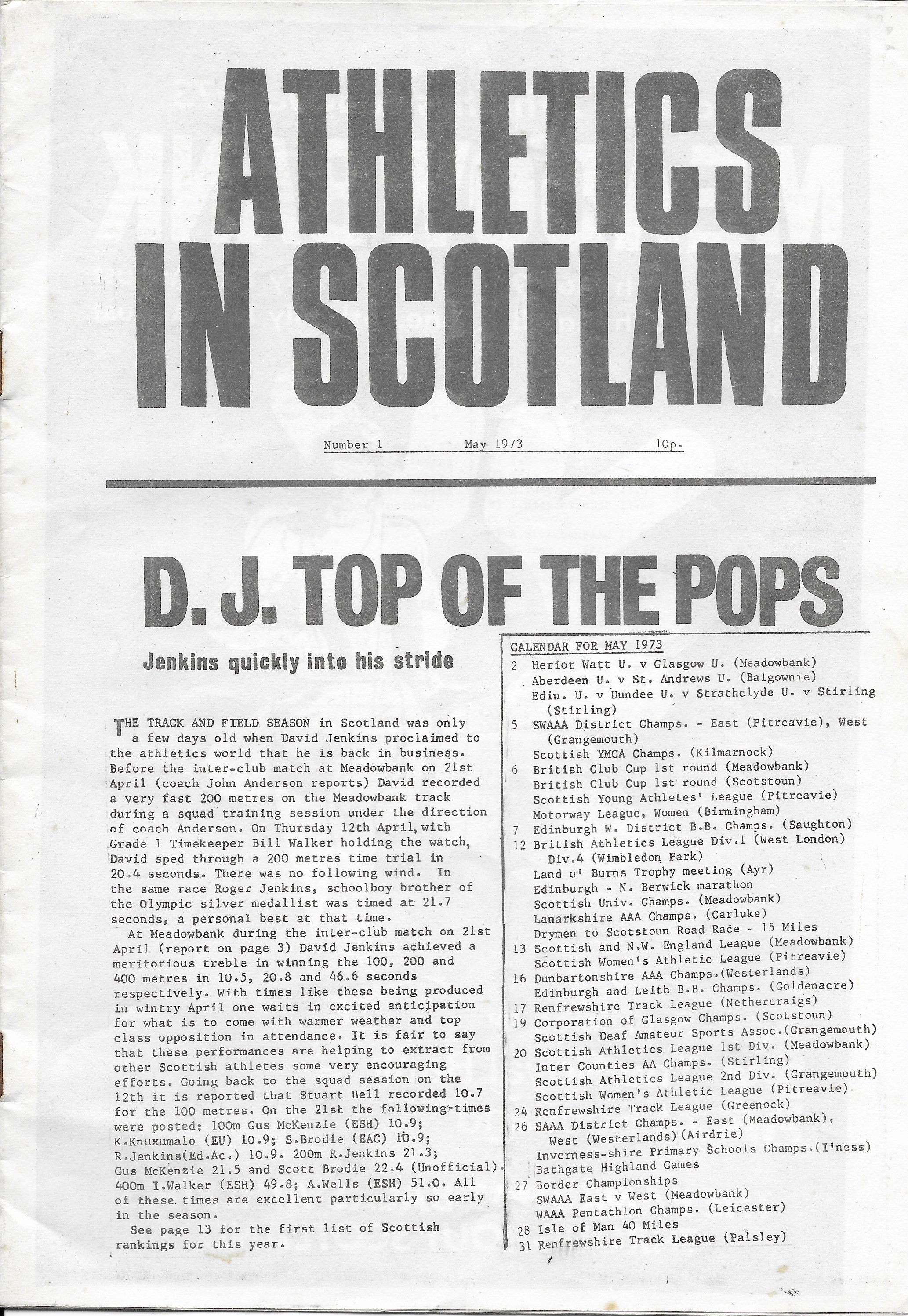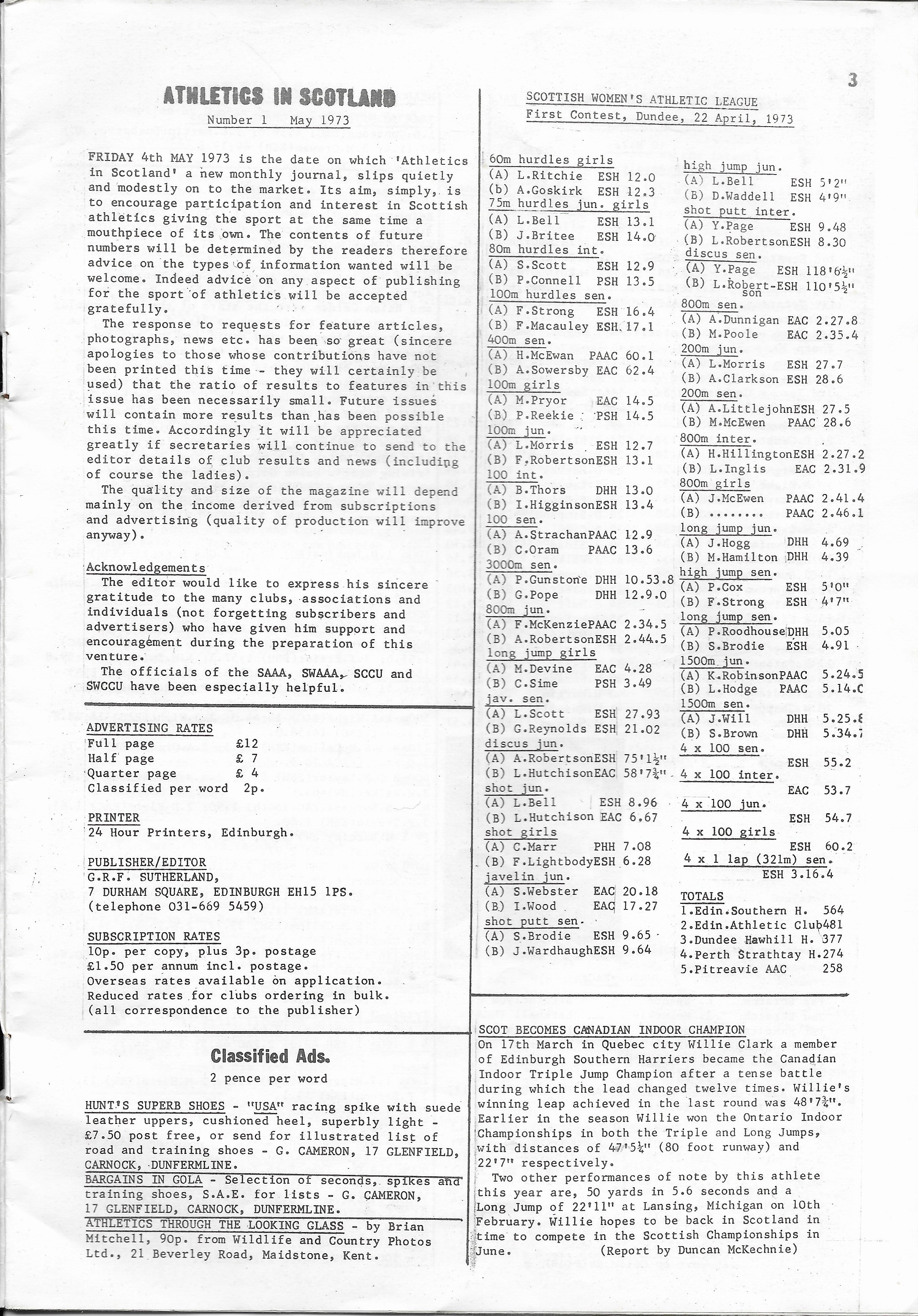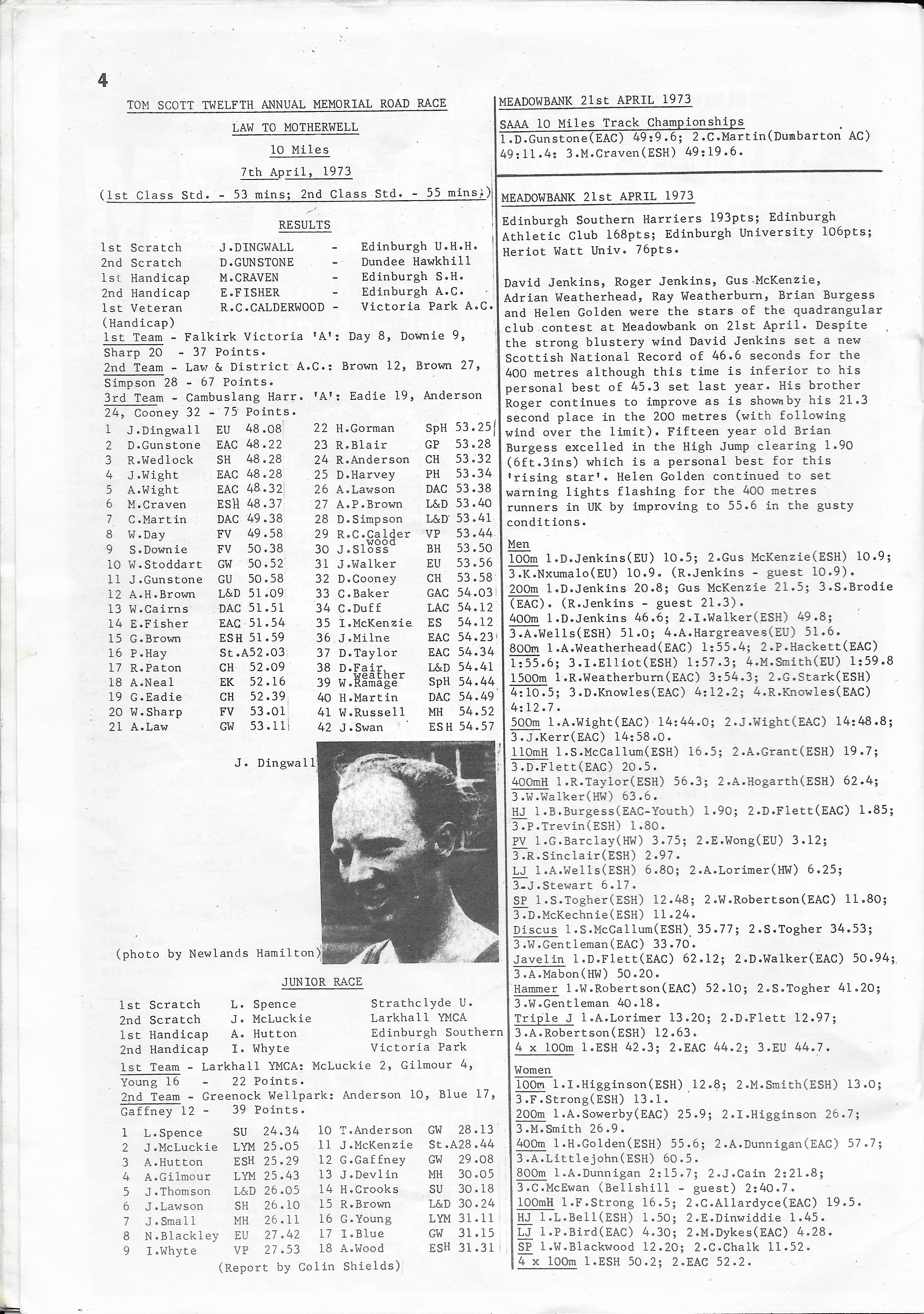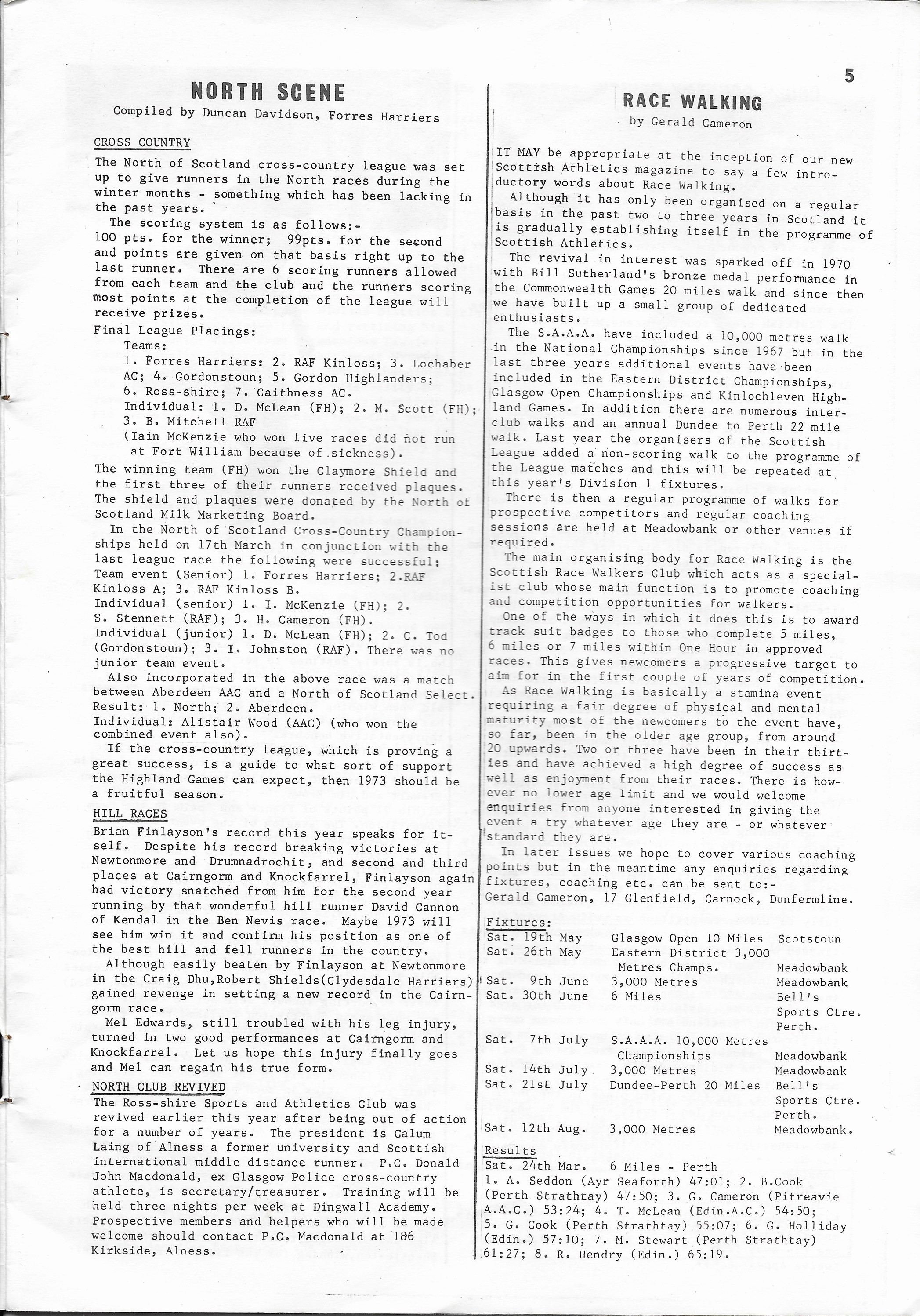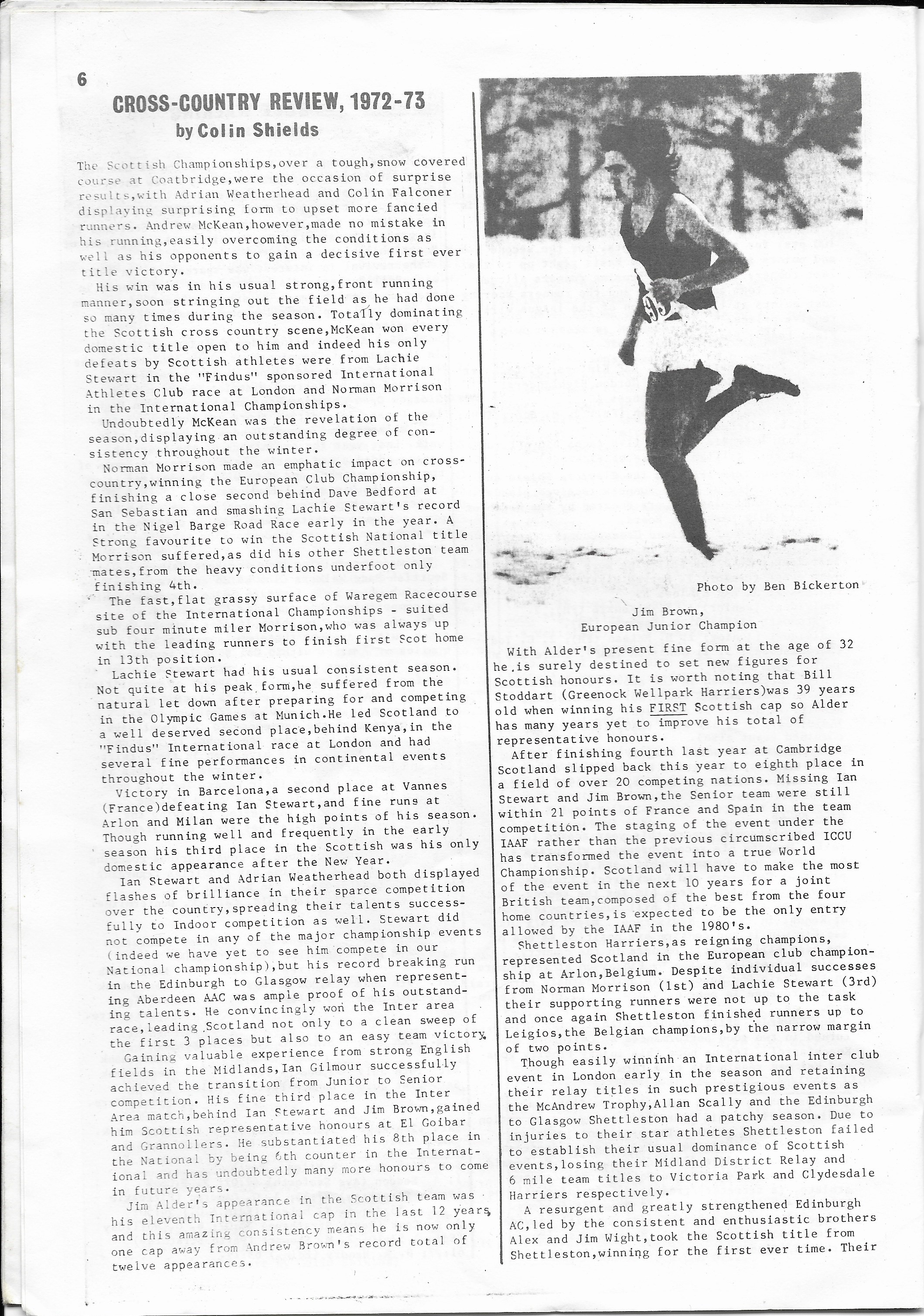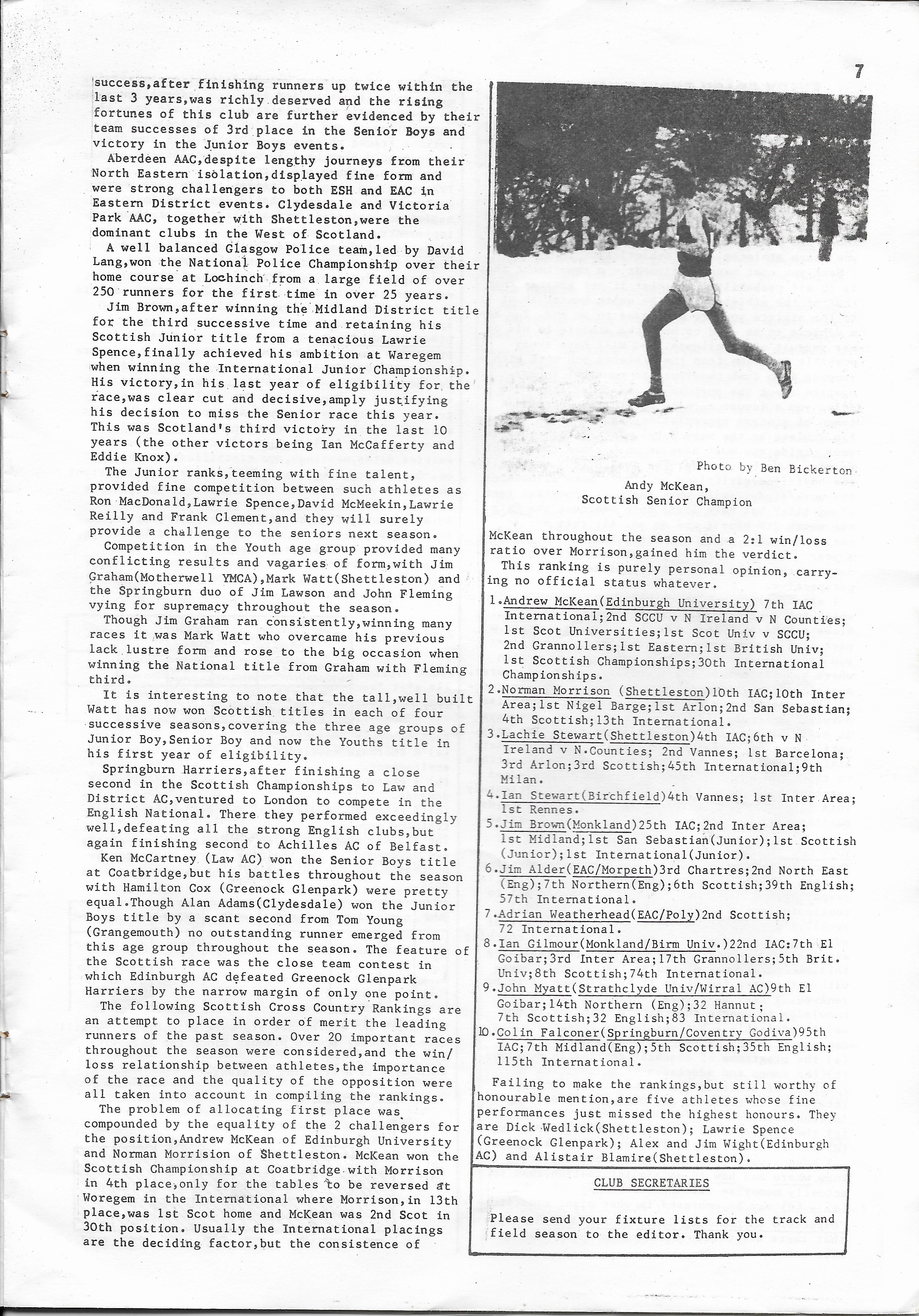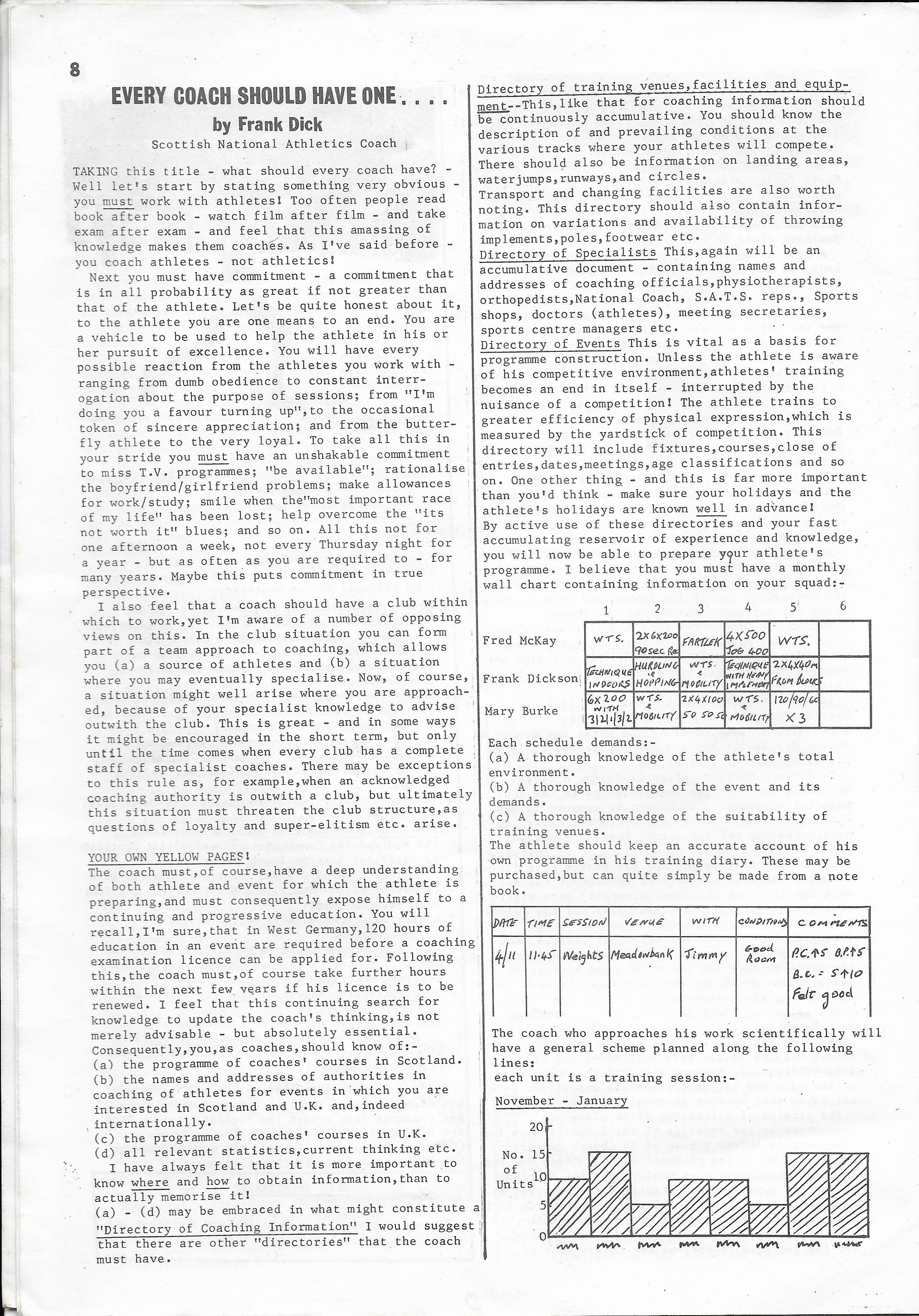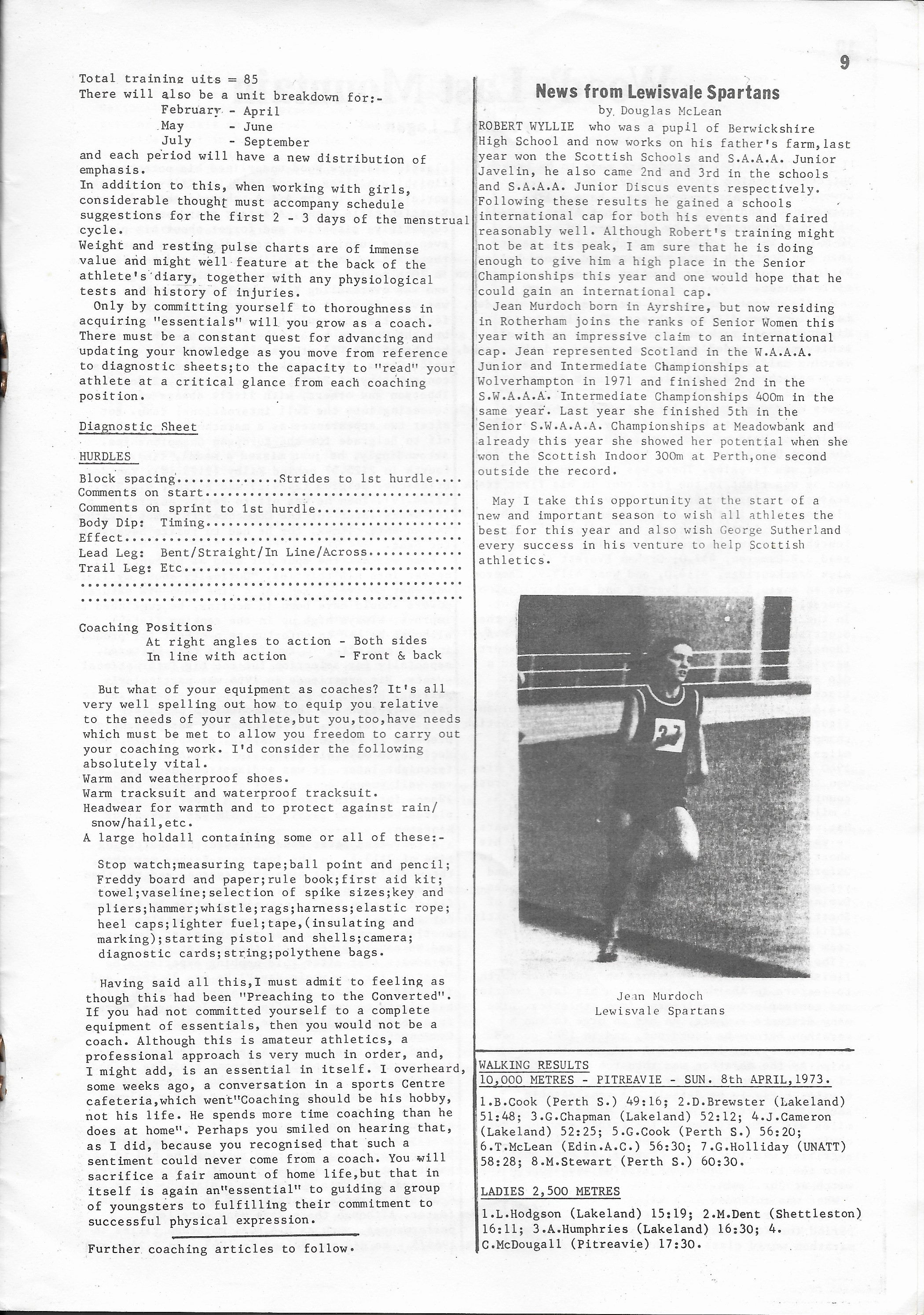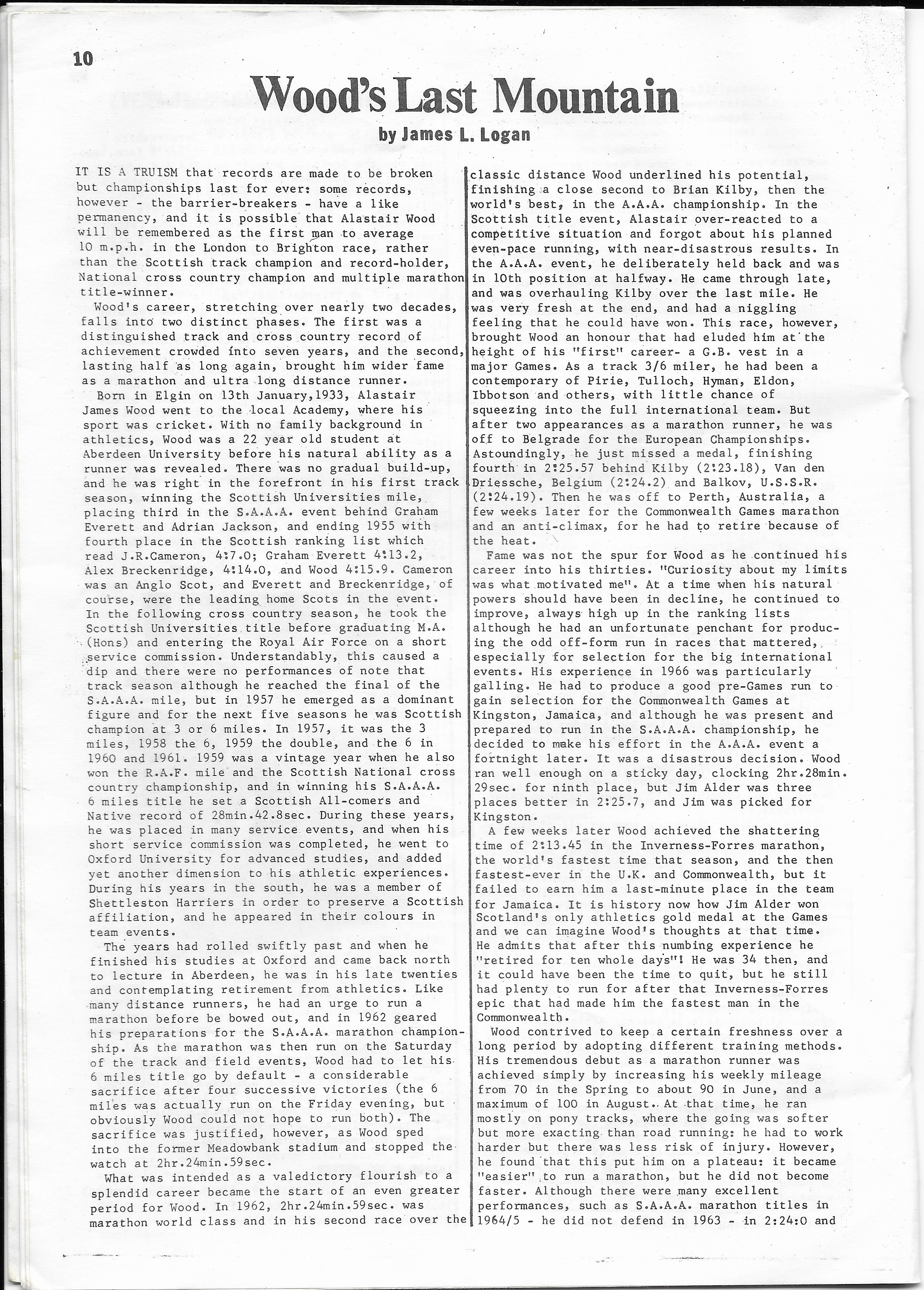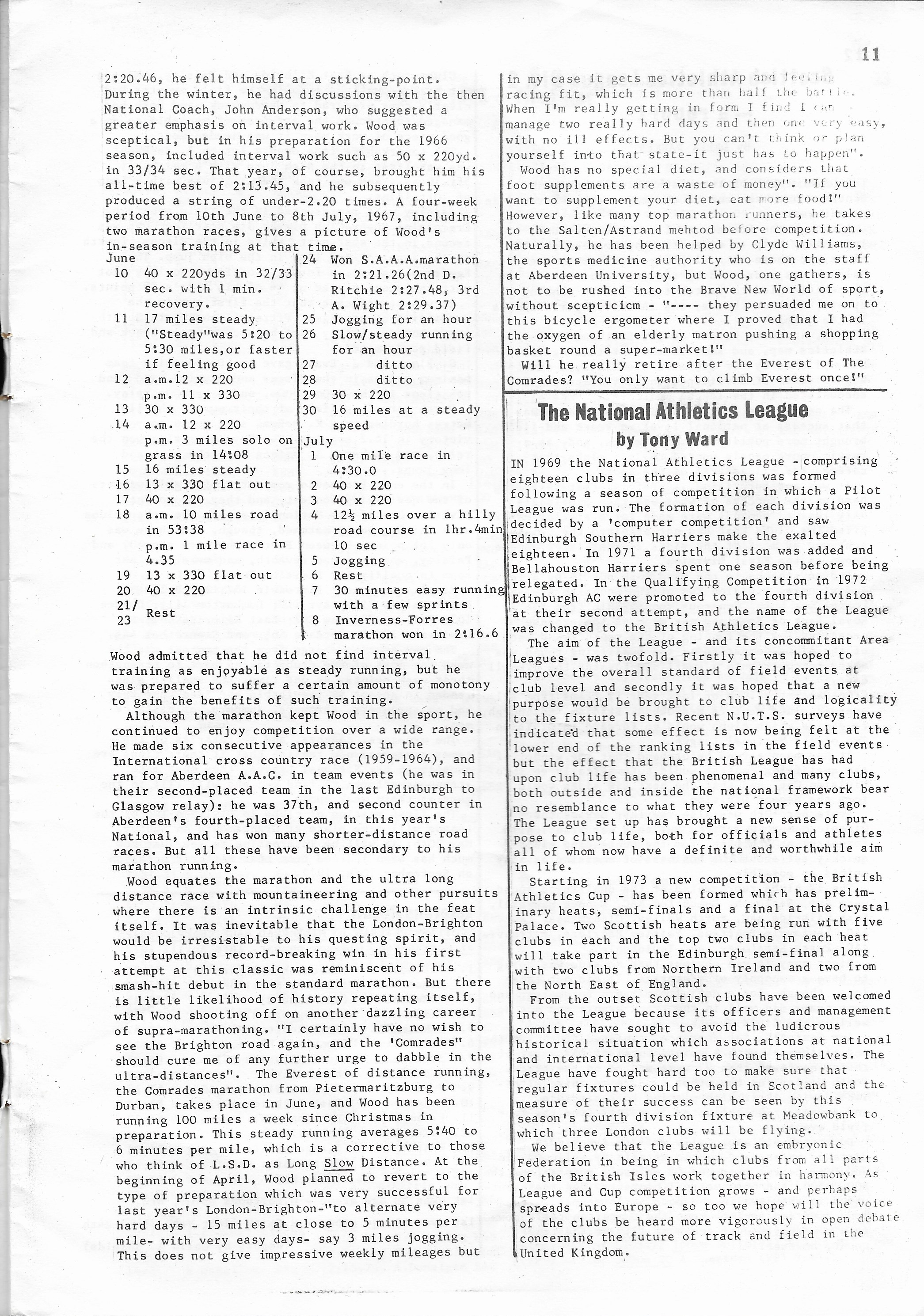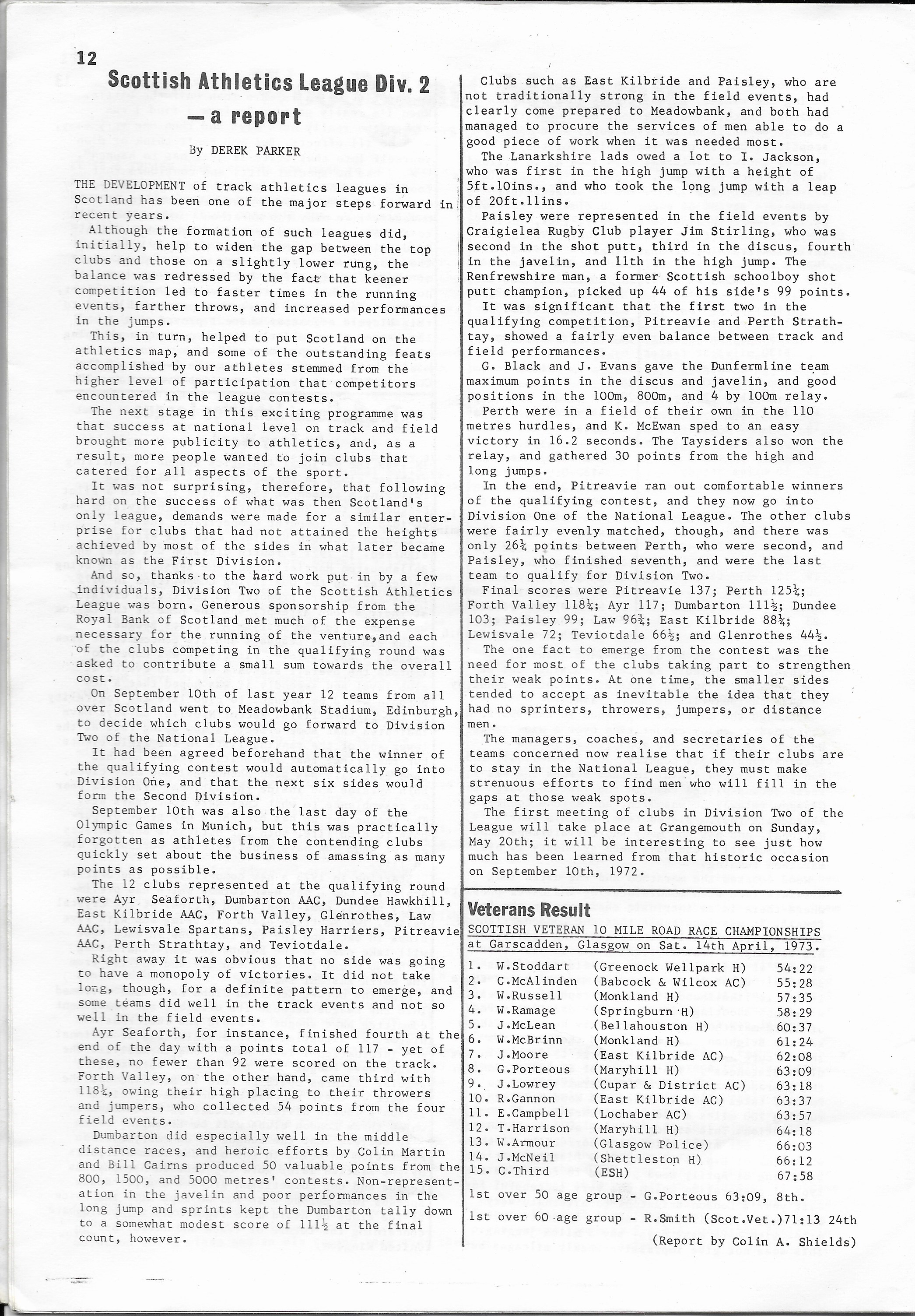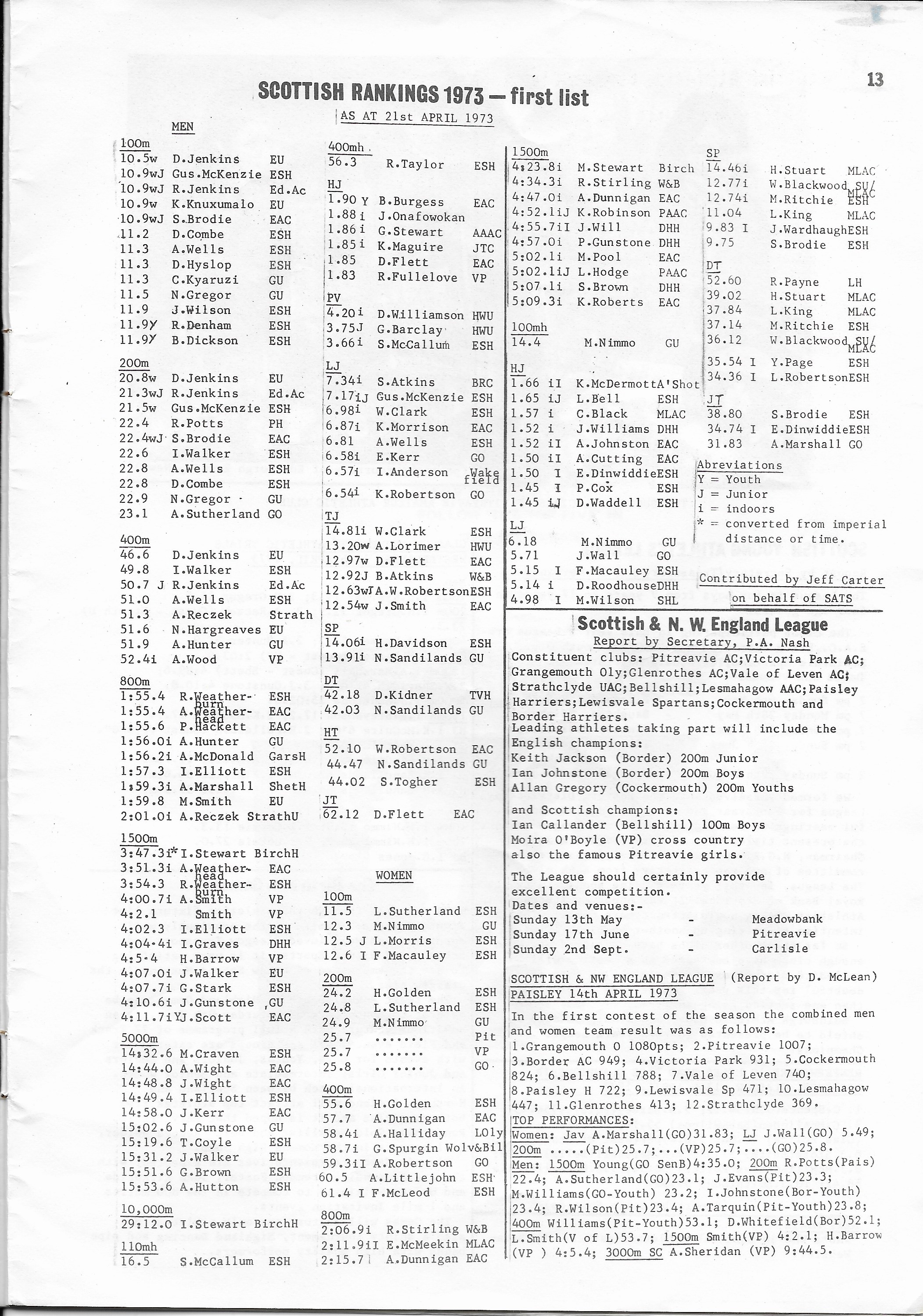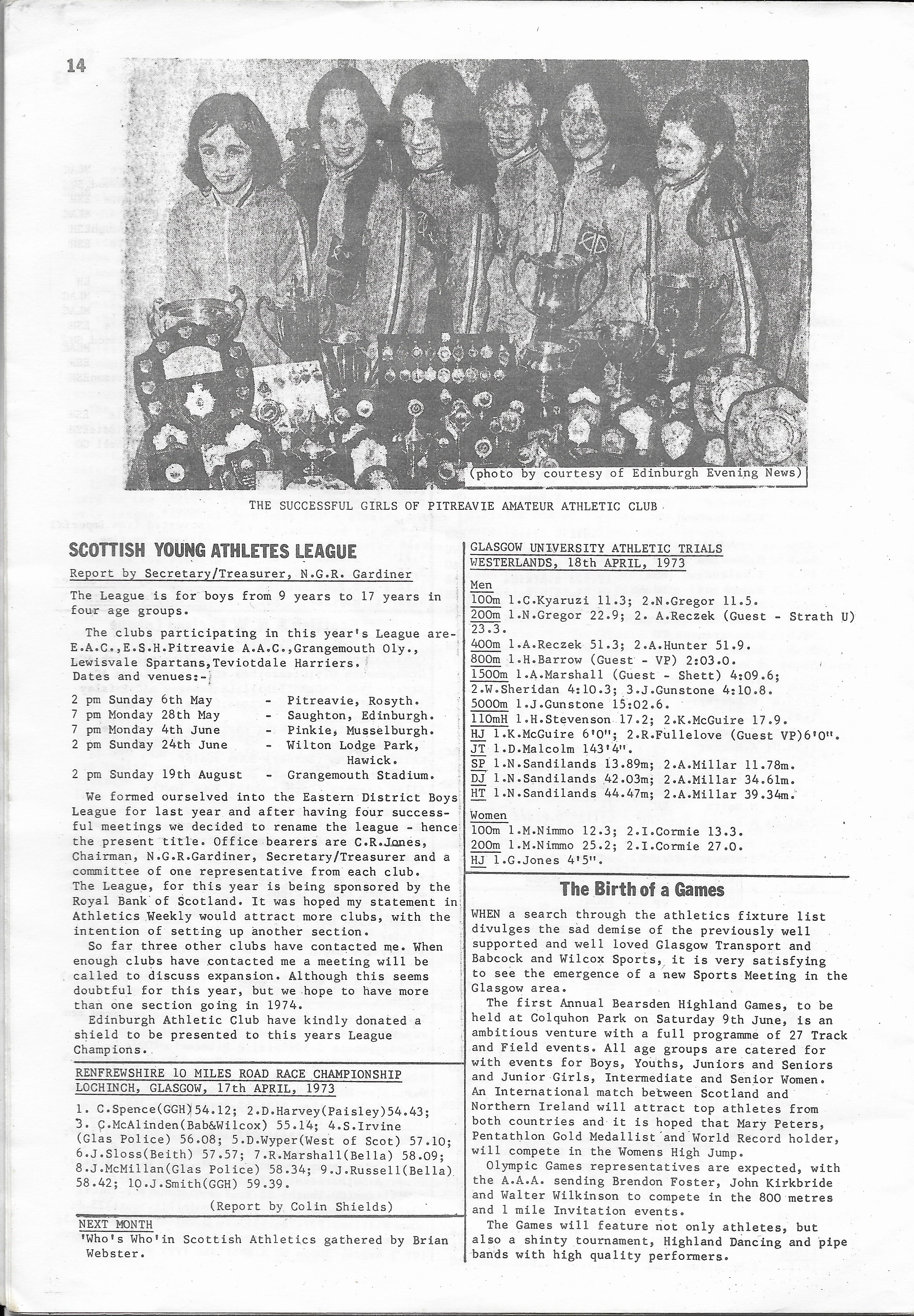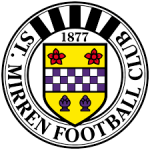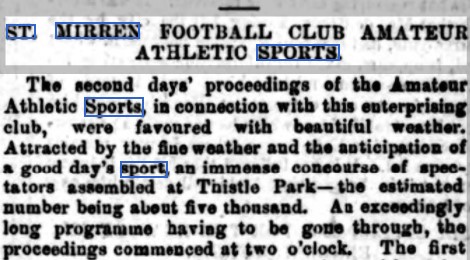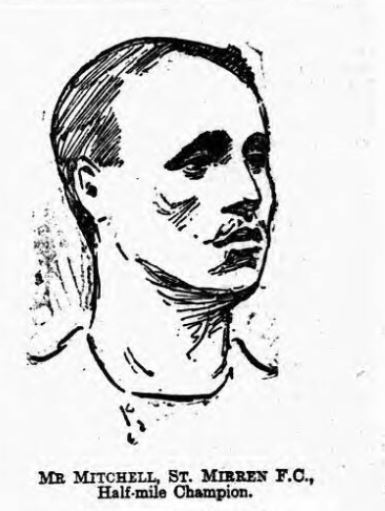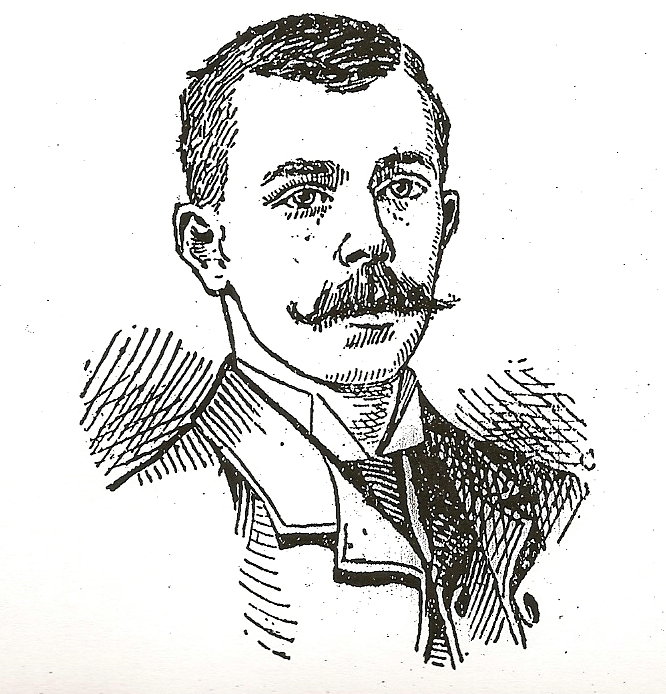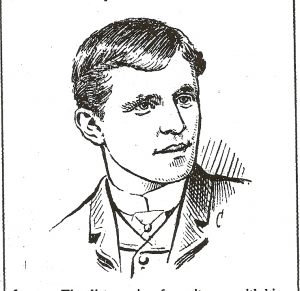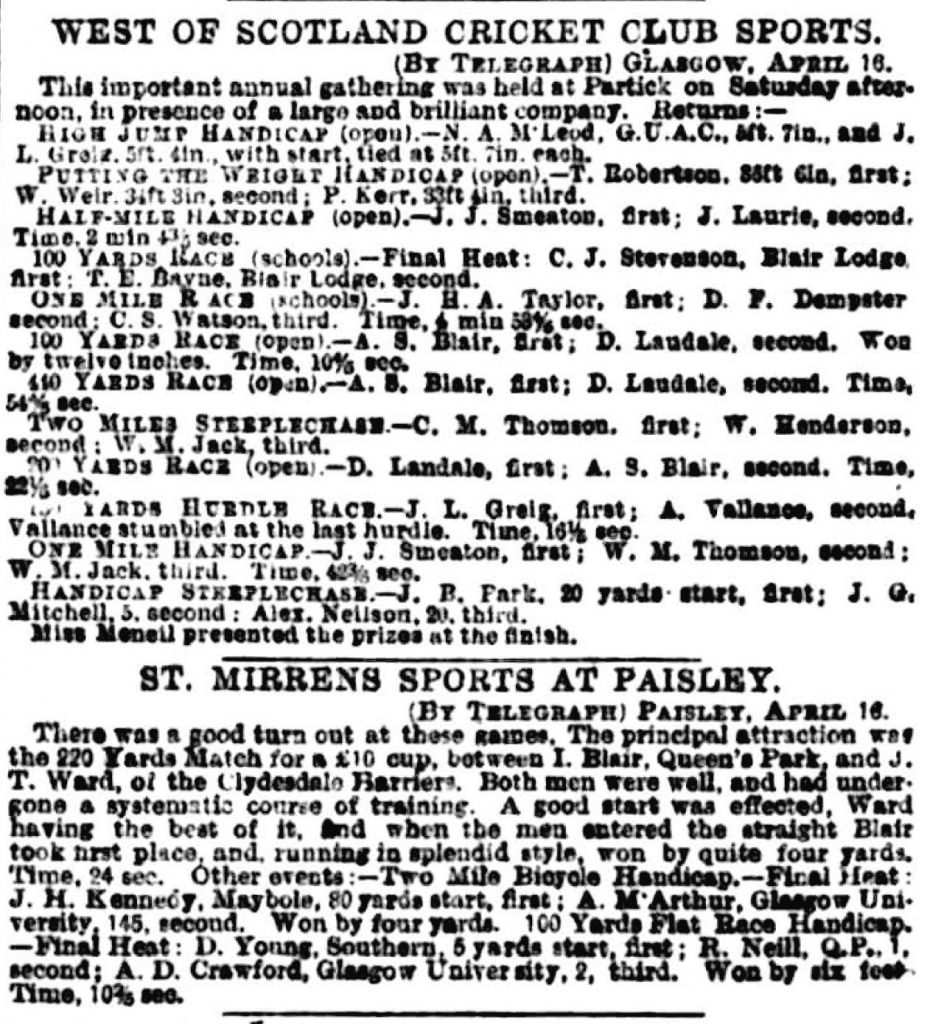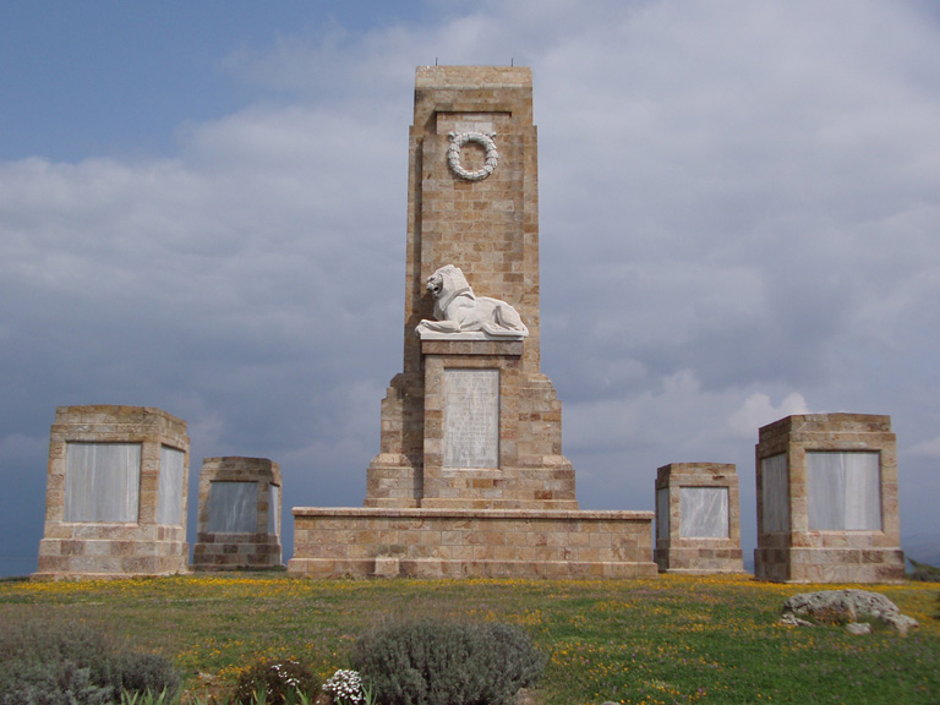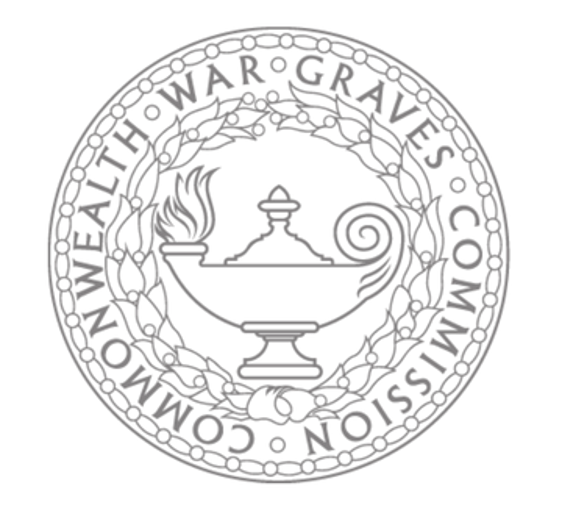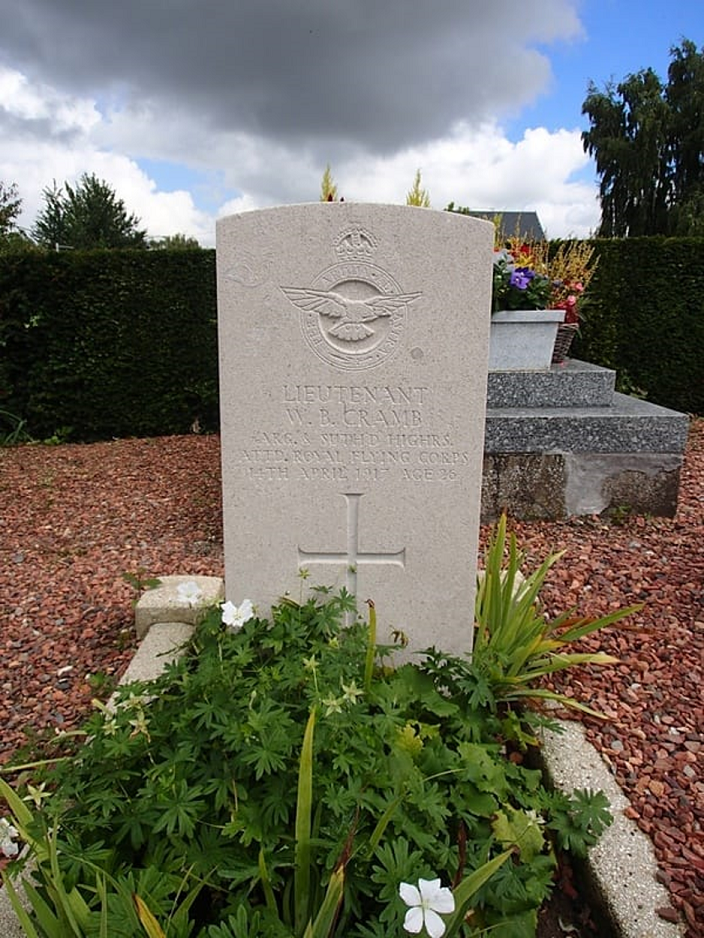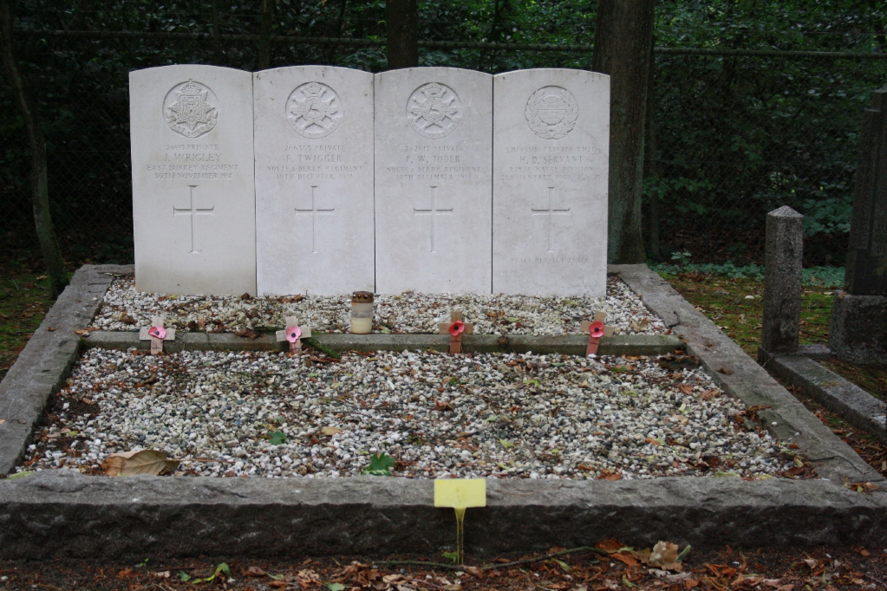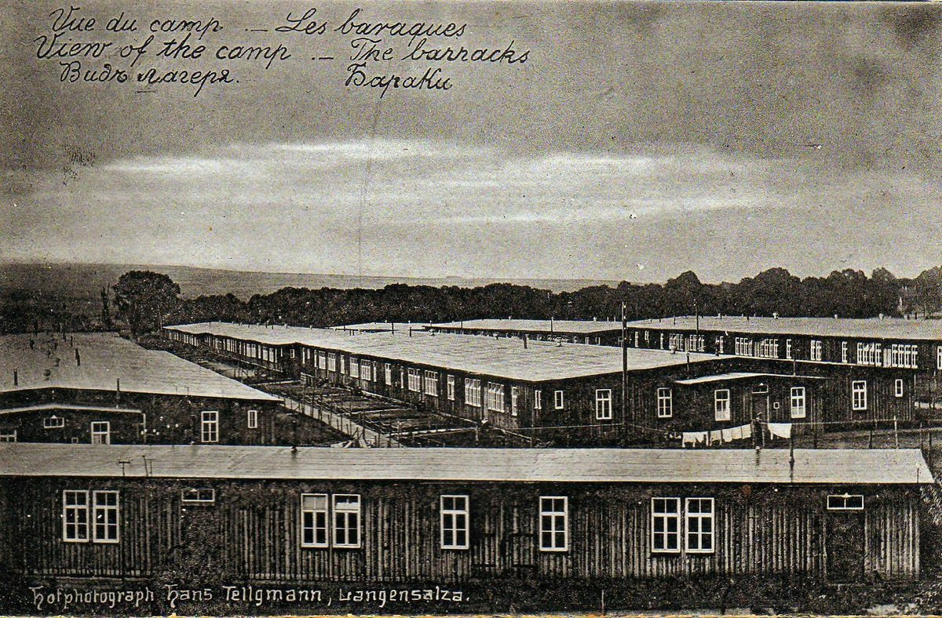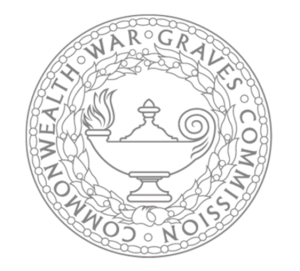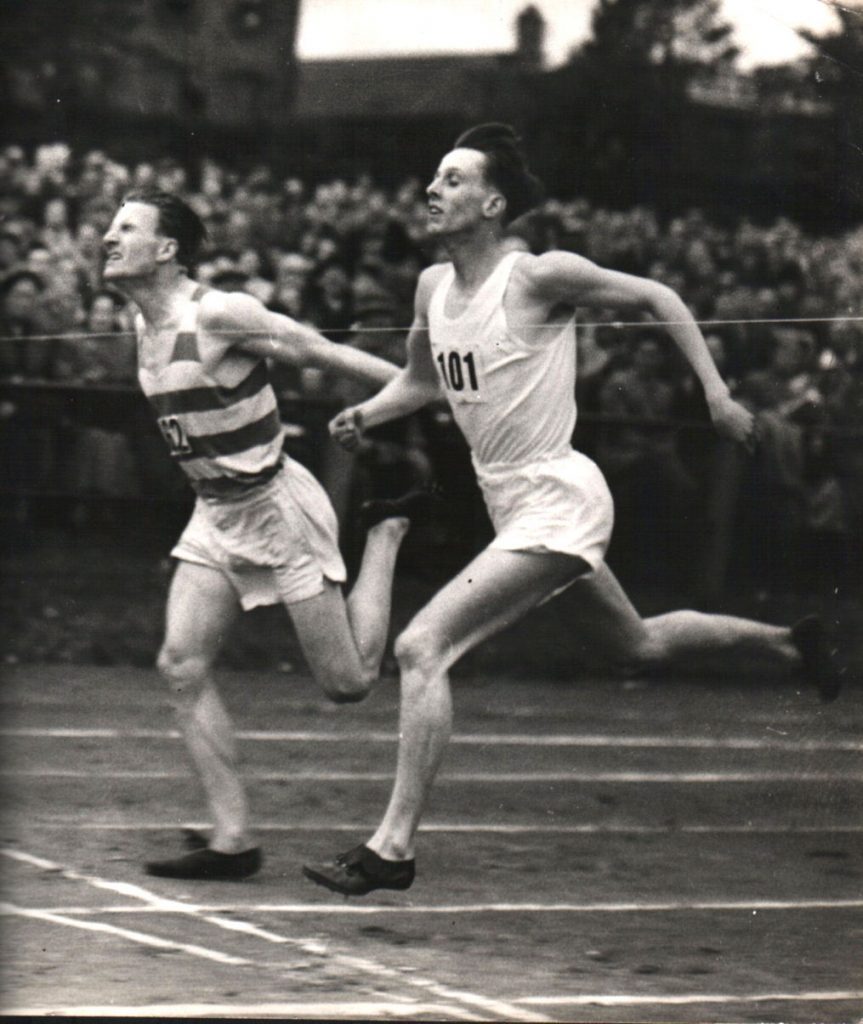
Bobby Quinn (left), SAAA Championships 1955
Bobby Quinn was a lifelong member of Victoria Park who was an international class sprinter over all three sprint distances of 100, 220 and 440 yards and very good relay runner in 4 x 110 yards, 4 x 440 yards and medley teams which almost monopolised the Scottish championships. His contemporaries included Willie Jack, Ronnie Whitelock, Alan Dunbar and his twin brother Harry. Unlike the others Bobby and Harry continued in the sport as officials long after their running career had finished and officiated at international and national fixtures and championships as well as at Commonwealth Games.
The Victoria Park website tells us of his early years:
“Born in Detroit, USA in 1929, Bobby and his twin brother Harry came to Scotland when they were 3 years of age. Like many of his generation, Bobby started out by doing his national service in the Royal Electrical and Mechanical Engineers (REME) and was based at Mill Hill Barracks near London. His time served in the army prepared him for a life as a motor mechanic with the Scottish Development Agency.
Bobby and his twin brother Harry were encouraged to join Victoria Park Athletics Club by the great Ian Binnie and trained with the top athletes in the country. He wouldn’t have known then that his association with athletics would last a lifetime.”
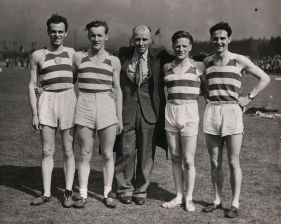
Bobby second from the right
In the national championships in June 1951 Bobby qualified for the final o the 100 yards but was unplaced. His first SAAA medals came in July 1951 when he was part of the 4 x 110 yards relay team that won the national title along with W Jack, R Kennedy and W Christie. In August, running from 5 yards he was third in the open 120 yards at the Rangers Sports, won by club mate Willie Jack in 11 seconds.
Then in the 100 yards at the national championships in June 1952 he was fifth in the 220 yards won by Willie Jack (Victoria Park). He followed that with two medals in the SAAA Relay championships at Helenvale Park in July when he was in the winning 4 x 110 team (McDonald, Quinn, Wilson and Whitelock) and ran a 220 yards leg of the Medley Relay team (Sime, Whitelock, Quinn and Mill). Then in the Rangers Sports on 3rd August, off 3 yards, he was giving his twin brother Harry and yard and a half in the open 100 yards and that was how they finished – Harry won with Bobby runner-up. The photograph below is of the team that won on 23rd August, 1952, running in the order of McDonald. McLachlan, Quinn and Hamilton.
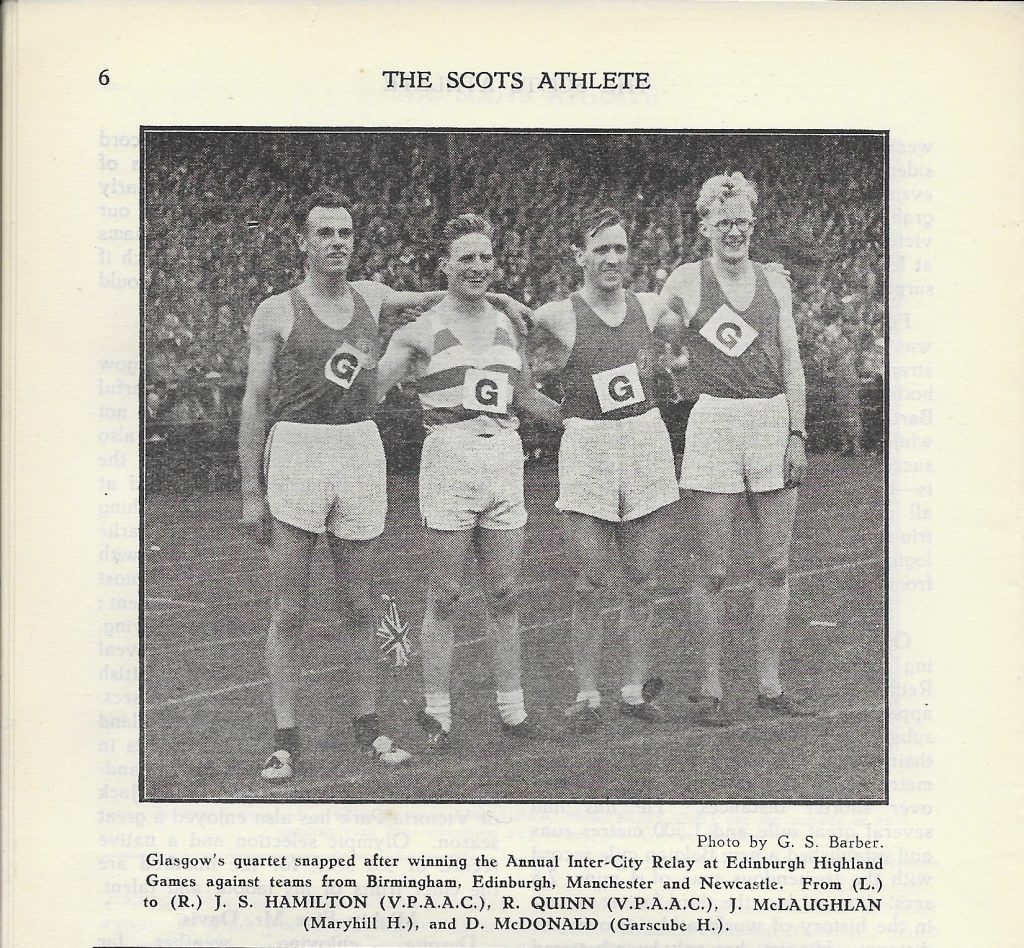
The following year, in June 1953, in the 100 yards he was fourth behind W Jack (VPAAC) in 10.0, R Whitelock (VPAAC) in 10.1 and A Dunbar (VPAAC) in 10.1. Four runners from the same club were the first four in the national championships. Quinn was also fourth in the 220 yards in 22.8 behind Jack, W Henderson (Edinburgh Northern) and Whitelock. The Quinn brothers won their first medals together on 3rd July, 1953, when they were members of the club 4 x 110 team that won the SAAA championships, and then they ran the two 220 yard stages for the winning medley relay team. Four medals for the Quinn Twins on the one afternoon. He followed this excellent weekend with a victory in the invitation 120 yards at Rangers Sports on 1st August off 4 yards from Crawford of Bellahouston.
1954, ’55 and ’56 were undoubtedly his best years and more detail will be given for them.
Although he took part in the 1954 early season club events and inter-club fixtures, the standard in the sprints was very high indeed but the Glasgow Highland Gathering at Scotstoun on 29th May saw him win the invitation 440 yards handicap off a mark of 18 yards in 49.2 seconds. A week later he raced on the south side of the river at Shawfield Stadium in the Lanarkshire Police Sports where he won the 220 yards from 5 yards in 22.9 seconds. The next medal was on 19th June in Edinburgh when the Glasgow Herald had this to say: “R Quinn (Victoria Park) resisted a strong challenge by KA Robertson (Edinburgh University AC) in the last leg of the Scottish 4 x 440 yards relay championship in the Edinburgh Lighting and Cleansing Department Sports at Meadowbank and brought victory to his club. Quinn passed Robertson in the final straight. Robertson made a supreme effort and only the judges knew who had broken the tape.”
With the SAAA Championships on the weekend of 24th June, 1954, Quinn was rounding into form very nicely when he won the 100 yards at the Glasgow Inter-Club race at Westerlands on 15th June in 10.2. In the June 1954 issue of the Scots Athlete, Emmet Farrell was looking at the SAAA Championships with a view to spotting potential team members and for the sprints he hedged his bets by listing McKenzie (EUAC), Alan Dunbar, Henderson (Watsonians) and R Quinn as contenders. On the actual day, Henderson won both sprints with Quinn being third in the 100 in 10.5 seconds – the same time as winner and second placed Dunbar! Three men together on the line in the same time. He was second in the 220 with Dunbar back in sixth place. Emmet commented after the championships that “versatile R Quinn in the sprints has been a sheet anchor in in Victoria Park’s great winning relay efforts when his courageous finishing efforts have frequently taken the tape from his opponent’s vest.”
At the end of June 1954 he was fourth fastest in the country with the 10.2 from the Westerlands meeting. By the end of September, he topped the rankings with that same time his best – and Scotland’s – for the season with Gordon Cain of Edinburgh Northern on 10.3. Not in the first four in the 220 he was down as ‘notable’ with his time of 22.3 off 3 yards at Ibrox on 7th August. That time was done in the Rangers Sports where he won the invitation 100 yards from clubmate W Breingan and Donnie McDonald of Garscube Harriers. On 21st August he was back in Edinburgh again on relay business at the Highland Games but unfortunately the Glasgow team of McDonald, Dunbar, Quinn and Kirk could only finish third behind Birmingham and Manchester in the Inter City Medley Relay, and third again in the Inter Association Medley Relay behind England and Ireland with a team of Stoddart, Henderson, Quinn and McDonald.
In the national sprint relays, Harry missed out but Bobby was in both teams again running the anchor stage for each – the relay leg being the 440 yards. By the end of 1954 he had been in three gold medal winning relay teams – 4 x 110, 4 x 440 and the Medley Relay. The club went on to win the 4 x 110 every year until 1959 and then again in 1961; they also won the medley relay every year between 1952 and 1955 inclusive.
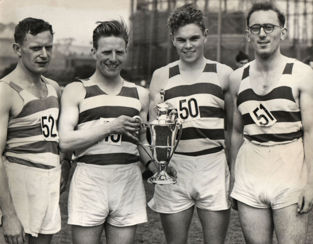
On 7th May 1955, in an inter-club with Shettleston Harriers and Heriot’s FP he won the 440 yards in 50.8 seconds and also ran in the winning relay team for the club which won easily. A month later on 4th June, in the Glasgow Police International Sports at Ibrox Park, Bobby won the 440 yards from the back mark of 1 yard in 22.5 seconds, a performance that the Glasgow Herald described as one of his best. At the same meeting he was part of the team which won the championship medley relay, the team being Henson, Hamilton, Archibald and Quinn. Next up was the national 4 x 110 yards relay on 11th June at the SWAAA championships, where Victoria Park teams were first, second and third. It was now a race a week for him and on 18th June at the Lanarkshire Police meeting at Shawfield, he won the 220 yards in 22.4 seconds from the mark of 1 yard (which is really no mark at all).
A week later in the nationals, he was a finalist in the 100 yards but his first individual gold medal came in the 440 yards where he defeated JV Paterson with both men credited with the fine time of 49.6 seconds. It was such a good race and showed so many of Quinn’s qualities that it is worth reproducing the ‘Scots Athlete’s report in full:
“Three heats were held on Friday evening. Many enthusiasts considered JV Paterson a certainty, and even more so after the way in which he covered the distance sensibly in 50.2 seconds in his heat. However, it was to be no easy task for Paterson but the toughest, closest and most exciting event of the championships. Atr the start it was Quinn off for a very fast 300 yards closely followed by Paterson. D McDonald who had been runner-up in three previous years, was sluggish on the outside while Sanderson, Steele and Taylor were completely left at this stage. Round the bend Quinn’s very fast pace early on showed itself and he began slowing. It was then Paterson began to move away and he entered the straight in the lead. 50 yards to go it looked Paterson but slowly and perceptibly Quinn closed the gap and at the tape, although both dipped, Quinn’s burly chest got there.”
On 2nd July that year the club suffered a rare defeat in the SAAA 4 x 440 yards championship at Westerlands in the Scottish Schools Championships. The race was won by the Clydesdale Harriers quartet with Shettleston second and Victoria Park back in third. On July 23rd he was at the Linksfield Stadium for the Aberdeen Corporation Sports where he won the quarter mile:
“R Quinn (Victoria Park AAC) , the Scottish quarter-mile champion, equalled the ground record of 49.5 sec when he won the 440 yards. He and JV Paterson ran from scratch in the ‘quarter’ but Paterson was beaten into third place by D Martineau (Aberdeen) who had a handicap of 35 yards.”
Unusually, Bobby did not feature in the prize list at the Rangers Sports at Ibrox but in the other major meeting – the Highland Games at Murrayfield on 20th August – he was in action in no fewer than three races. In the Invitation 440 yards race against the real ‘big boys’ of quarter miling, he finished third behind Peter Fryer of England and S Steger of Switzerland. Then it was on to the two medley relays: in the Inter Association race the Scottish team of Gorrie, Robertson, Henderson and Quinn was second behind England and ahead of Eire, and in the Inter City race Glasgow was second behind Birmingham with a team of McDonald, Robertson, Quinn and Stoddart. On the first Saturday in September at the Shotts Highland Games, Victoria Park won the 4 x quarter lap relay but it is not clear whether Bobby was in the team. The season was pretty well closed by now with only the Dunblane meeting to go but that was avoided by most Victoria Park runners – they had had a good season and Bobby in particular had a lot to remember.
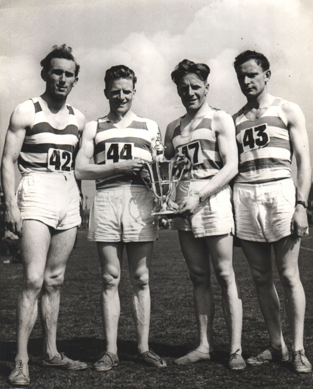
On 5th May, 1956 in an inter club fixture with Clydesdale Harriers and Shettleston Harriers, Ronnir Whitelock won the 100, Dunbar the 220 and Bobby took the 440 yards in 51 seconds before being part of the winning 4 x 440 relay team with McIsaac, Christie and Reilly – McIsaac being another top class sprinter to roll off the VPAAC Production line. There was also a Quinn in the winning 4 x 110 team but this time it was brother Harry. The result of the meeting was a victory for Victoria Park (84) points from Clydesdale (36) and Shettleston (26). In a match at Craiglockhart on 12th May, Bobby was part of the 4 x 440 relay team which won in 3 min 27.4 sec. There was no Scottish record for the event at the time but it was believed to be the fastest ever run by a club team. Bobby ran the firsts stage this time then it was Smith, McIsaac and Thomson. On 9th June, the team could only finish second in the SAAA Medley Relay behind Edinburgh University.
Quinn and Paterson were again first and second in the national quarter mile championship on 23rd June 1956 but this time there was daylight between them with Quinn timed at 49.8 seconds and Paterson at 50.3. Bobby also ran in the 220 yards that afternoon where he was unplaced in the final.
Harry and Bobby were again in the winning 4 x 110 yards relay team on 7th July at New Meadowbank during the Scottish Junior Championship meeting. The club were second however in the 4 x 440 relay behind Edinburgh University who ran a new best time for the distance of 3 min 26.8. In the Rangers Sports at Ibrox on 4th August Bobby ran very well in the invitation 440 yards to be third behind TS Farrell and H Kane of the AAA’s but the family honours went to Harry – read this one:
“The feature of the open events was the sprint double of H Quinn (Victoria Park) , twin brother of the Scottish quarter mile champion. He won the open 100 in 10.0 seconds from four and a half yards, and the furlong in 22.1 from 10 yards.”
It had been a very good three years for Bobby.
*
On 17th May in a club competition, Bobby ran a fast 440 of 50.9 seconds on the cinders at Scotstoun which indicated that he was back and running well in the new season. In 1957, his sole medal in the SAAA Championships was a silver in the 220 yards behind W Henderson of Watsonians with 0.2 seconds separating them (22.7 to 22.9). Two weeks after that he was a member of a brilliant, even by their own high standards, 4 x 110 yards relay team of Dunbar, McIsaac, R Quinn and R Whitelock in the SAAA Championships at the Scottish Schools Championships at Westerlands when they won in 43.4 to equal their own 5 year old Scottish record. Unfortunately they could only finish third in the 4 x 440 relay behind Edinburgh University and Glasgow University. That was to be the last of the medals for season 1957: Bobby was not in the first three at any distance in the Rangers Sports or the Edinburgh Highland Games meetings where he was not in either of the relay teams.
We have concentrated on his career individually and as a member of the club teams but there was more than that. At a time when there were very few international fixtures, and when there was often only one man per event, Bobby ran for Scotland in two internationals: on 17th July, 1954 at the White City in London when England & Wales took on Scotland & Ireland where he was fifth in the 220 in 22.9 seconds and a member of the 4 x 110 yards team that finished second. Three years later he competed for Scotland against Ireland at College Park in Dublin where he was second in the 220 yards in 23.2 seconds.
He was clearly a very good runner whether you measure success by fast times, championship medals or competitive spirit – just look at the photograph at the top of the page of his victory over JV Paterson in 1955 for determination, drive and will to win. Brother Harry was also a tough competitor and both went on to become top class officials over the next 30 years and more.
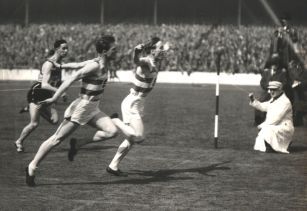
Bobby Quinn and Willie Jack
Bobby, Harry and Ronnie Whitelock all stayed in the sport as administrators and officials long after their running careers were over and all served their club and the wider sport in Scotland well. At club level Bobby served on the committee for many years and was elected on to the SAAA General Committee. He was further elected as West District secretary from 1976 to 1980. A very capable administrator he was also on several sub-committees and given additional tasks. For example in 1979 he was not only a member of General Committee and West District secretary, he was also a member of the General Purpose and Finance Committee, Convener of the Selection Committee and Equipment Officer for the West District. The following year he was also one of the Association’s auditors. Come the 1986 Commonwealth Games, and there was Bobby again – transport co-ordinator and in charge of training officials and administrators. You will note that one of the others on his small group was ‘H Quinn’. To a remarkable degree the twins overlapped as administrators for the SAAA
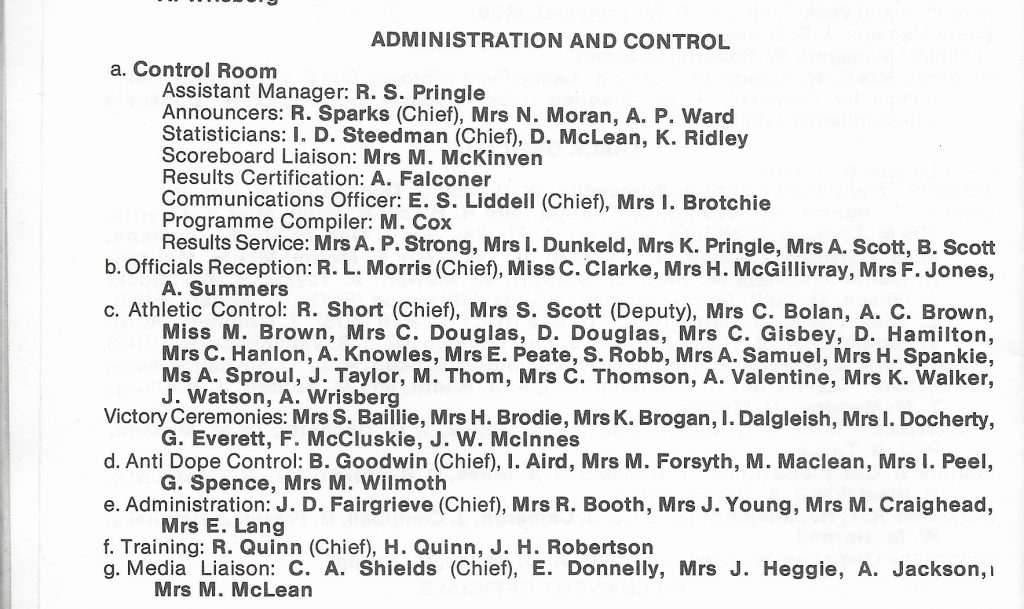
At the same meeting, Ronnie Whitelock was one of the timekeepers. It is always good when an athlete goes on to put something back into the sport and to see three sprinters from the same generation of the same club still putting something back more than 30 years after their medal winning days, is praiseworthy but all too rare. In the list of officials for 1979, Bobby was listed as a Grade One official for track judge, judge for jumps, for throws and as a marksman (now called a ‘starter’s assistant’); Harry was a Grade Two jumps judge and marksman. To some extent this reflected their future careers with Harry becoming slightly more of an administrator, while Bobby was much more seen in action as a judge, referee and clerk of the course. Harry made his debut on the General Committee in 1977 and became SAAA President in 1988/89.
The programme extract below comes from 1979, May 20th, at Scotstoun Playing Fields, where Bobby was SAAA Representative and Ronnie was a judge. Both liked to be where the athletes were. All the time he was on the various committees at club and national level, he was working his way up the officials ranks.
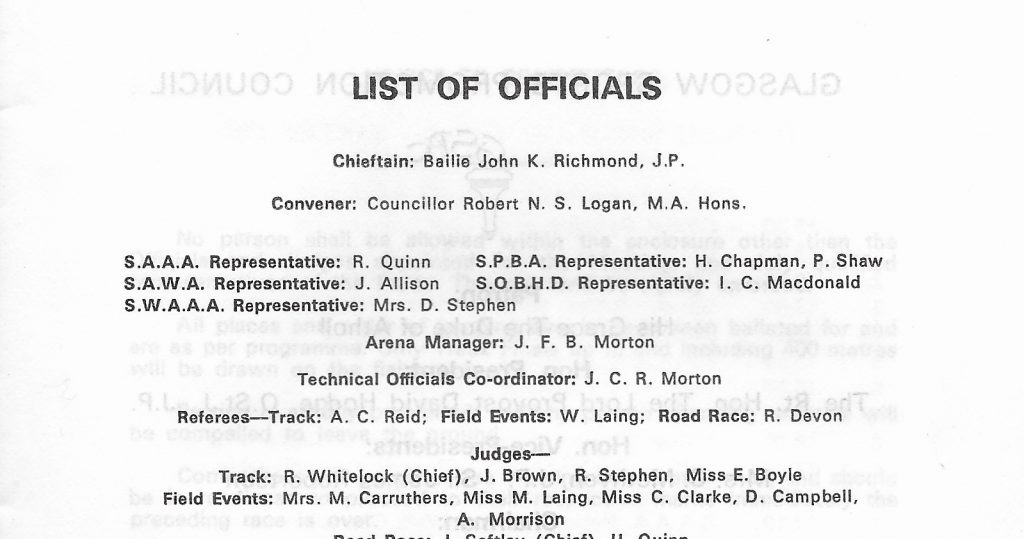
Bobby added timekeeping to his qualifications and then became a qualified referee for track events. When I was asked to organise the SAAA Decathlon Championships in 1978, I sought advice on the best men to help organise and Bobby was highly recommended as Arena Manager, a most important post for two days of athletics with some very temperamental athletes. He was a first class official for that particular job. He turned up at the few committee meetings held before the event as he would on the day of competition in his blazer and flannels, brisk of manner, every hair on his head in place. Of course he had a clip board too. There are many tales of the three decathlon championships I organised but the two ever presents were Bobby and David Morrison as field events referee.
He was by this time, a much respected official and officiated at events the length and breadth of the land. Always on the side of the athletes, he was never a soft touch. There was one decathlon, held in a Games year, where on the first day the national staff coach for decathlon asked if the 100 yards could be run the other way. It was at Grangemouth where there were starting lines at both ends of the straight and, of course finish lines at both ends of the straight. The staff coach wanted to give the guys the chance of a good time because selection was at stake, there was a head wind and there were no other decathlons that year for the athletes to get their points. I asked Bobby who agreed. Then later in the afternoon, there was a request for the long jump to use ‘the other pit’ so that the wind was behind them and it was a Games year, and …, and … Bobby agreed to that. The second day of the decathlon starts with the men’s sprint hurdles. On arrival I noted that the hurdles had been set out, the starter’s rostrum was in place, and it was all systems go. Then the staff coach appeared again and asked if we could run the hurdles ‘the other way’ because … It meant asking the ground staff to reposition every one of the hurdles right at the start of the day. Bobby agreed, then took me aside and said a few choice words that it was the last time we accommodated the coach! He was all for helping the athletes but there had come a point where the demands on the ground stewards and the timetable were becoming excessive.
Bobby officiated at Commonwealth, national, district, county and club championships; he officiated at sports meetings, highland gatherings and open meetings. He officiated mainly as a track official (judge, timekeeper, meeting referee) but to every one of these events he brought the same efficiency and professionalism. He also officiated at club events such as the classic road relay that was the unofficial start of the winter season – the McAndrew Relay.
Still officiating in 1990, he had ceased by 1995 and the page in that year’s SAF handbook read
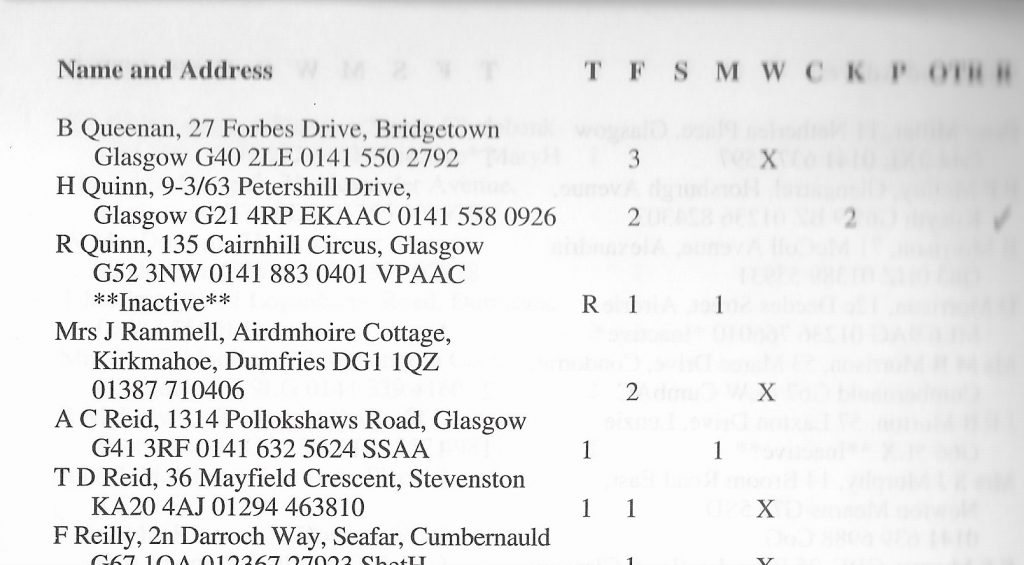
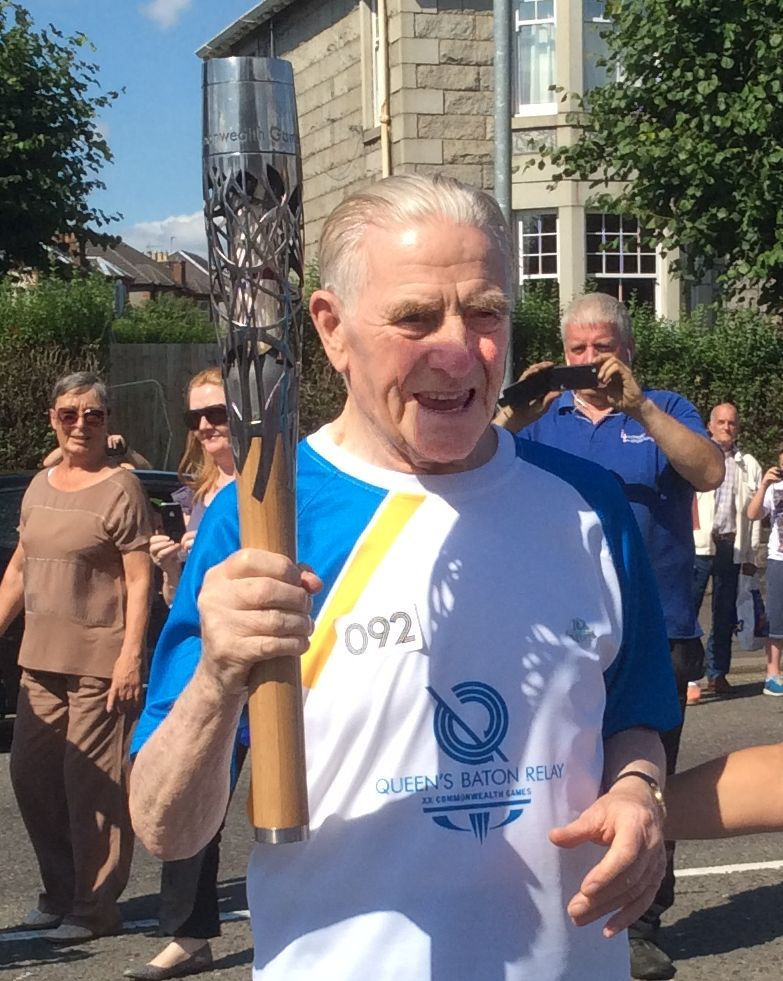
The picture above is of Bobby carrying the torch for the 2014 Commonwealth Games in Glasgow. There is more about this, and about Bobby’s life away from athletics in the excellent obituary by Jack Davidson below.
Bobby Quinn
Born: May 13, 1929; Died: October 28, 2019
BOBBY Quinn, who has died aged 90, was a leading Scottish track athlete in the 1950s and later a well known and highly regarded official. He was a versatile sprinter covering 100 to 440 yards, twice winning national championships in the latter event while collecting silver medals three times at 220 and a bronze in the 100.
In the colours of Glasgow’s Victoria Park, he was an important member of their highly successful relay teams with whom he claimed 15 national championship medals, including 12 gold. Although they claimed medals at three relay events, the 4×110, 4×440 and Medley (1x 880, 2x 220 and 1x 440) they excelled in the sprint version, winning seven consecutive titles from 1951 onwards with Bobby carrying the baton each time. He was the first to recognise the contribution of teammates of the calibre of Olympian Willie Jack, Ronnie Whitelock and Alan Dunbar among others and the expert coaching of Willie McFarlane, former double Powderhall Sprint winner.
Bobby’s excellent form was recognised with the award of two international vests, in 1954 at London’s White City for a combined Scottish/Irish team against England/Wales and in 1957 for a match in Dublin against Ireland. Domestically he also enjoyed success at many of the top meetings, including Rangers Sports, Glasgow Police Sports, Glasgow Highland Games and Edinburgh Highland Games at Murrayfield where he featured in the Glasgow relay team competing against rivals from Birmingham, Manchester, Edinburgh etc.

After competing he took a break from the sport but later made an important contribution as an official for more than 30 years as both a committee member of Victoria Park and secretary/treasurer of the West District of the SAAA. He was very involved in the preparations for the initial Glasgow marathons and at the 1986 Edinburgh Commonwealth Games was transport co-ordinator. In 2014 he was delighted to be given the honour of carrying the Commonwealth Games baton along Paisley Road West, days before the opening ceremony.
On the track, seasons 1954-56 were particularly memorable. In 1954 he was a member of the club’s relay teams which claimed gold in all three events in the national championships, a feat which it is understood has never been repeated. At the same time he won his first individual medals, at 100 and 220, with the club awarding him life membership for these achievements.
In 1955 and ’56 he won individual gold over 440 yards at the national championships, on both occasions against the much more fancied J.V. Paterson who in 1957 would win the event at the World Student Games in Paris. The first of those races was described in the Scots Athlete magazine as “ the toughest, closest and most exciting event of the championships … Paterson leading off the final bend but with 50 yards to go Quinn closed the gap and his burly chest got to the tape first,” while his 1956 triumph was reported as a superbly judged effort from the outside lane.
An injury at work led to his retiral in 1958; as a highly competitive athlete he only wanted to race if able to give his best.
Robert Quinn was born in Detroit, a twin of Harry also an athlete, to parents Benjamin and Elizabeth who had emigrated from the Gorbals. This unfortunately coincided with the Depression resulting in their return when Bobby was three to Glasgow where his father worked in manual jobs. There were another five brothers, Benny also born in US, and Joe, John, Tony and James. The family initially lived in the Gorbals, then Drumoyne and latterly Penilee with Bobby attending St Gerard’s school in Govan.
National service in the REME near Reading followed during which his running career began. Once demobbed, Victoria Park’s distance running champion Ian Binnie who worked alongside Harry, arranged for Bobby to join the club in about 1950, paving the way for athletic success.
He worked as a motor mechanic in Hillington, mostly for the Scottish Development Agency and in 1957 married Marie Kilpatrick, also from Glasgow. They enjoyed a happy marriage of almost 50 years till Marie’s death in 2007 during which they had five children, Robert, Tony, Elizabeth, John and James. In 2009 he married Anne with whom he enjoyed his latter years, the couple regularly going on cruises to the Norwegian fjords and the Mediterranean.
In retirement he took up bowling at Paisley’s Hawkhead Club where he had success on the green while another sporting interest was Celtic where he had a season ticket. His faith as a member of Our Lady and St George’s Church was important and he assisted the St Vincent de Paul Society in the parish. He liked to make a contribution in every aspect of life and his humility and sense of fun endeared him to all. Over his final months he was extremely well cared for in Erskine Park Home.
He is survived by his wife, sons, grandchildren Hamish, Michael and Charlotte and brothers John,Tony and James.
JACK DAVIDSON
